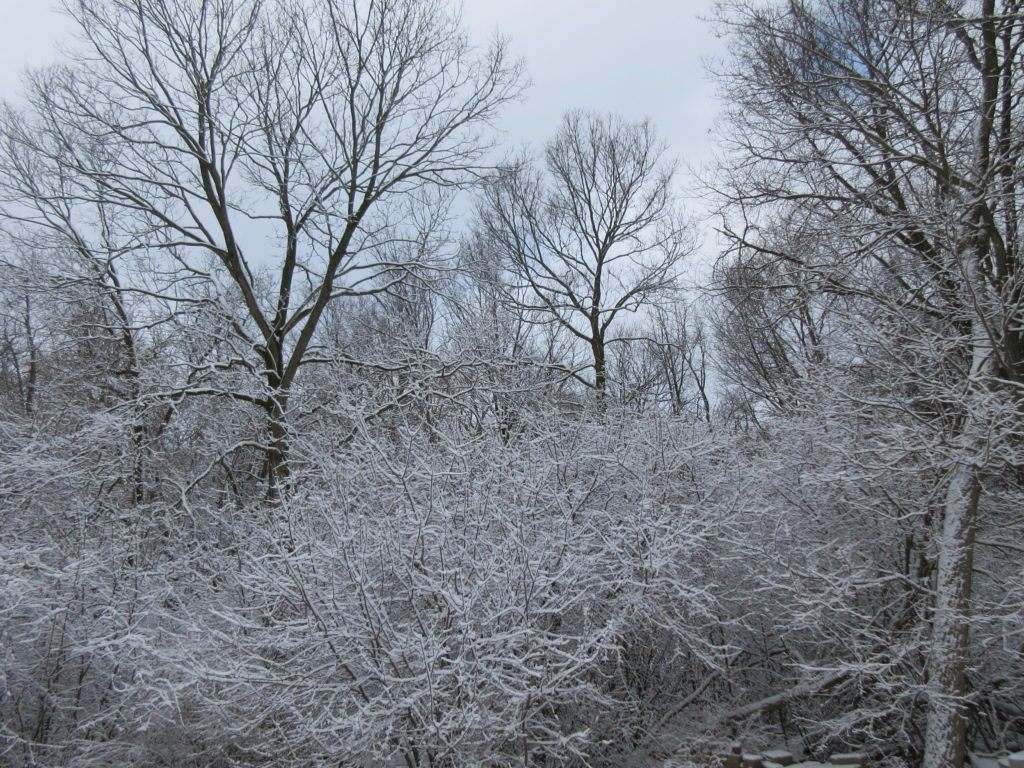Enriching lives through beauty, education, and the arts.
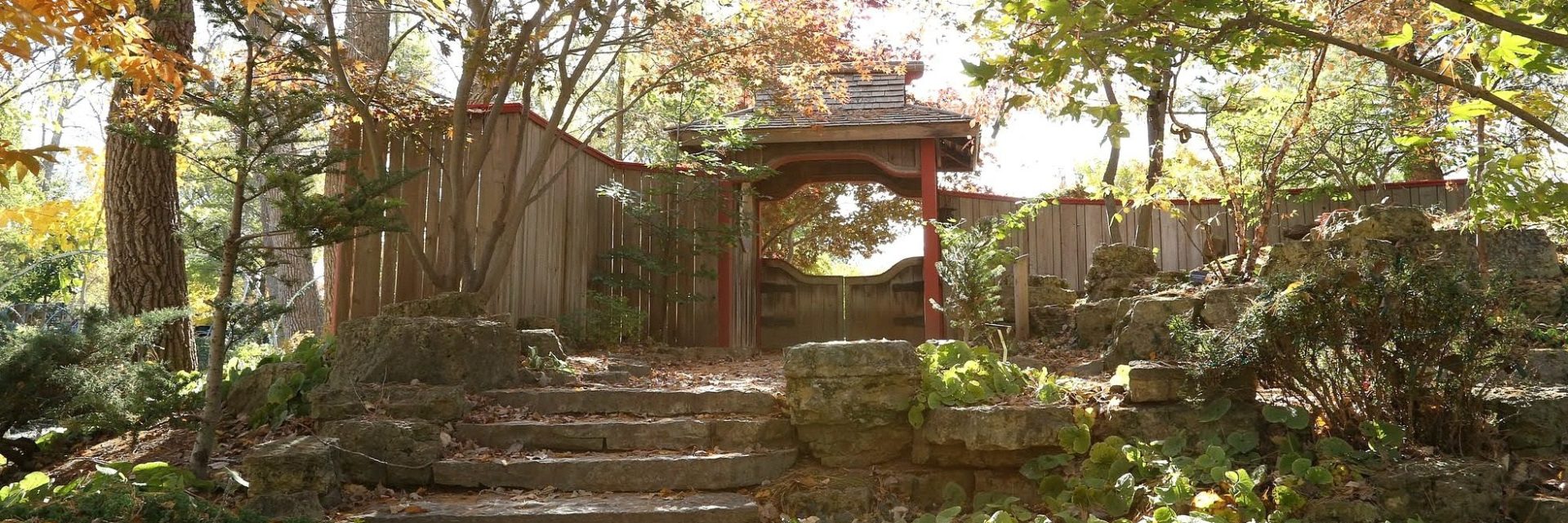
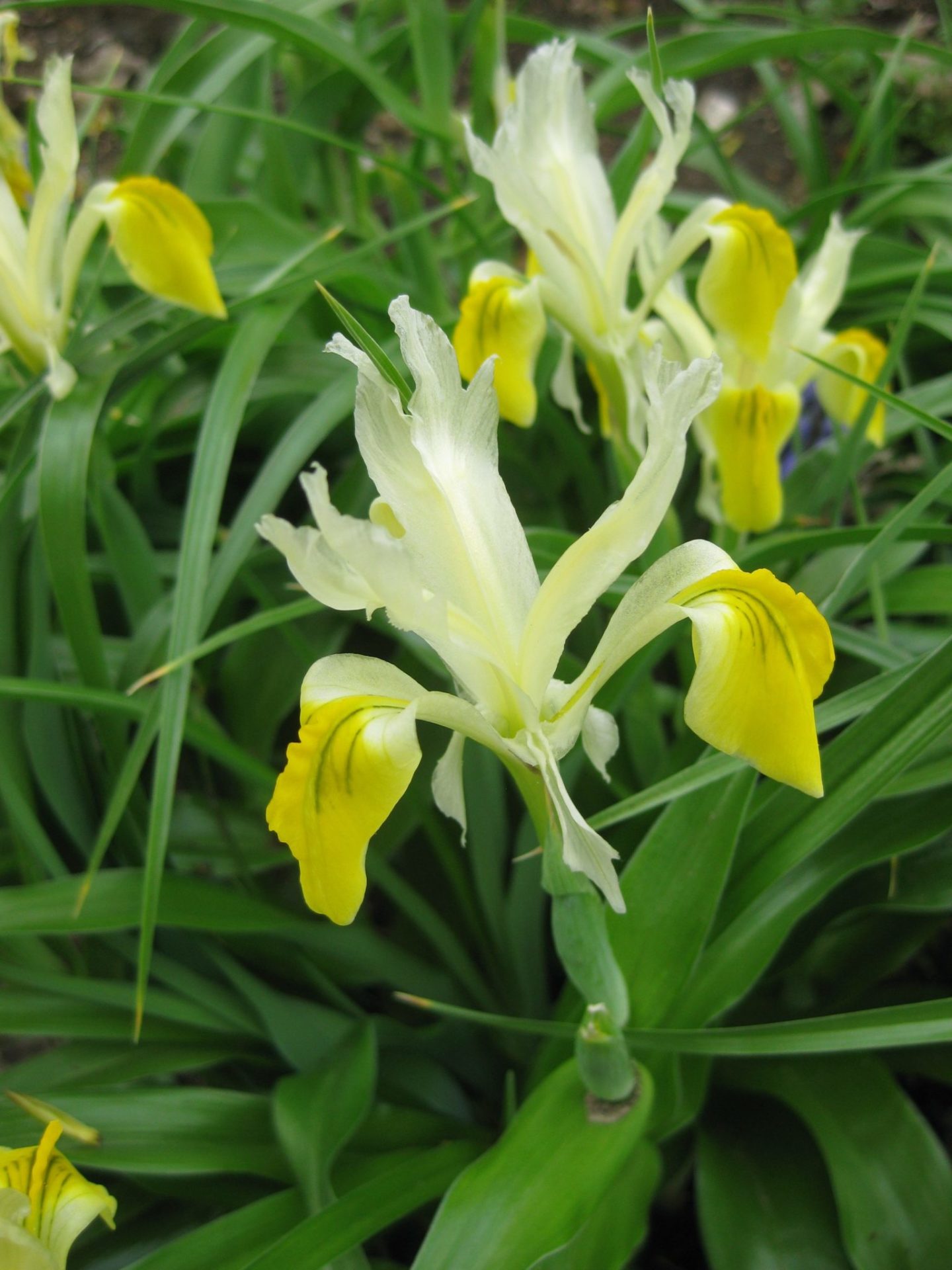
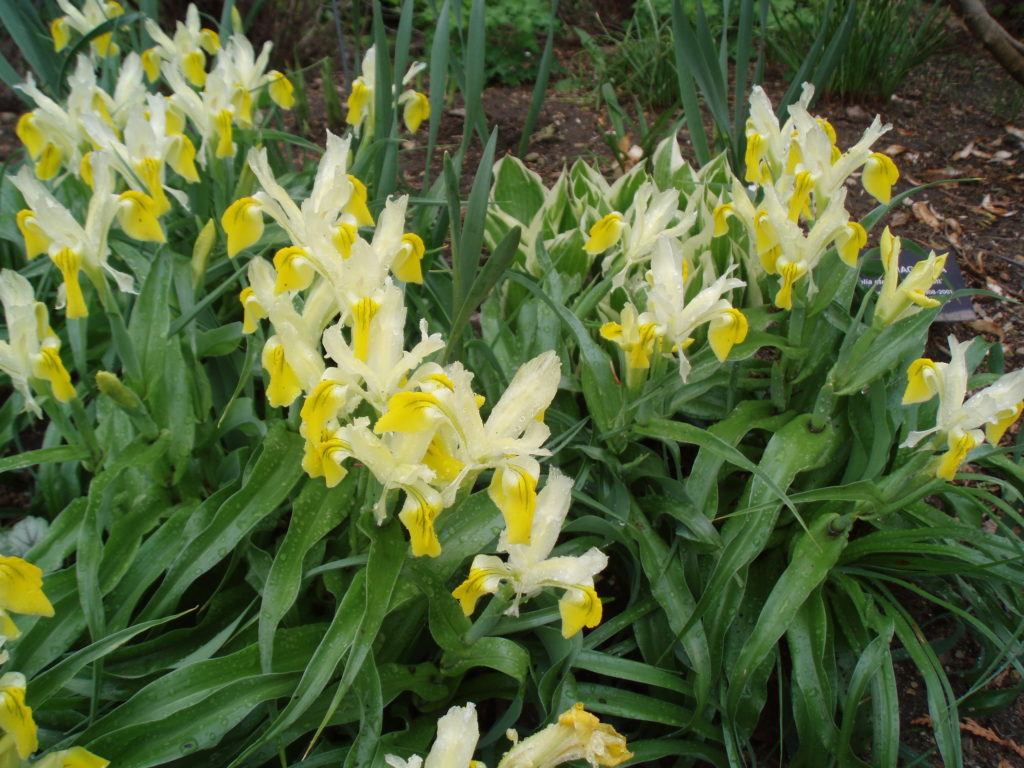
Today was beautiful and sunny with a high near 60 degrees F. Plants are really starting to awaken out in the gardens now. Daffodils (Narcissus) are starting to bloom with many of our “minor bulbs” like snowdrops (Galanthus), winter aconites (Eranthis hyemalis), striped squill (Puschkinia libanotica) and Siberian squill (Scilla siberica) are still going gang-busters. The bulbous iris (Iris bucharica) that I’m featuring here is a May bloomer and we have many of them out in the gardens. I always enjoy seeing them and they’ve come perennialized nicely out in the gardens. Also called Juno iris, this plant is native to temperate Asia and is hardy from zones 4-9. It’s called corn leaf iris because the glossy green foliage is arranged alternately in a stacked format, a lot like corn leaves! Blooming in full sun or part shade, this iris only gets about 12″ tall and likes good drainage. We have some nice groupings in our shade garden where this bulb gets ample light in the afternoon and with the overhead canopy weeks away from totally “foliating”, plenty of light reaches this plant. This iris gets its species name from the town of Bukhara, Uzbekistan which is in the native range for this bulb. The flowers have white standards and yellow falls which are botanical terms but ultimately the yellow and white combination is readily visible. The variety ‘Princess’ is supposed to be fragrant but the primary appeal of this bulb are the flowers which typically last between 2-3 weeks. This plant then goes dormant with tulips and can be cut to the ground as the foliage turns yellow in June.
We had another great day out in the gardens with both staff and volunteers. The grounds staff includes Larry O., Big John, Bobby K. and myself. Janice popped in briefly as well. We have plenty of work going on including preparations for the Wellness Garden, garden tidying, equipment repair, etc. Our volunteers today included Jenny, Kathy P., Alan, Kay, Myrt, Gena, Nancy, Urban, Dennis, Bill O., Maury, Barb C., Nancy and many others. There was plenty of gardening going on as well as path work, pruning, equipment work, errands and label preparations. It was another busy day (which I’ll likely add to all my blog postings for the next 6+ months.).
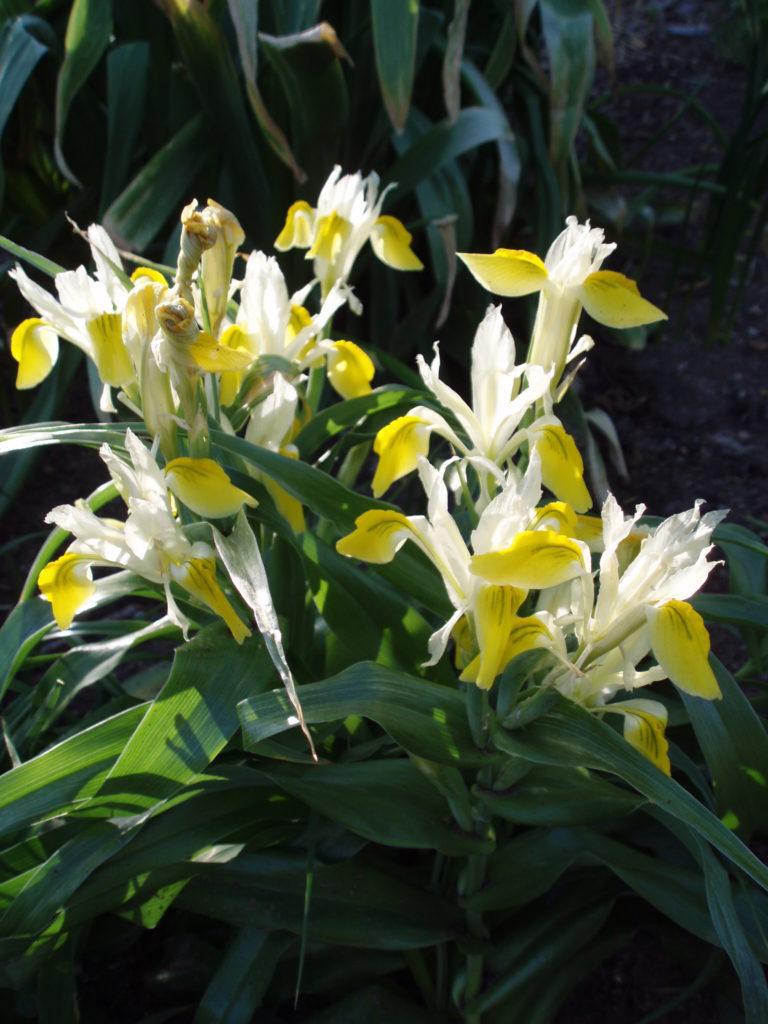
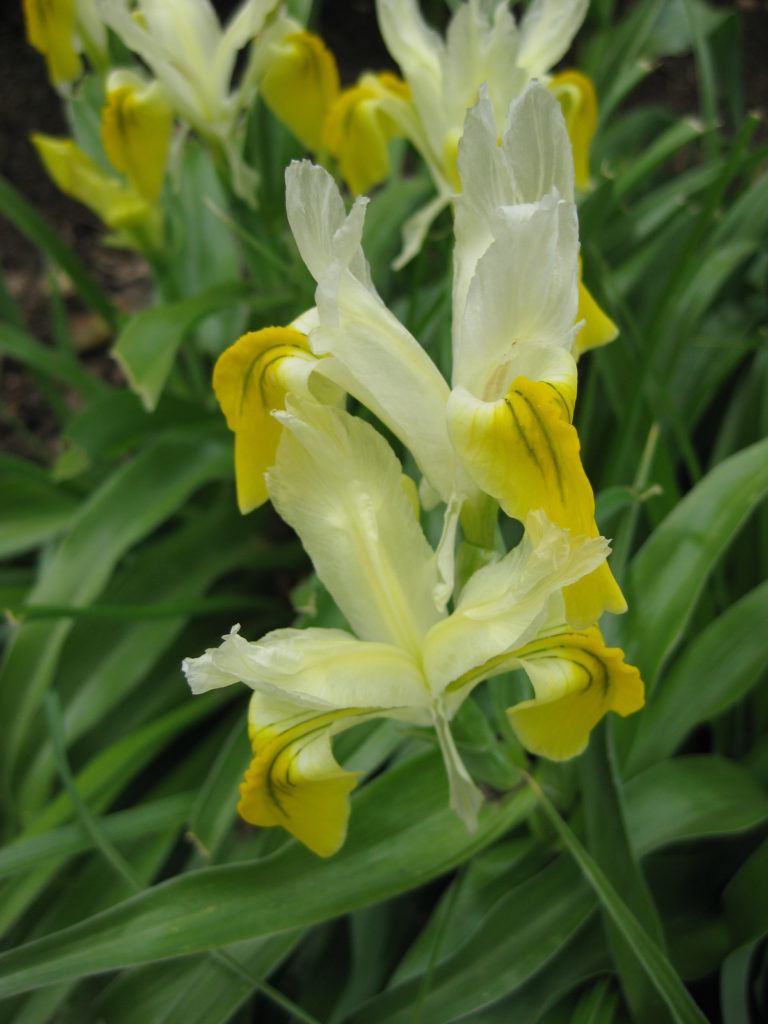
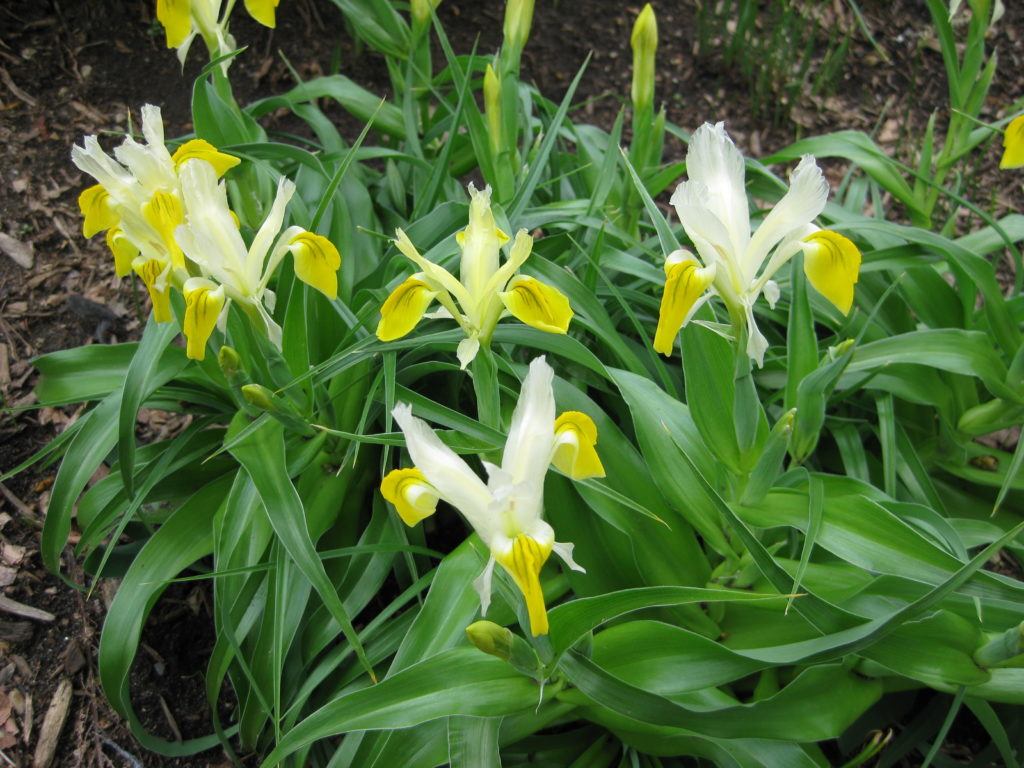
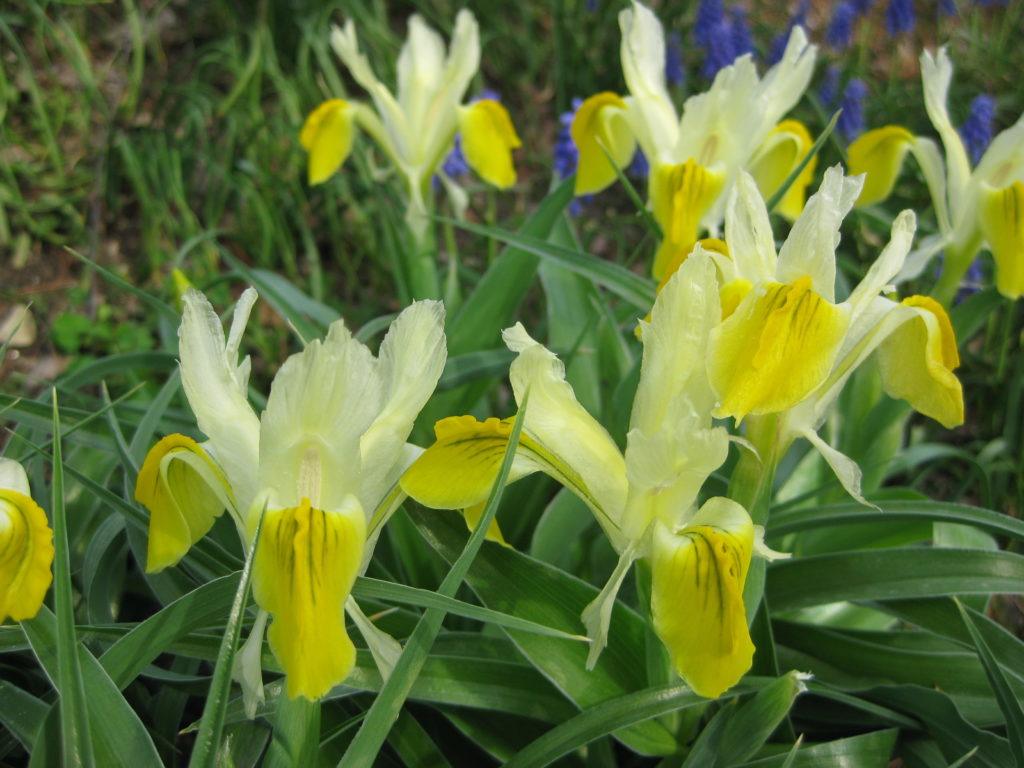
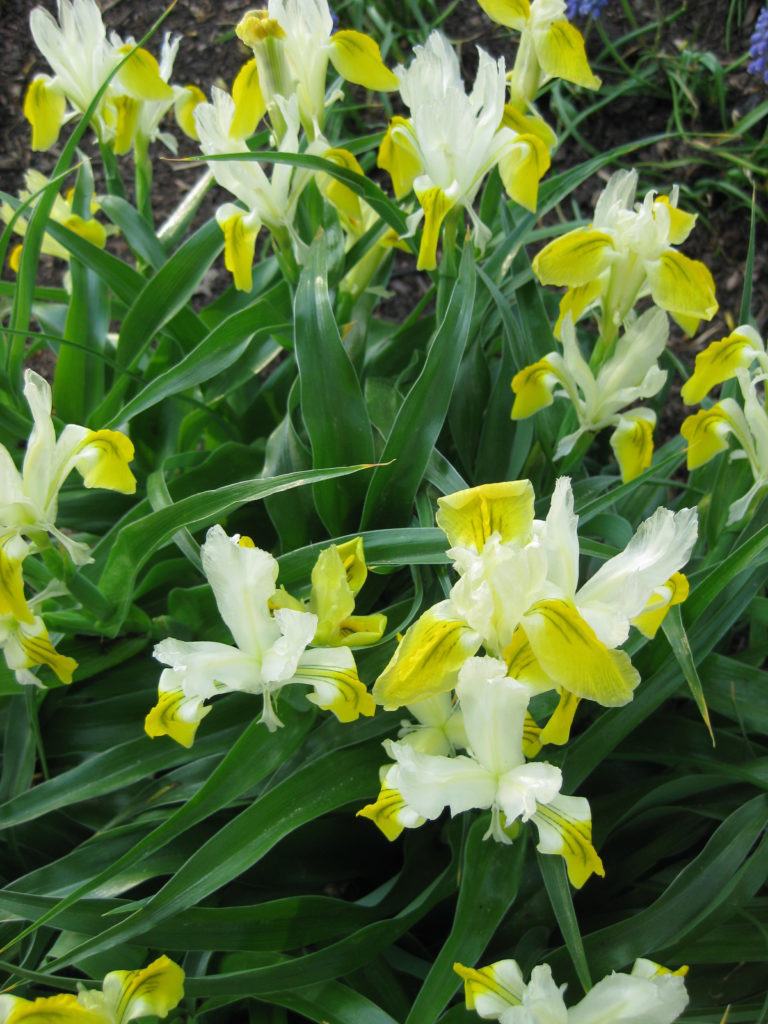
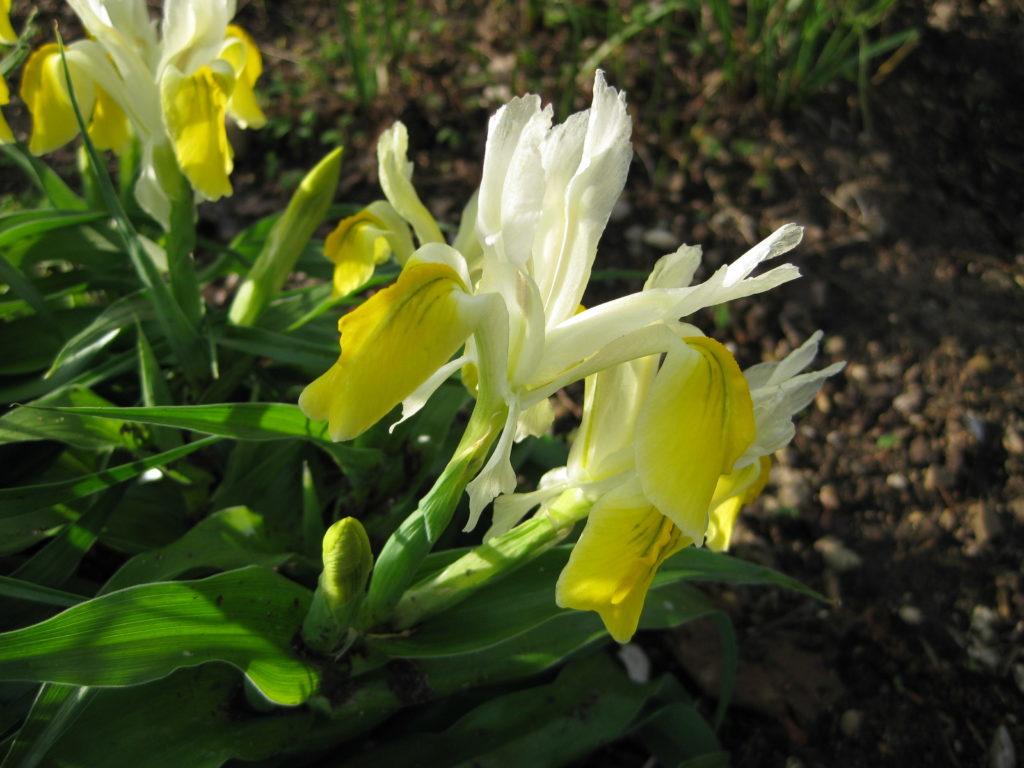
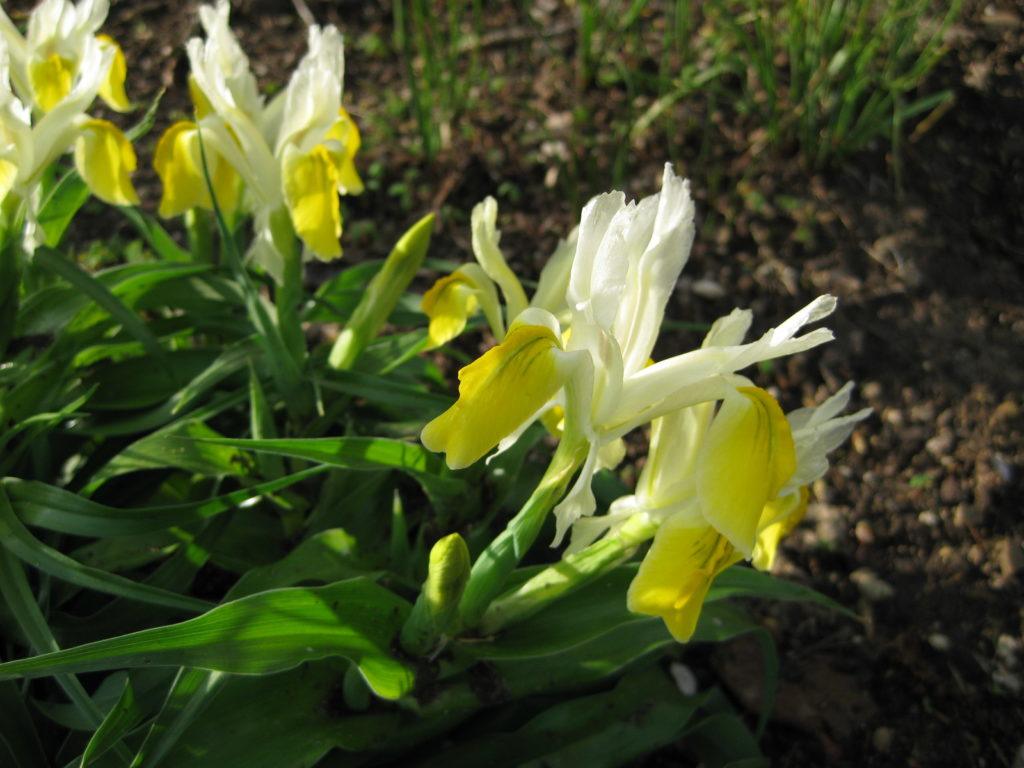
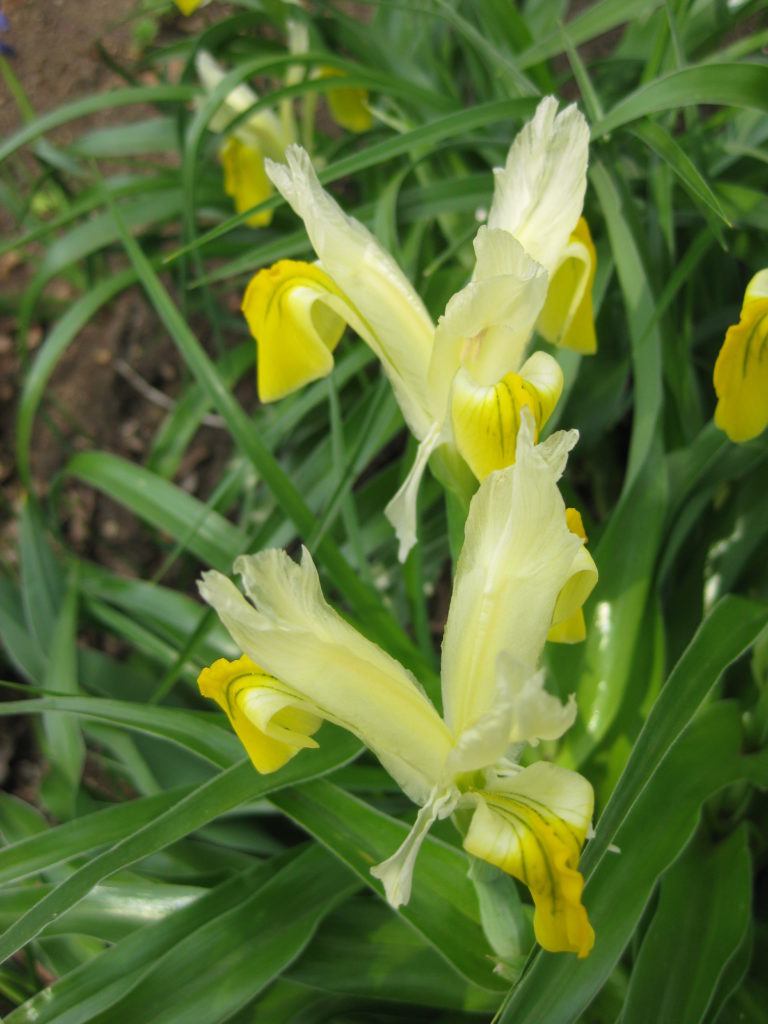
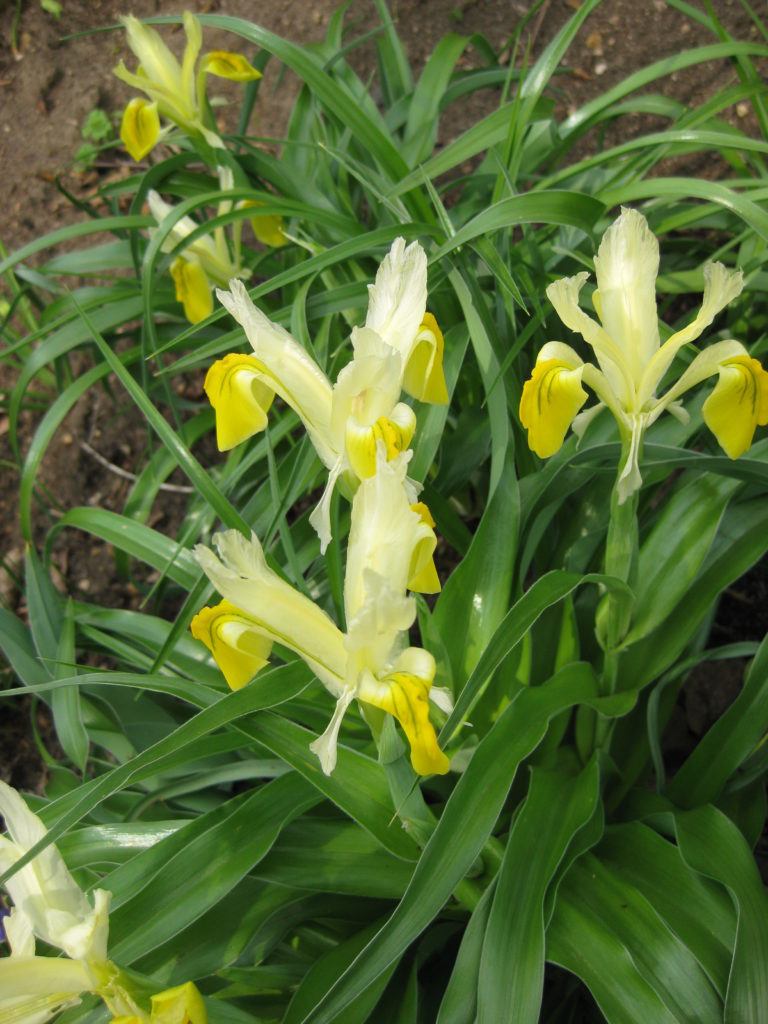

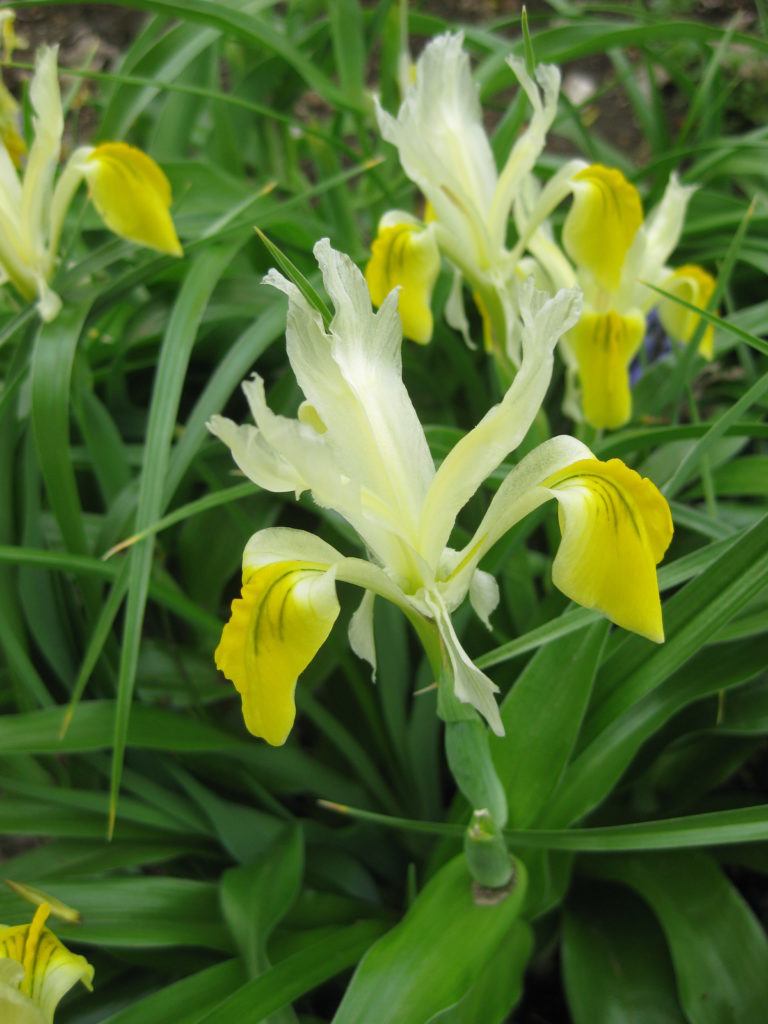
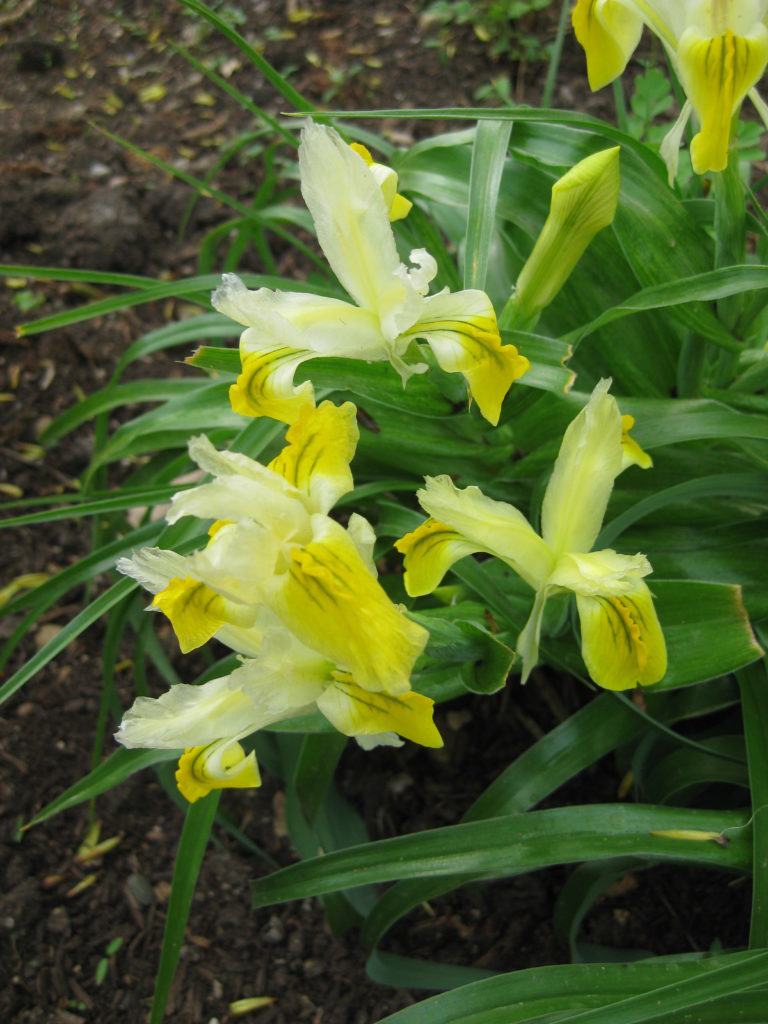
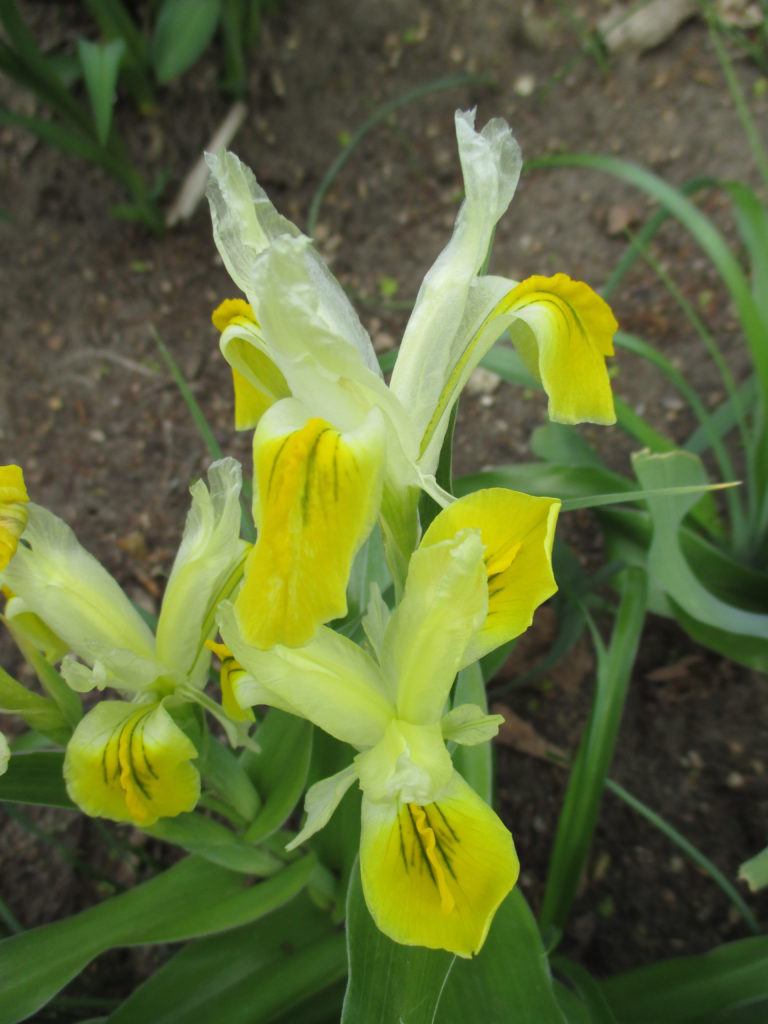
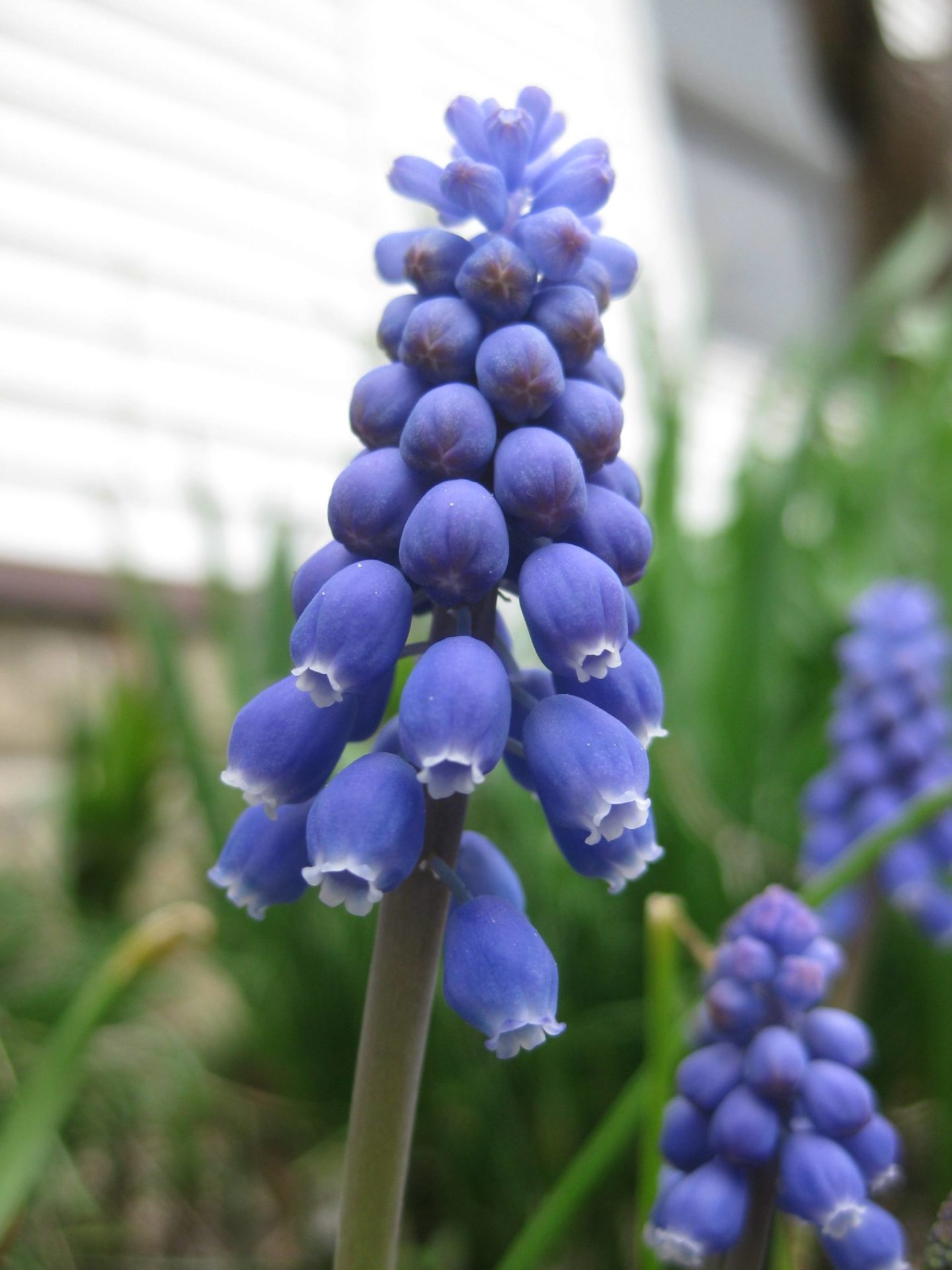
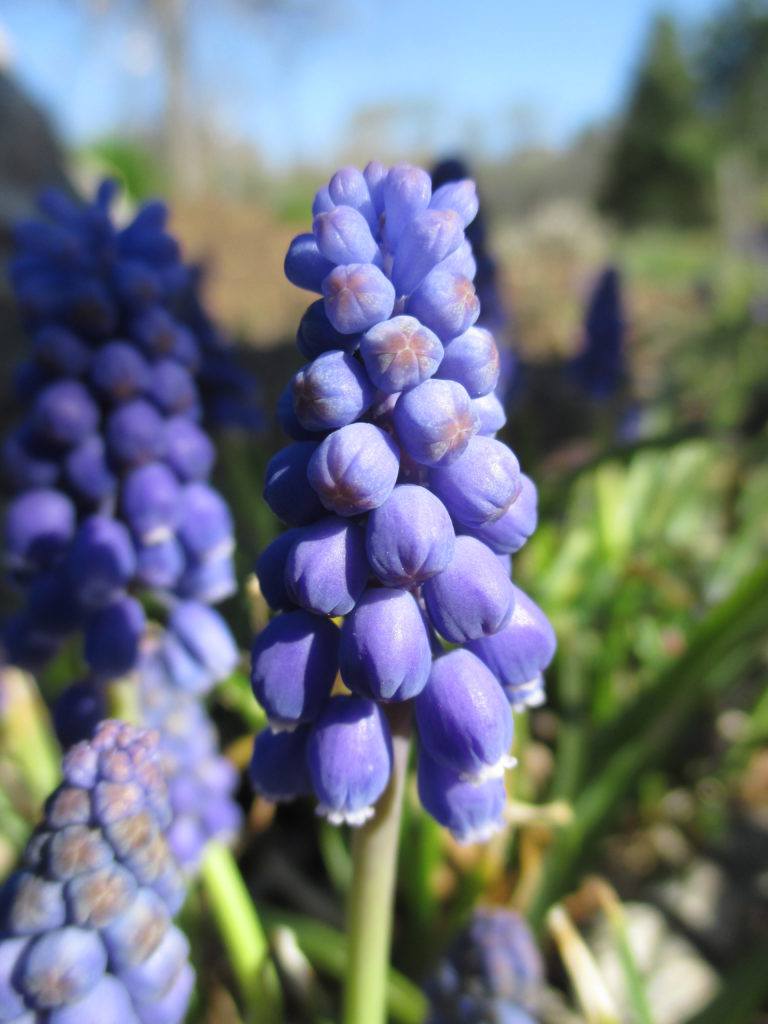
It was another productive day at the gardens. The grape hyacinths (Muscari sp.) pictured throughout this blog are still 2-3 weeks away from blooming but are one of my favorite bulbs (native to Eurasia) for incorporating a nice “cooling color” in to the spring garden. The two photos above feature Muscari armeniacum. With so many bright colors of daffodils (Narcissus) and tulips (Tulipa) in the spring garden, the utilization of vast drifts of this bulb and its many species and colors offers a nice effect. The shades of blue available are spectacular in the spring garden. Years ago we did a little grape hyacinth collection and accumulated 20 or so species and varieties. There are a lot more available now. We incorporate Muscari throughout the garden and usually plant these bulbs in drifts of 25-50 bulbs (3″ deep and 3″ apart) in October, resulting in great impact the following spring. Their early bloom time also makes them prime candidates to be used in areas considered shady if deciduous trees are involved… In essence, enough sunlight is coming through the tree branches in April and May for this bulb prior to leaf canopy emergence. These grape hyacinths then “do their thing” and finish up (going semi-dormant) as the canopy fills in and creates more shade. See many of the photos down at the bottom where drifts are placed throughout our shade garden where hostas ultimately emerge and fill the space as the grape hyacinths go dormant. Muscari are also tolerant of deer, clay soils and being planted under walnuts. The most common (and affordable) selection we use is Muscari armeniacum which perennializes very well out in the gardens. This species does also send up some “grass-like” foliage in late summer through early fall for additional photosynthesis so it is important to know to expect this foliage which can be obscured by surrounding perennials. Don’t cut it back though! It will remain green well in to winter. Do more research on this fun bulb and look for it this fall for installation in areas where significant color is warranted.
We had another productive spring day. Our busy grounds staff of Larry O., Cindy, Big John, Larry H., Terry and I had plenty of action. There were plenty of projects out in the gardens. I went on a run to pick up pansies for our Pansy Sale that is held in conjunction with our Bagged Compost Sale this Saturday from 8 am until 12 noon at the Horticulture Center. The sale will continue every Saturday through our Spring Plant Sale while supplies last. Our volunteers included Bobby K., Kathy P., Kay, Steve, Urban, Dr. Gredler and we also saw Maury, Gary, Hal and Iza for our Garden Development & Maintenance Committee meeting. It was another great day out in the gardens!
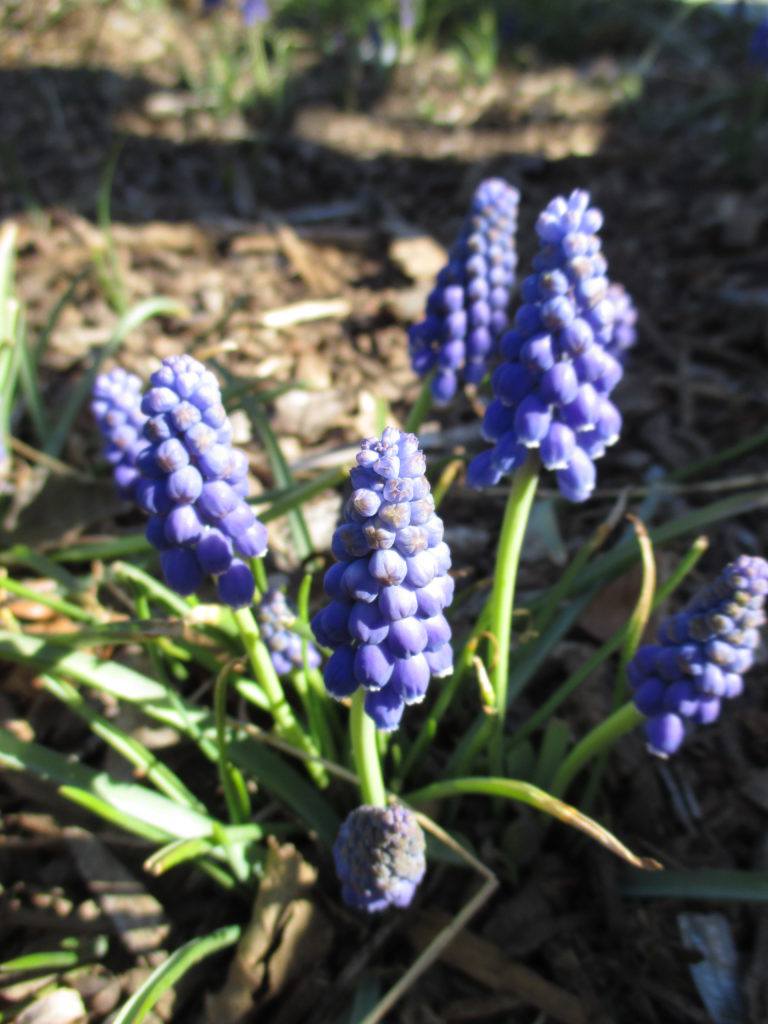
Muscari armeniacum (above)
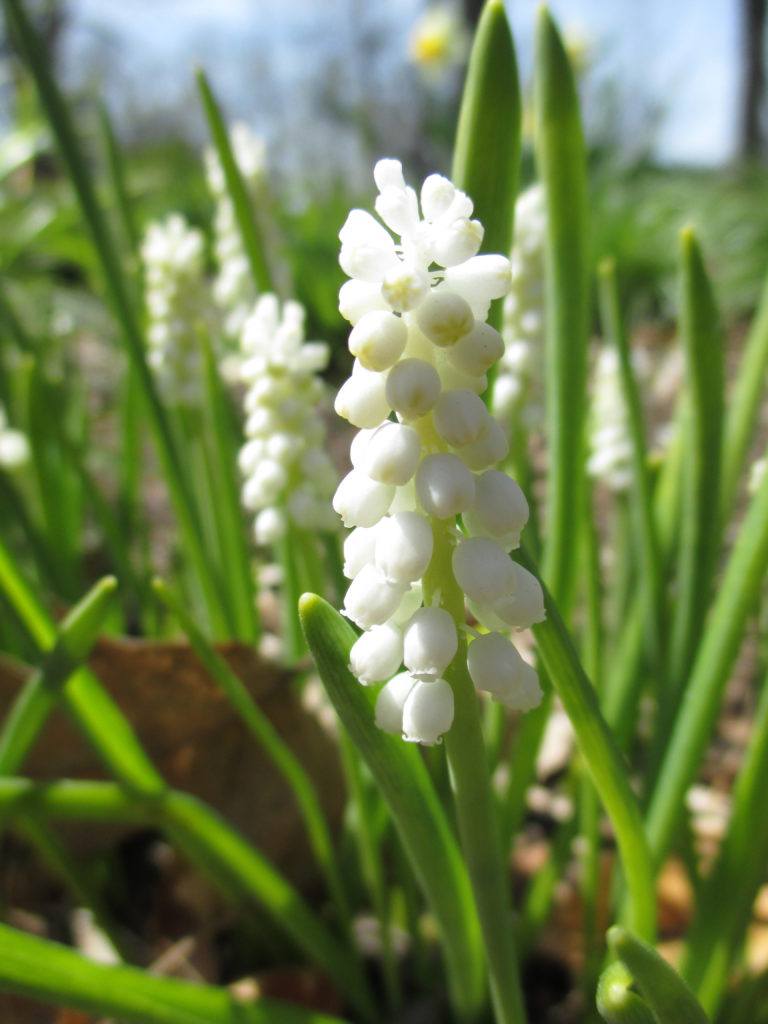
Muscari botryoides ‘Album’ (above and below)
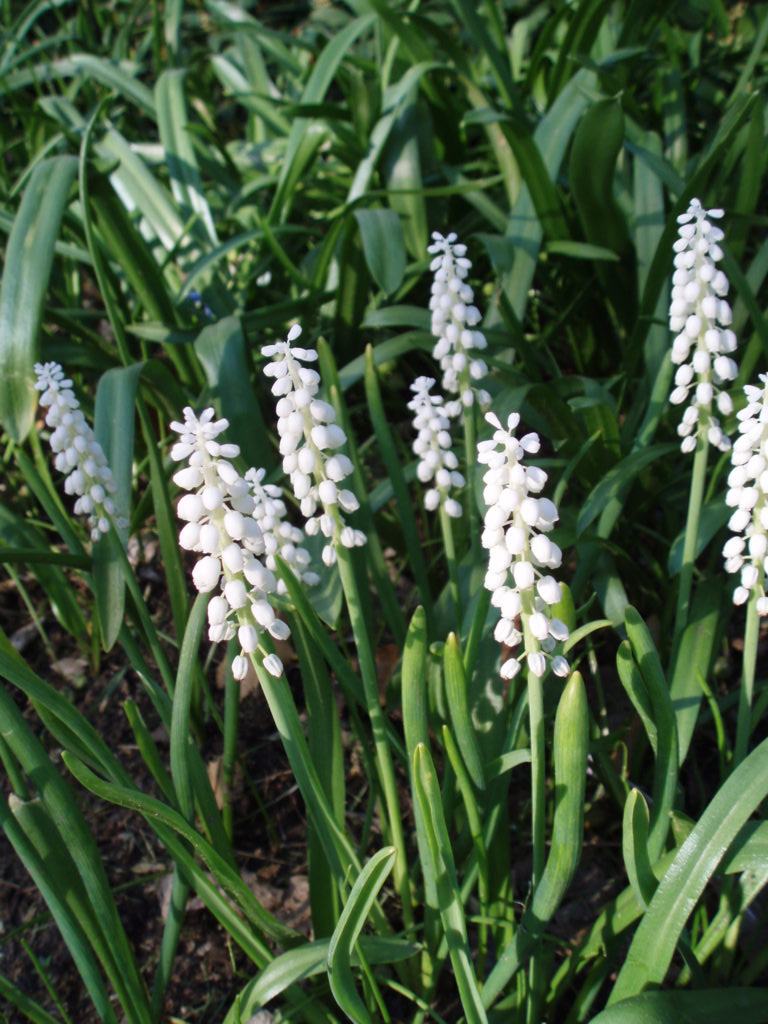
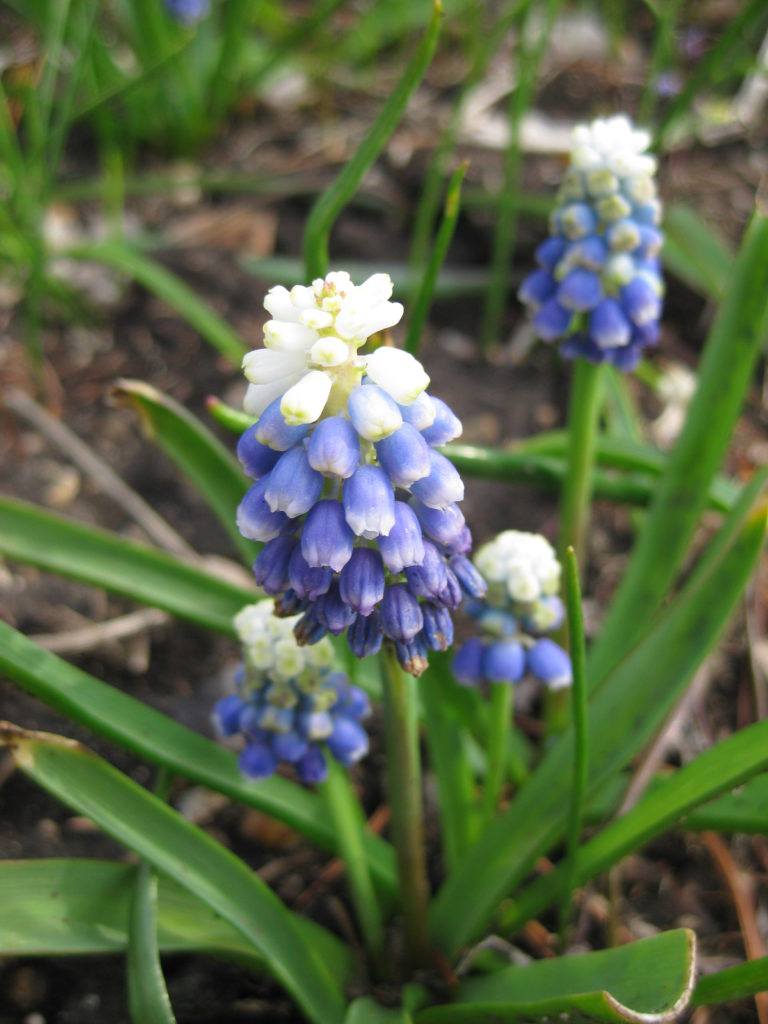
Muscari armeniacum ‘Mount Hood’ (above and two below)
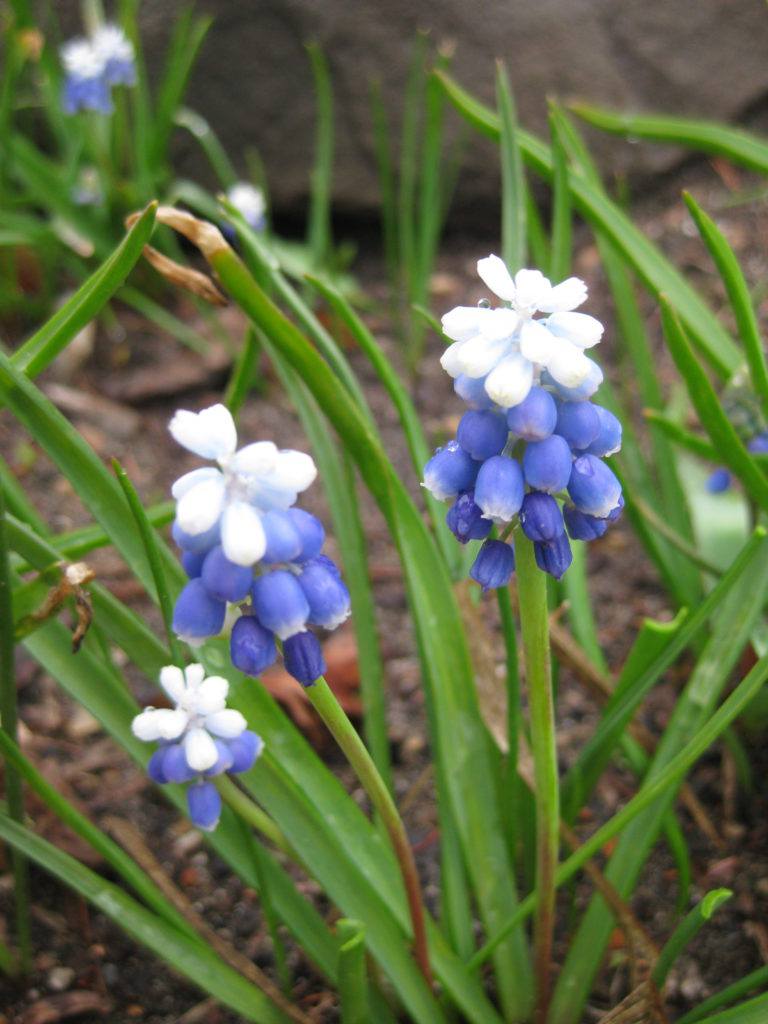
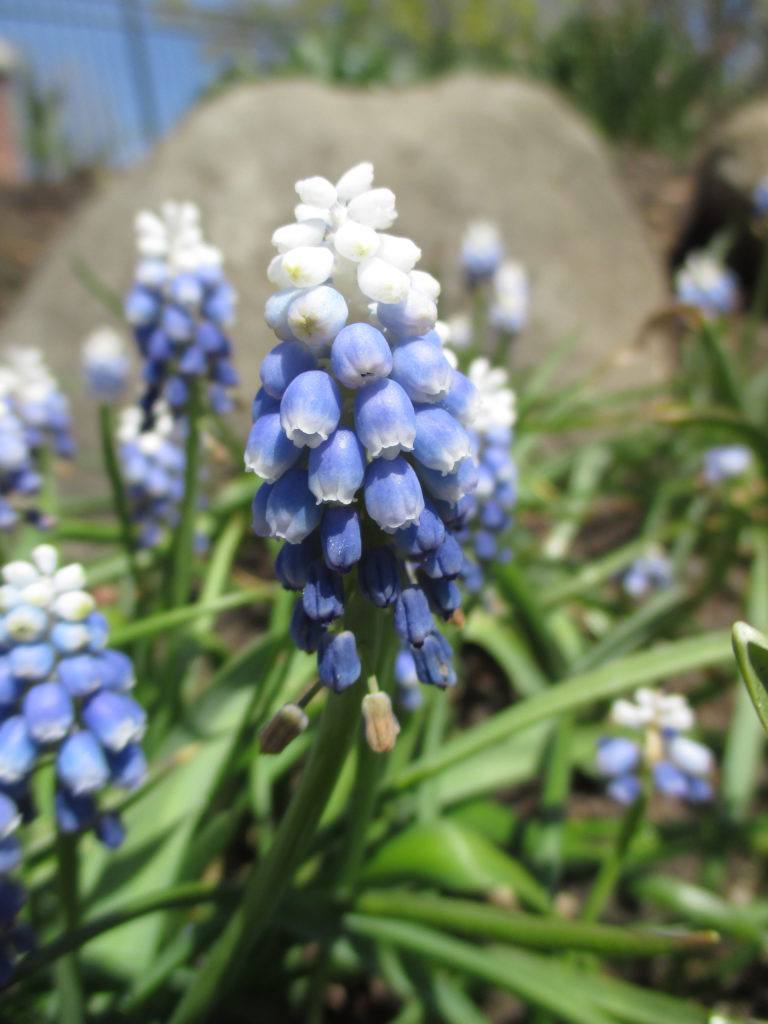
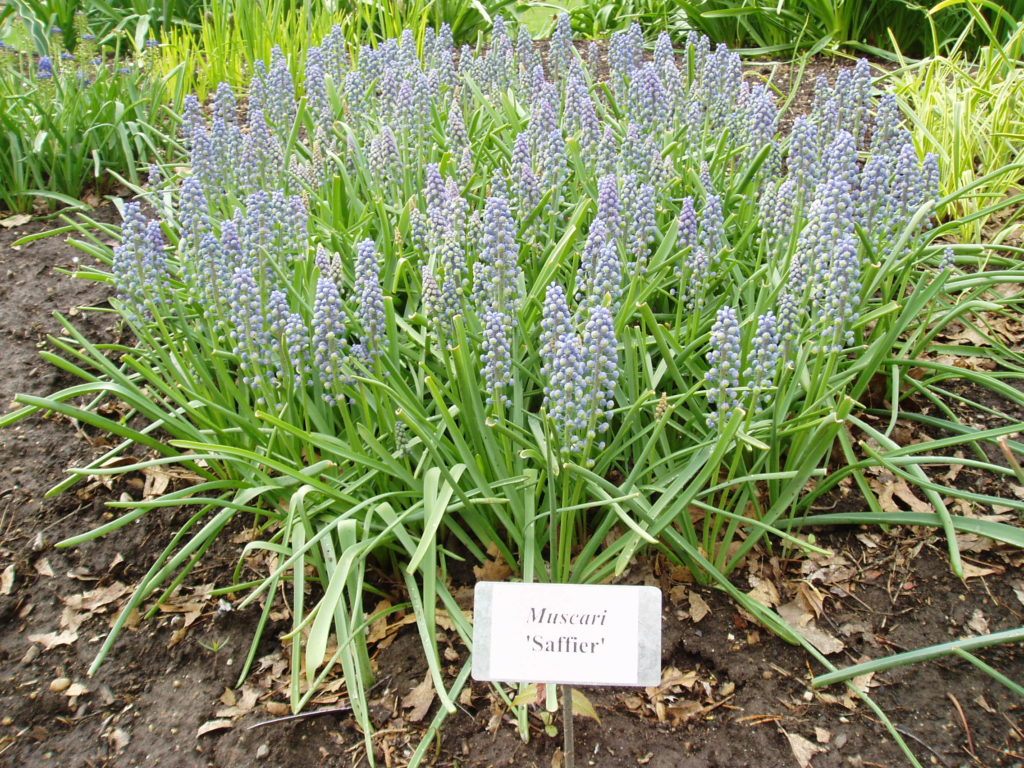
Muscari armeniacum ‘Saffier’ (above)
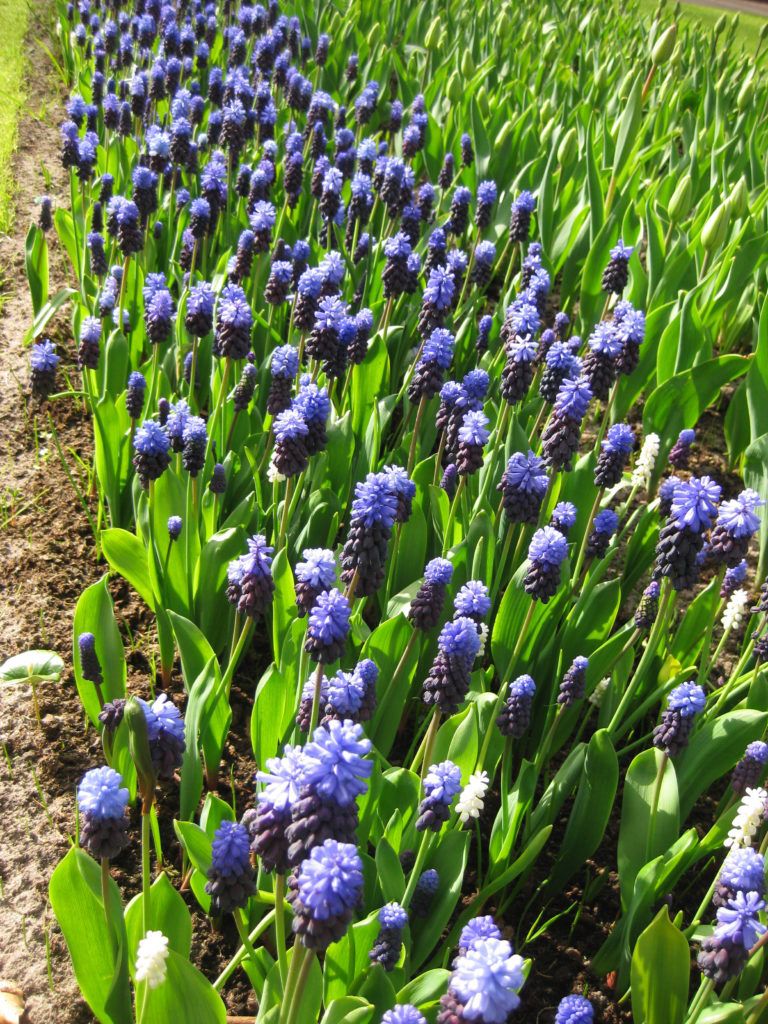
Muscari latifolium (above and two below)
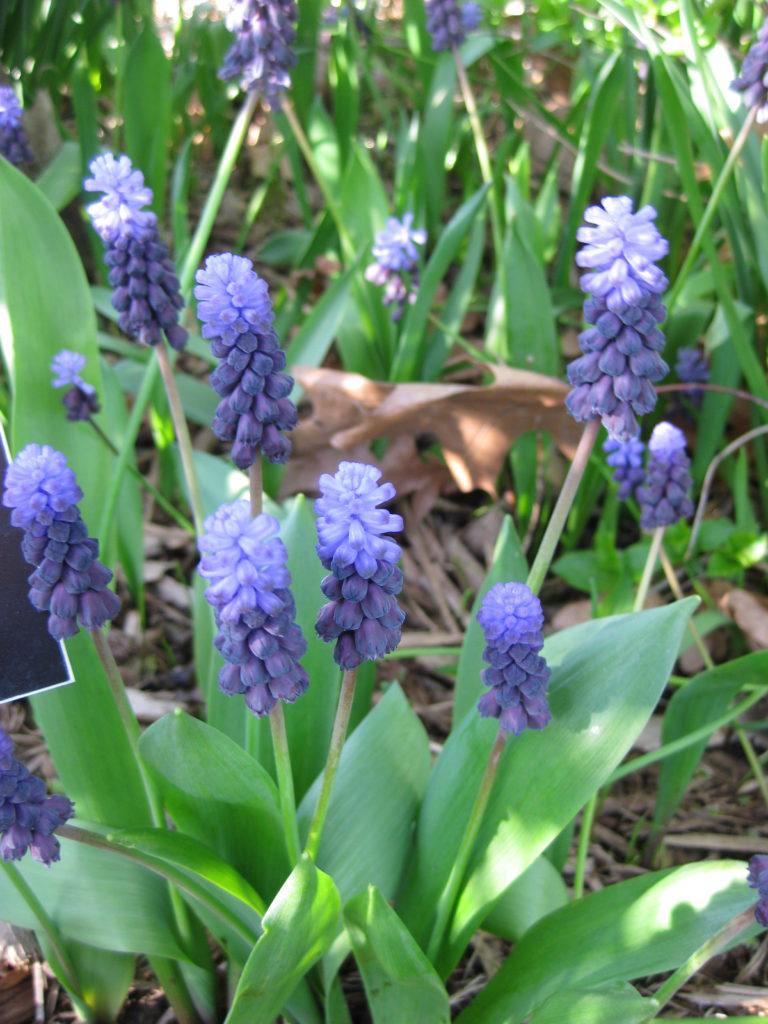
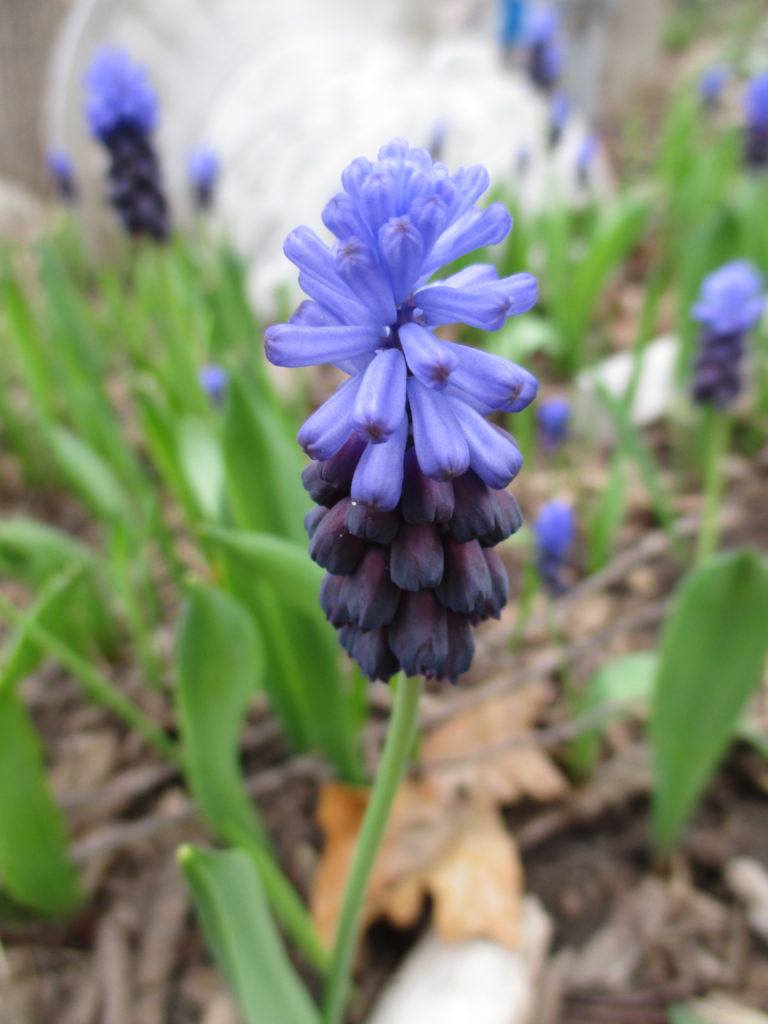
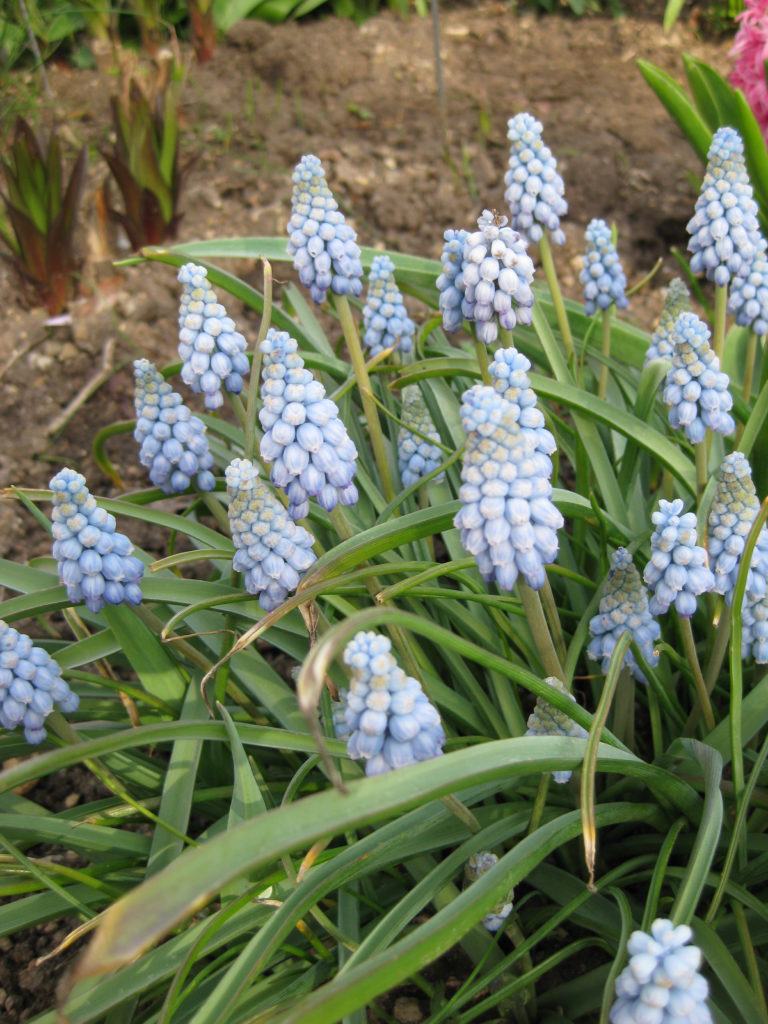
Muscari armeniacum ‘Valerie Finnis’ (above and three below)
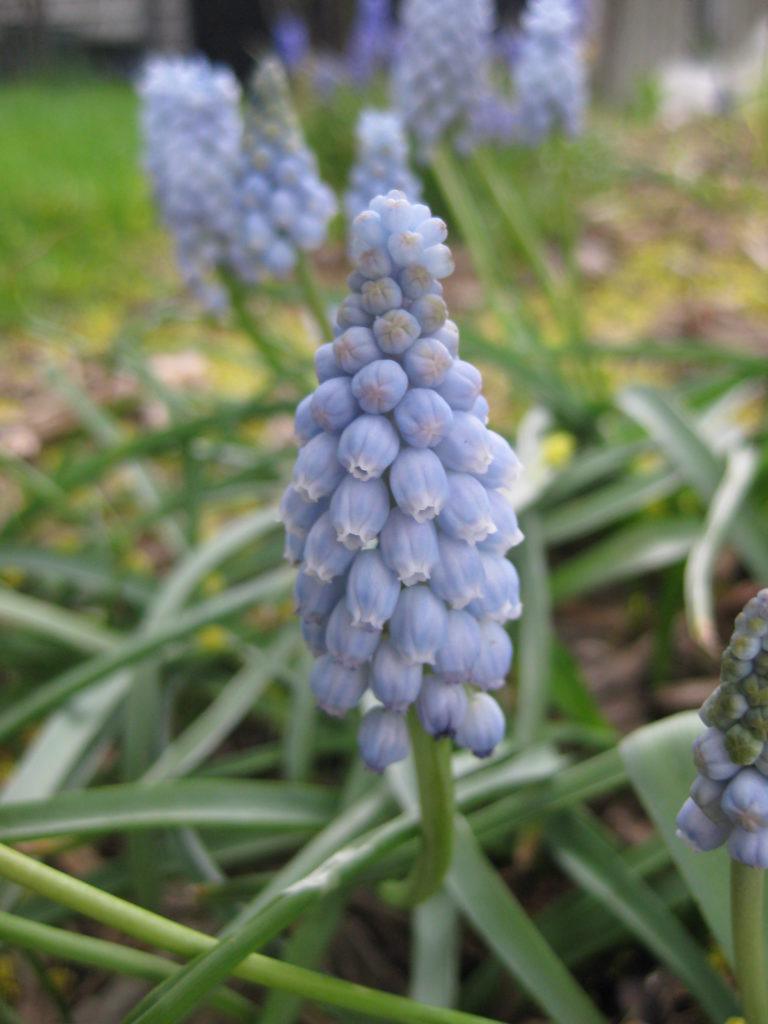
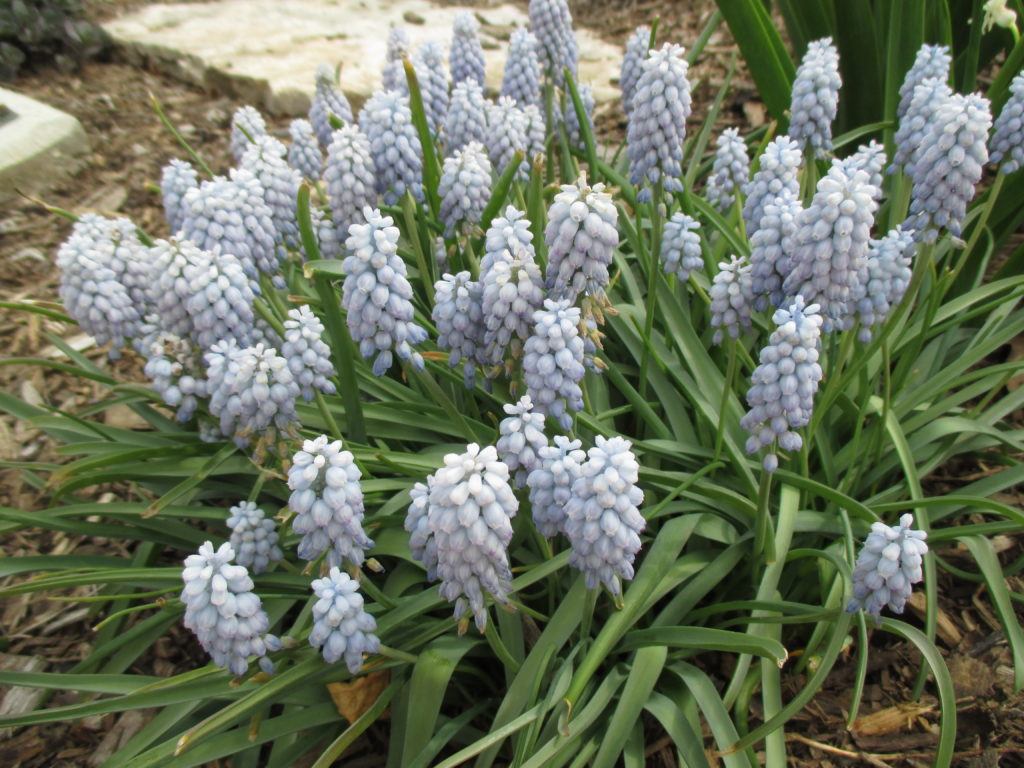
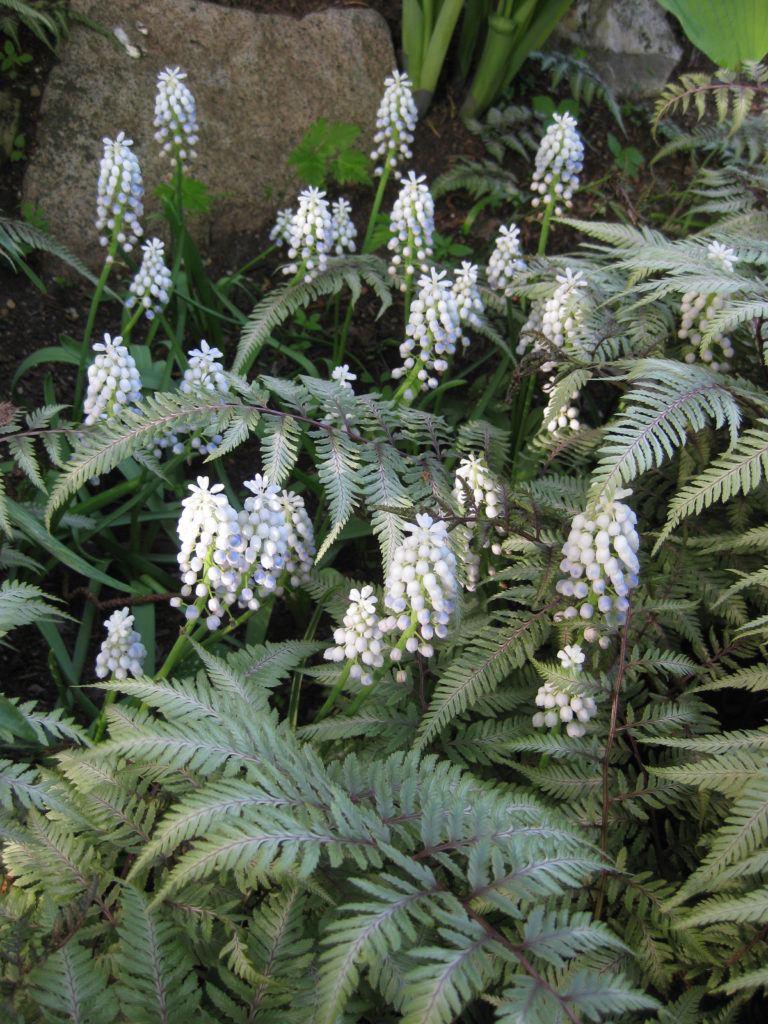
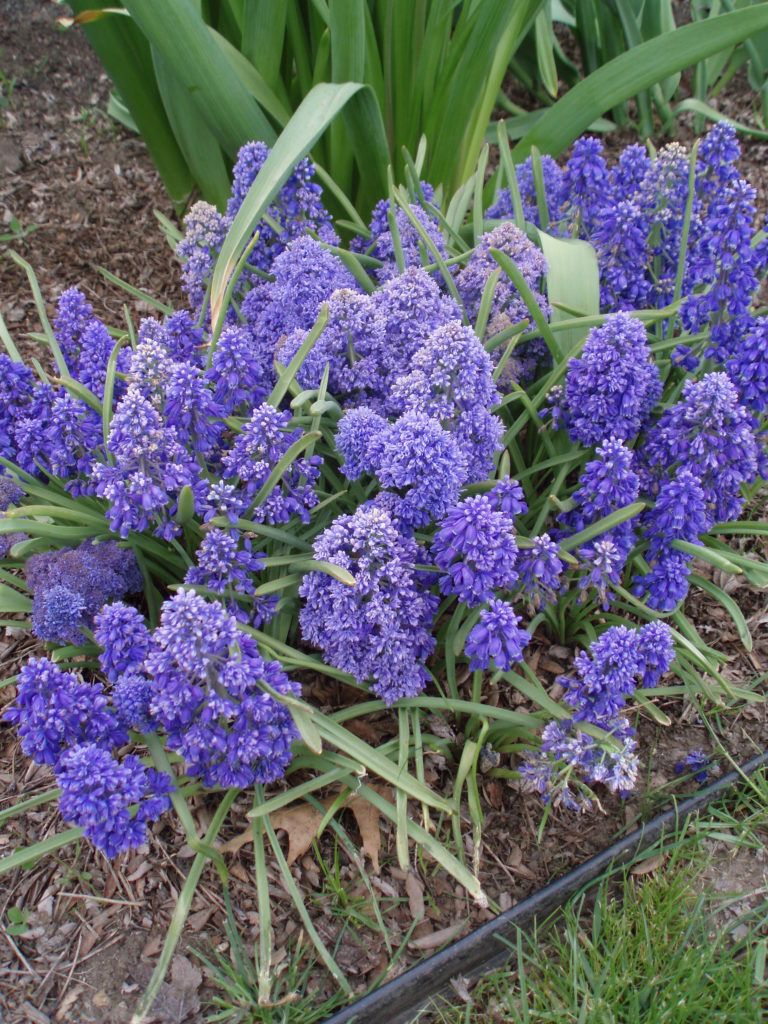
Muscari armeniacum ‘Fantasy Creation’ (above)
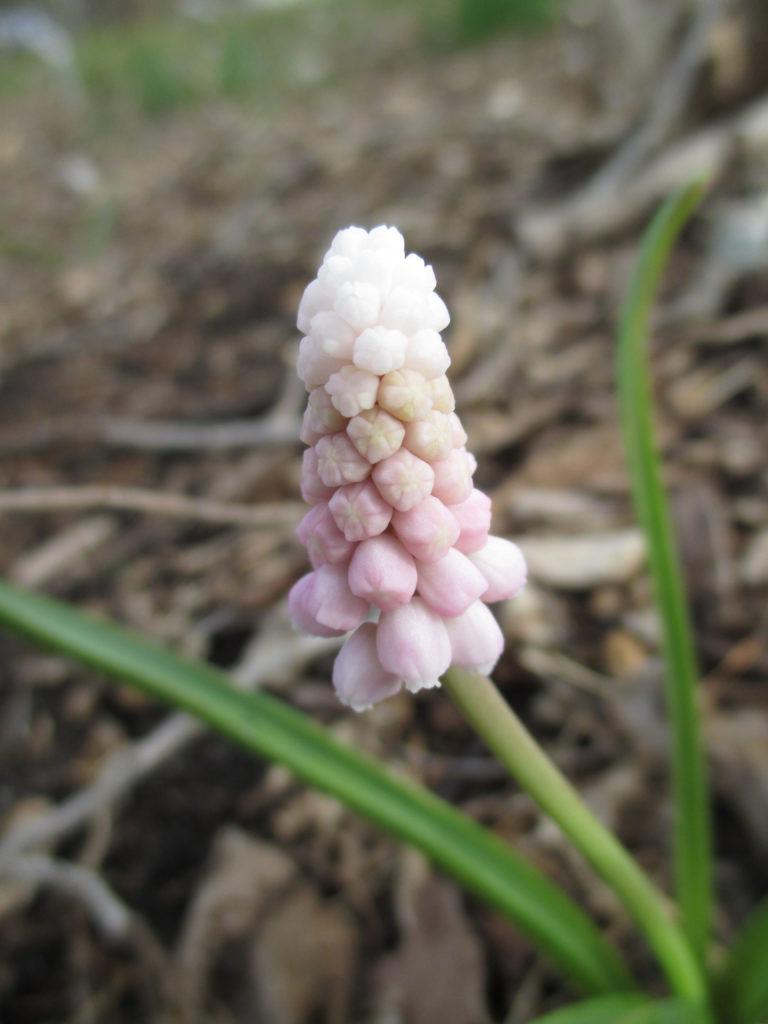
Muscari sp. ‘Pink Sunrise’ (above)
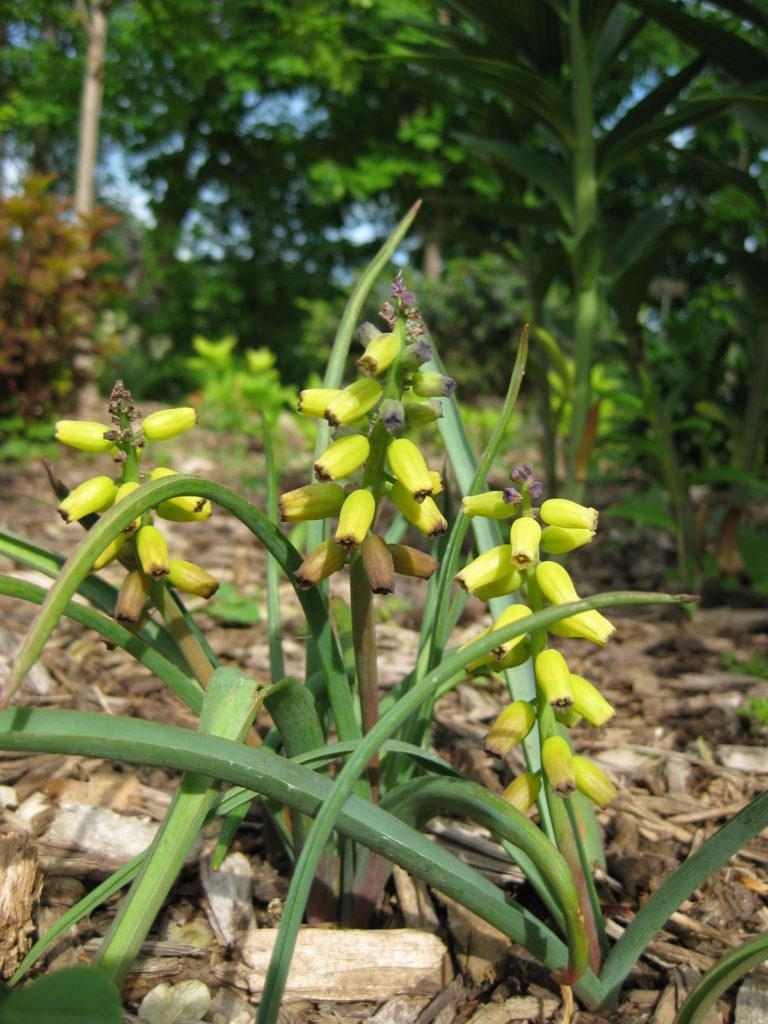
Muscari macrocarpum ‘Golden Fragrance’ (above…never thrived for us!)
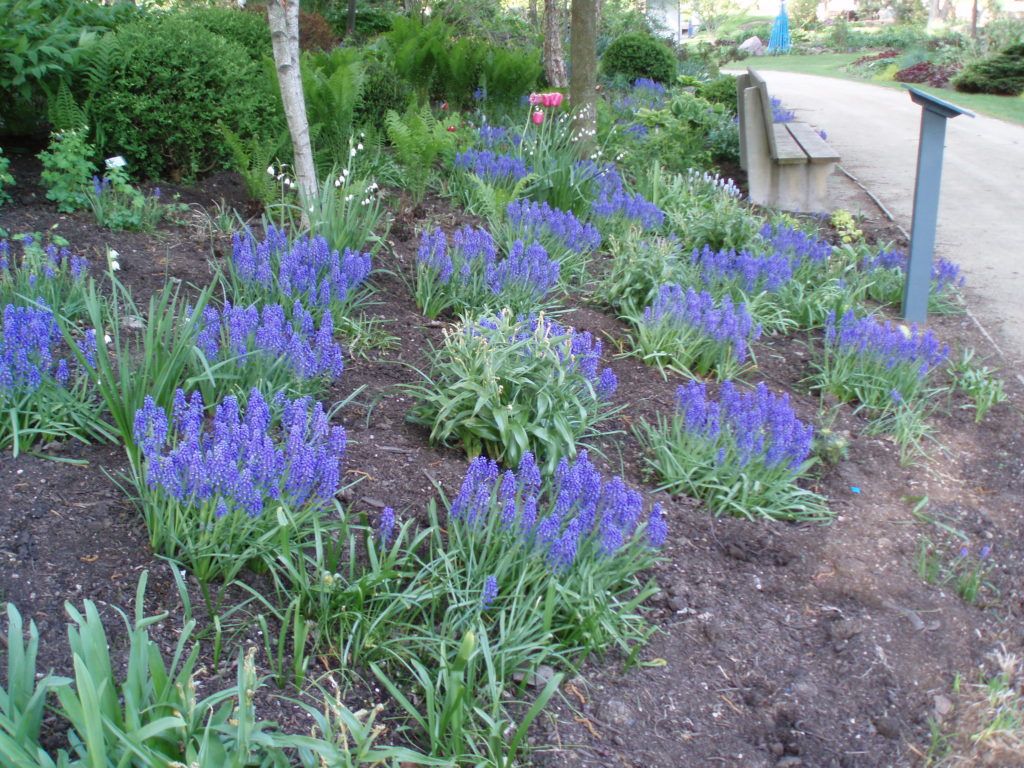
use them in the “shade garden” to fill gaps (with plenty of early season light) as your perennials fill in!
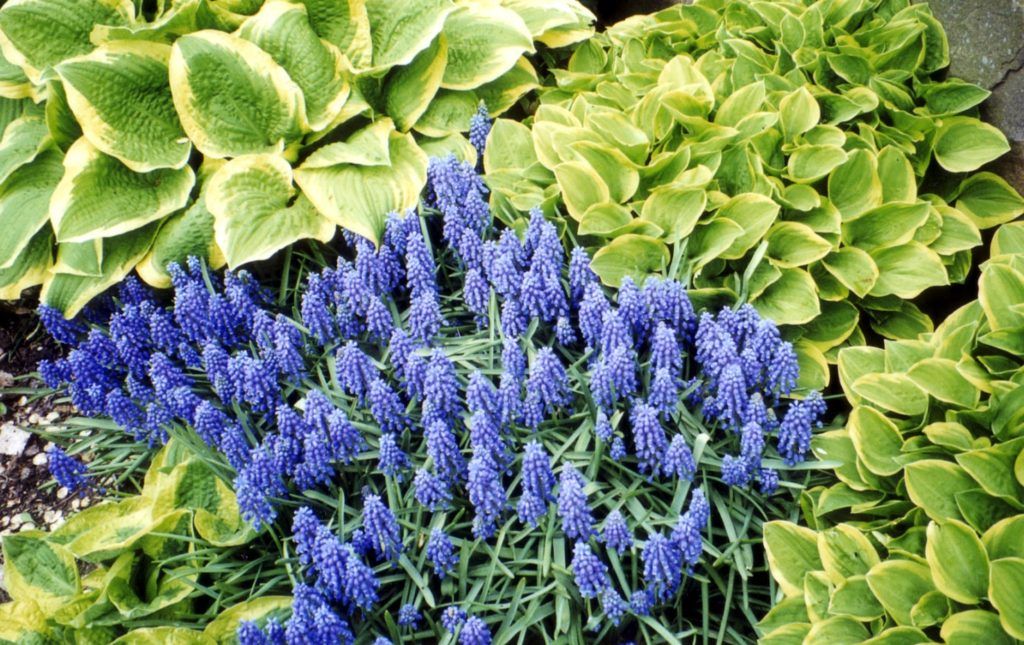
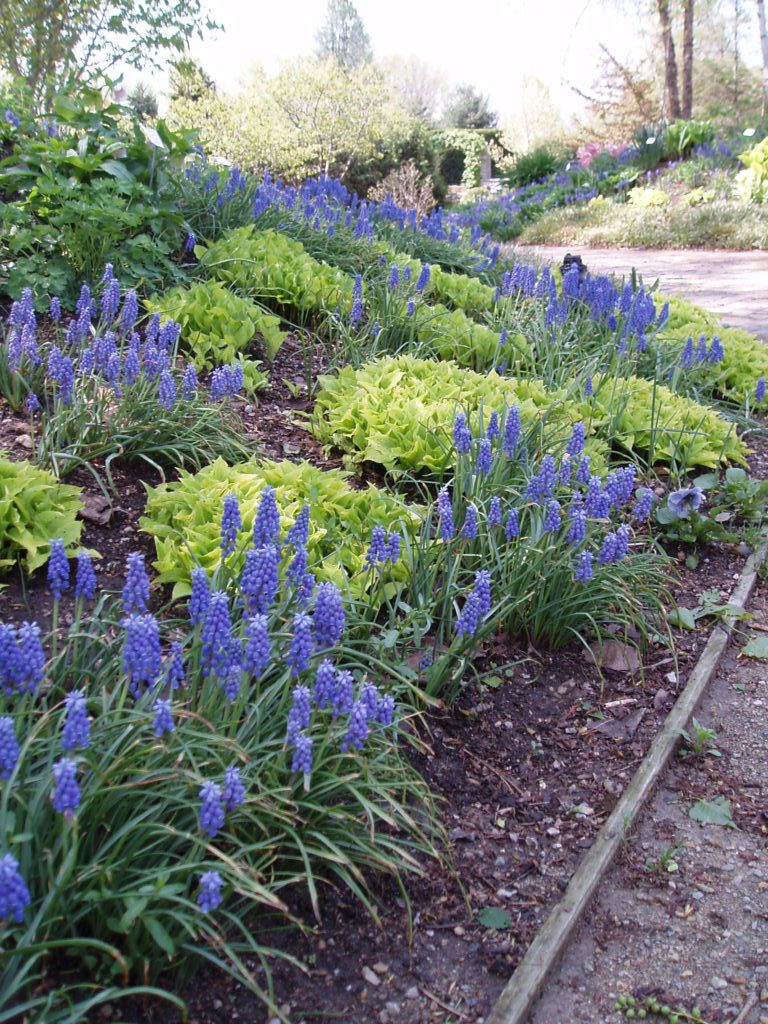
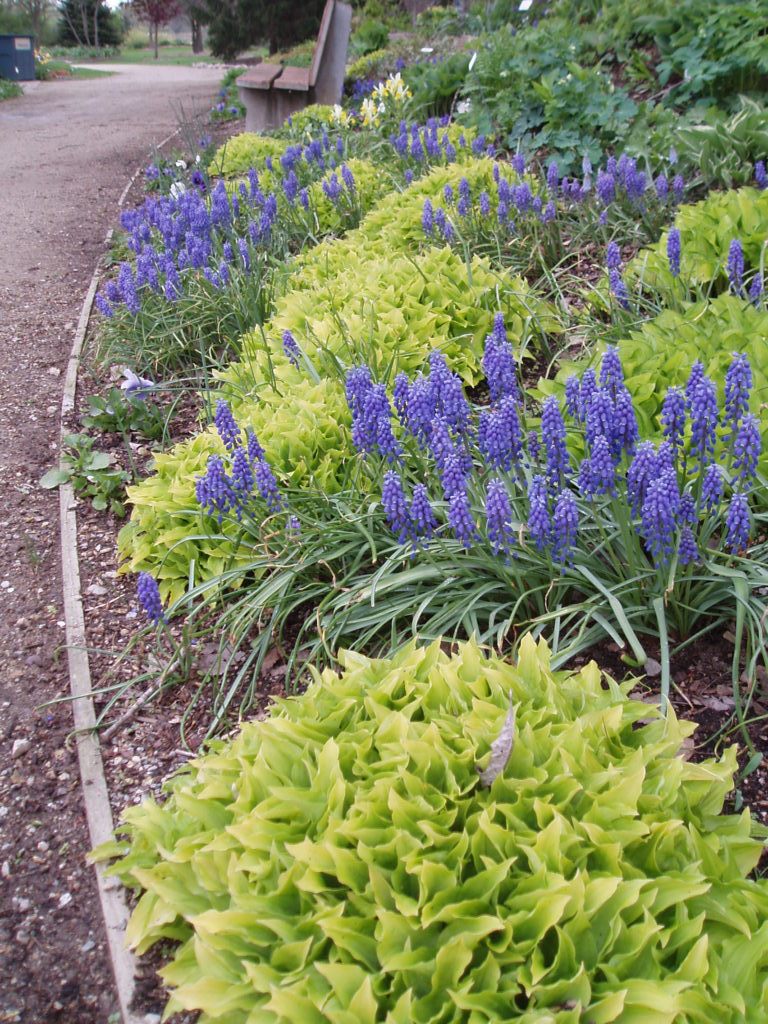
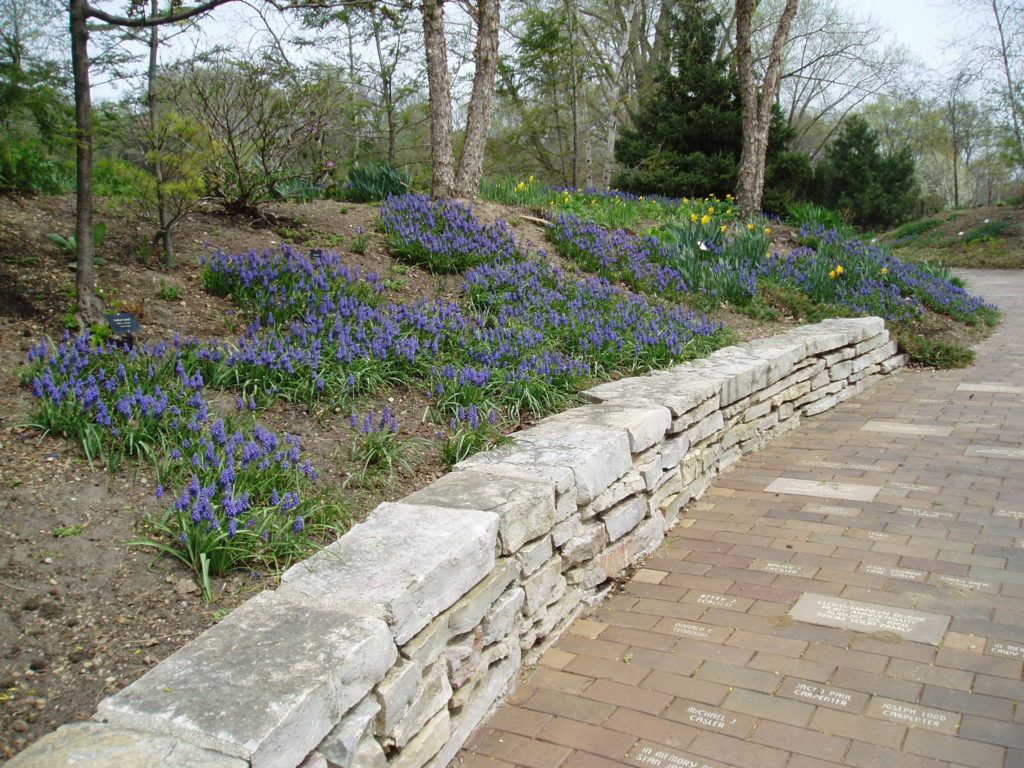
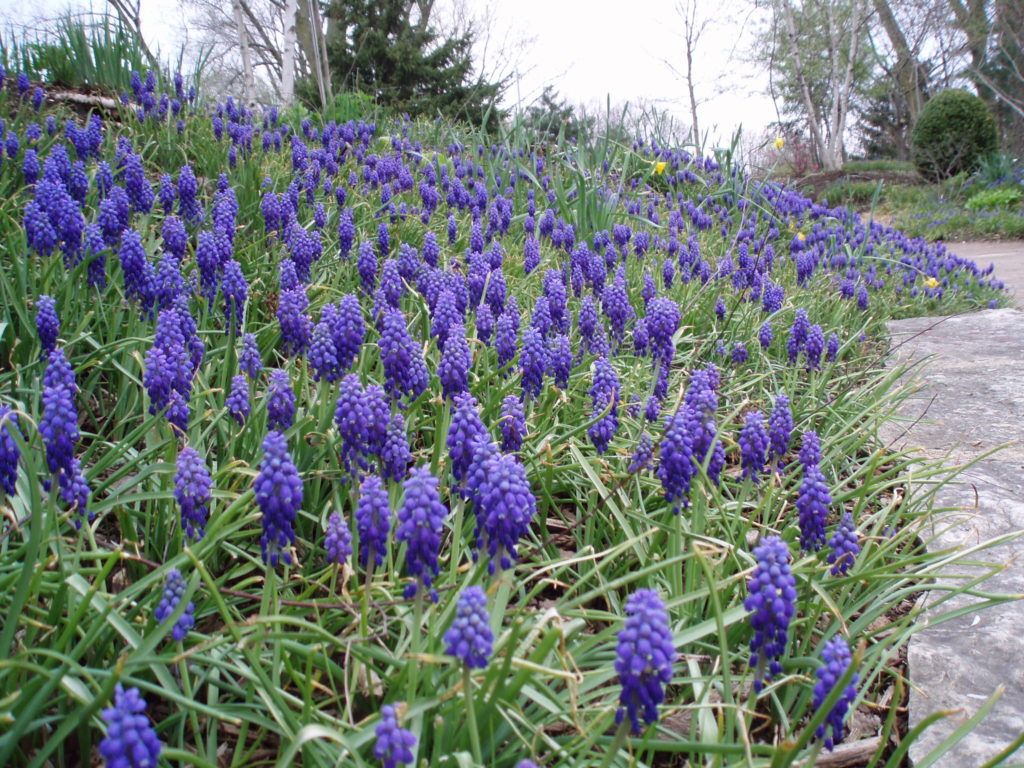
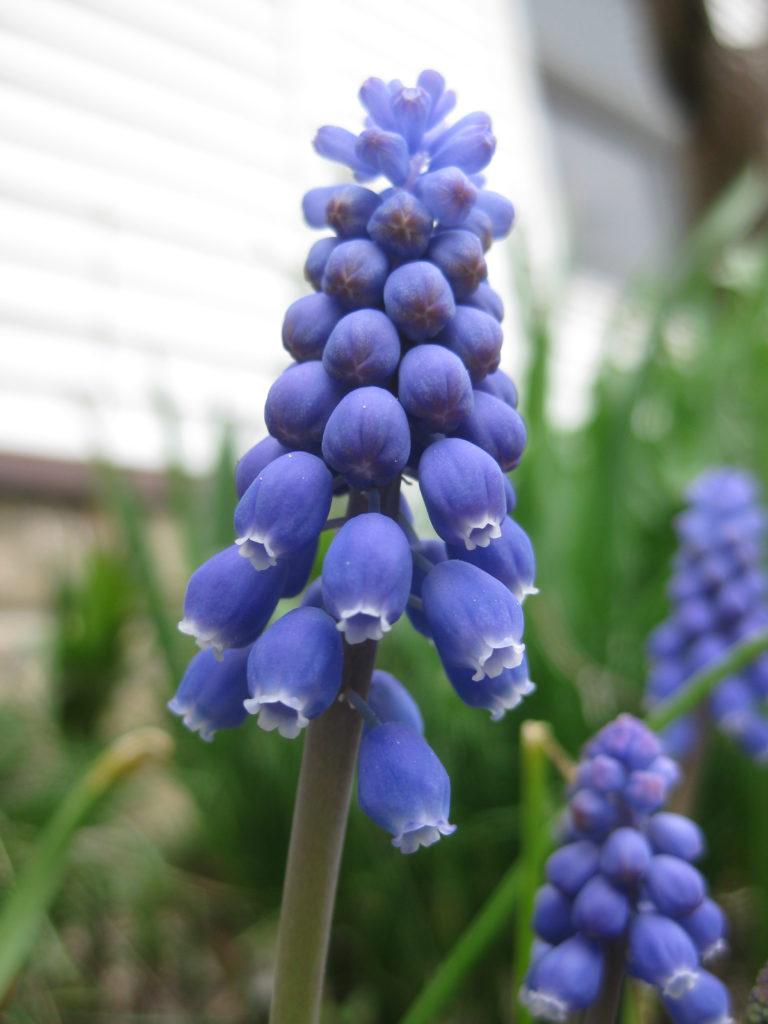
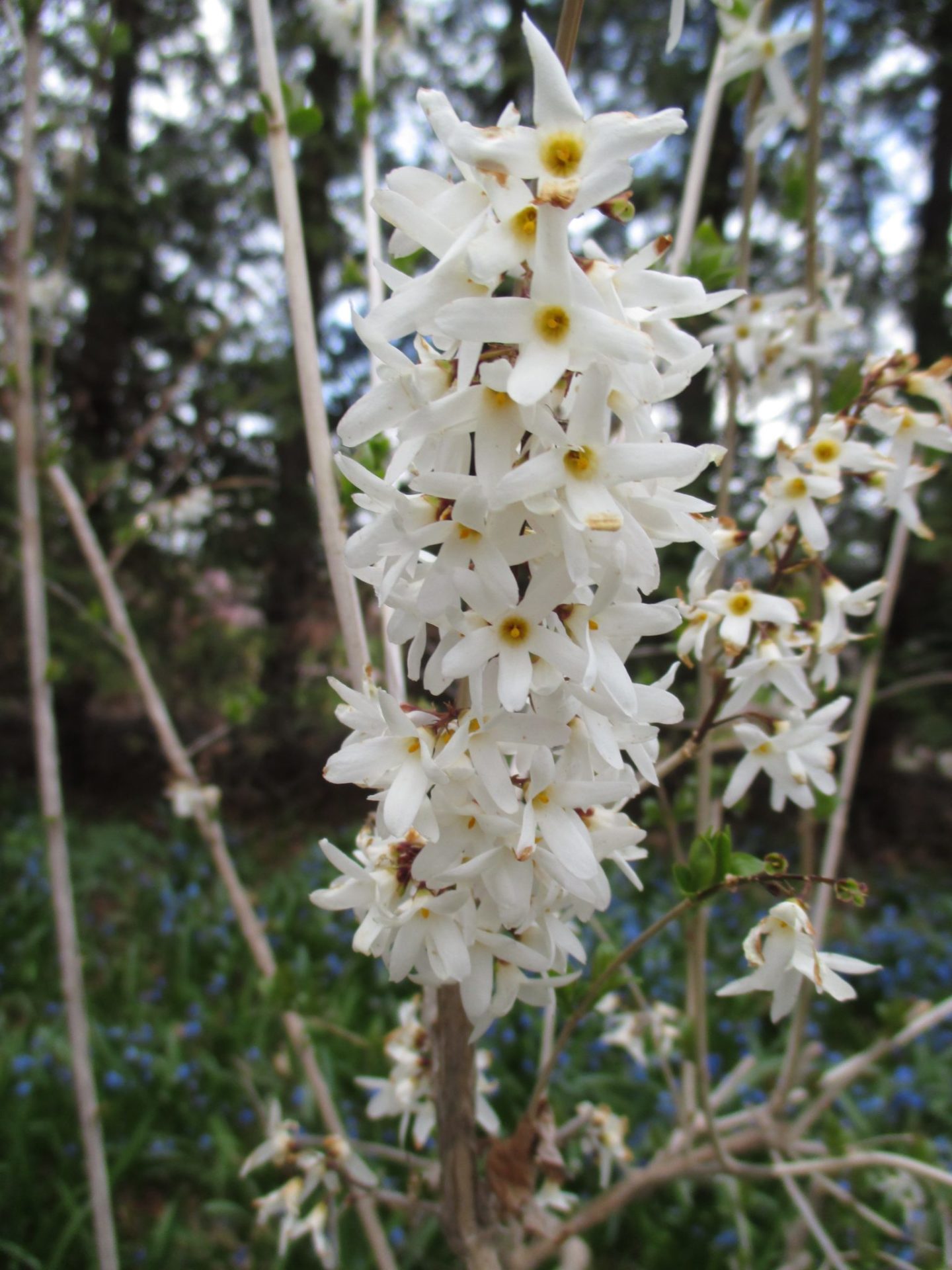
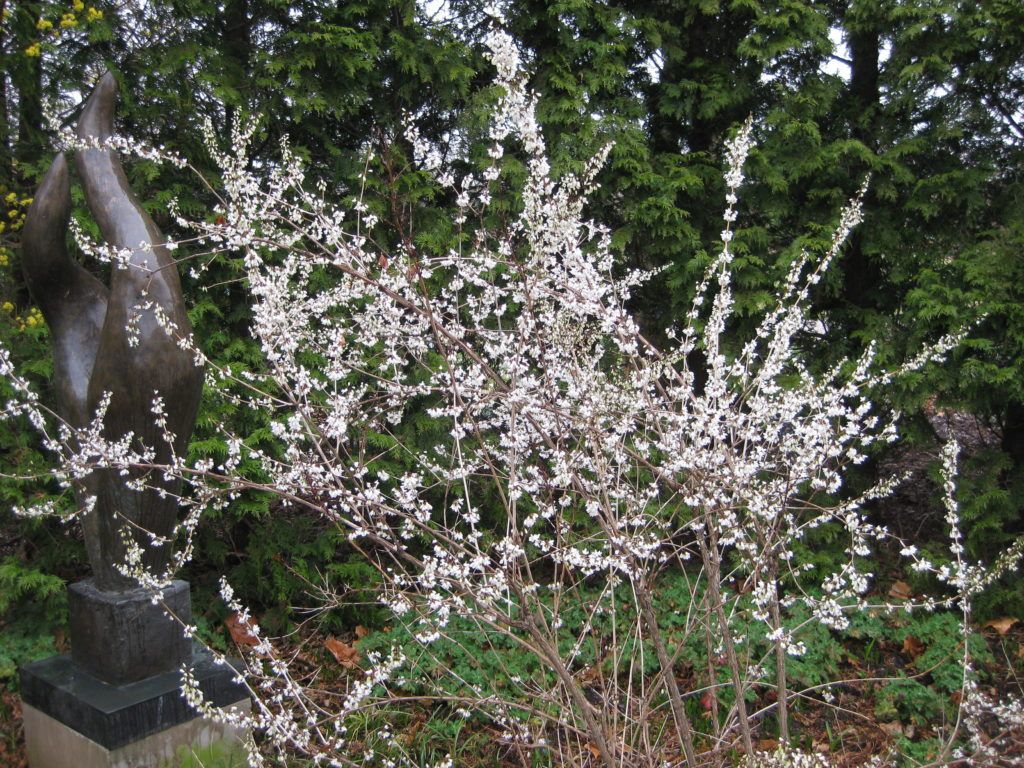
The white forsythia (Abeliophyllum distichum) is one of the earliest blooming shrubs I’ve ever observed and photographed. We don’t currently have a specimen at RBG but we will some day. All of these photos are from the same cluster of three white forsythias at Olbrich Botanical Gardens (OBG) in Madison, WI. A couple years ago, I was strolling around OBG in late March and saw this shrub blooming. Upon closer observation, I could smell the faint, sweet almond fragrance that this woody plant emits in to the air. The small white flowers pack a fragrant punch and bloom a couple of weeks before standard forsythias. Note in these photos that the bloom time of this shrub coincides with peak timing of Siberian squill (Scilla siberica) which is a late March or early April bloomer depending on Mother Nature. There is a pink blooming selection called ‘Roseum’ which I have yet to observe and photograph. Native to Korea and hardy to zones 5-8, this member of the Oleaceae family will get 4-6′ tall and 3-5′ wide in time. While preferring full sun, this shrub will also tolerate part shade. The arching form of the shrub can appear unkempt in time and periodic pruning (right after blooming) can tidy it up a bit. In its native range of Korea, this plant is critically endangered and can only be currently found in seven sites. The glossy green leaves aren’t overly exciting but the fall color can be a decent wine-red coloration in very late October. This shrub is also deer resistant. I love the early scent and color although it doesn’t contribute too much in terms of interest the remainder of the season to be honest. It is certainly worth growing though in a mixed shrub border or in areas where the early color and/or scent can be appreciated. Those early blooms are excellent for providing color and scent by being cut and forced to bloom inside or as part of a fresh arrangement.
The day started out with some April showers in the form of snow! It melted off quickly but it was a frigid day out there. I was pampered with another office day at 72 degrees F but Big John, Cindy and Terry had a brisk day outside. John and Terry worked on many projects including filling our containers with potting soil. Cindy potted up some new plants that arrived and had outside duties as well including pulling up some of the containerized plants we “heeled in” over the winter. Bobby K. is juggling multiple projects both inside and outside. Larry H. continues to work on path improvements out in the gardens and Janice continues to prep for our Spring Plant Sale and is preparing signage information for some of our exciting 2018 collections. I’m taking little “nibbles of progress” out of myriad tasks, projects and duties as we head in to a very busy season that will explode with some warmth here in the coming weeks. Looming events include the continuation of our compost sale, pansy sale, Spring Plant Sale and not to mention our busy planting season. Our volunteers included Alan, Derrick, Dr. Gredler, Peg, Dave, Jim, Vern, Dick H., Bill O., Kathy P. and many others. We also saw Marcia L., Sandi, Rollie, Maury and some others today.
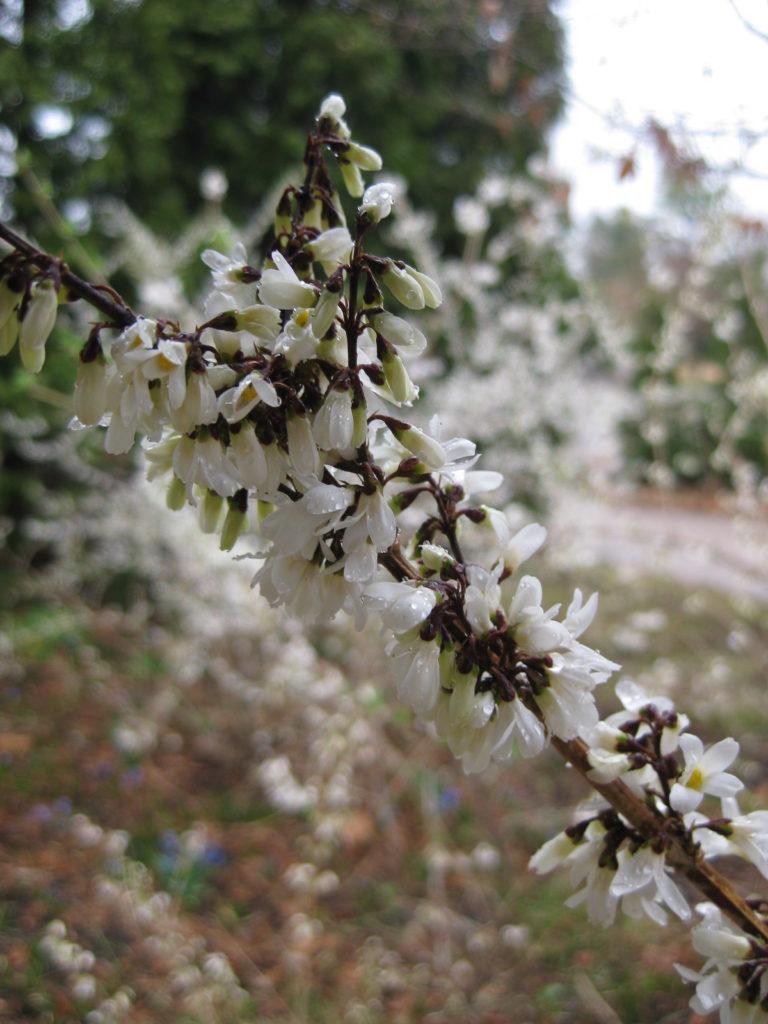
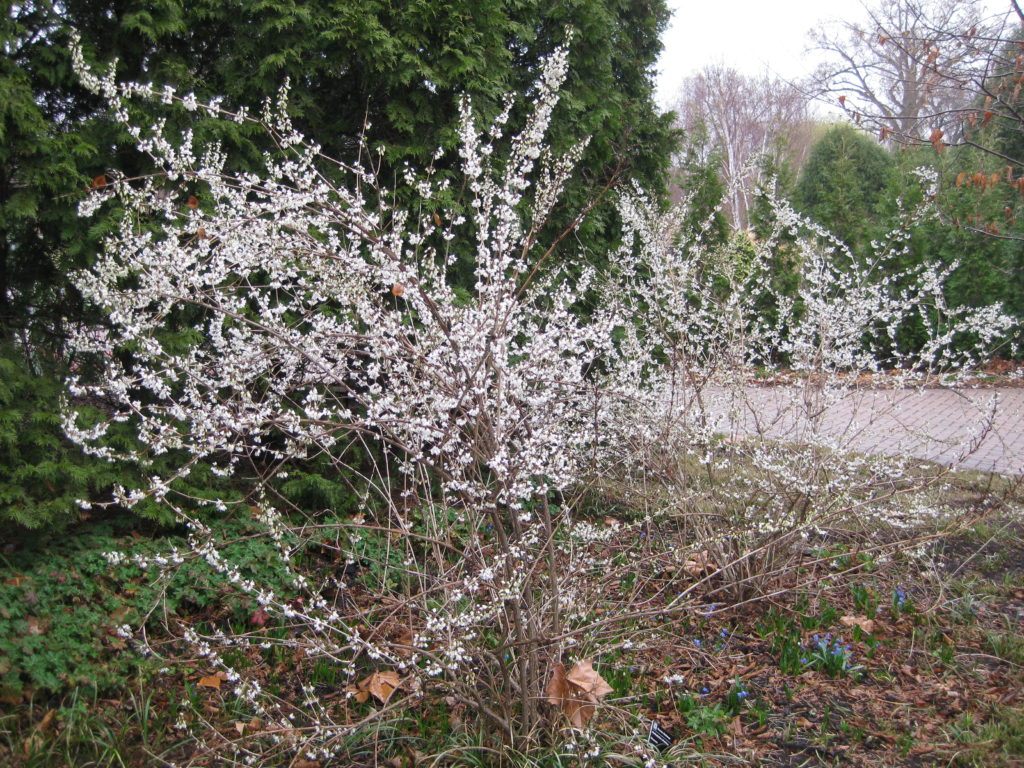
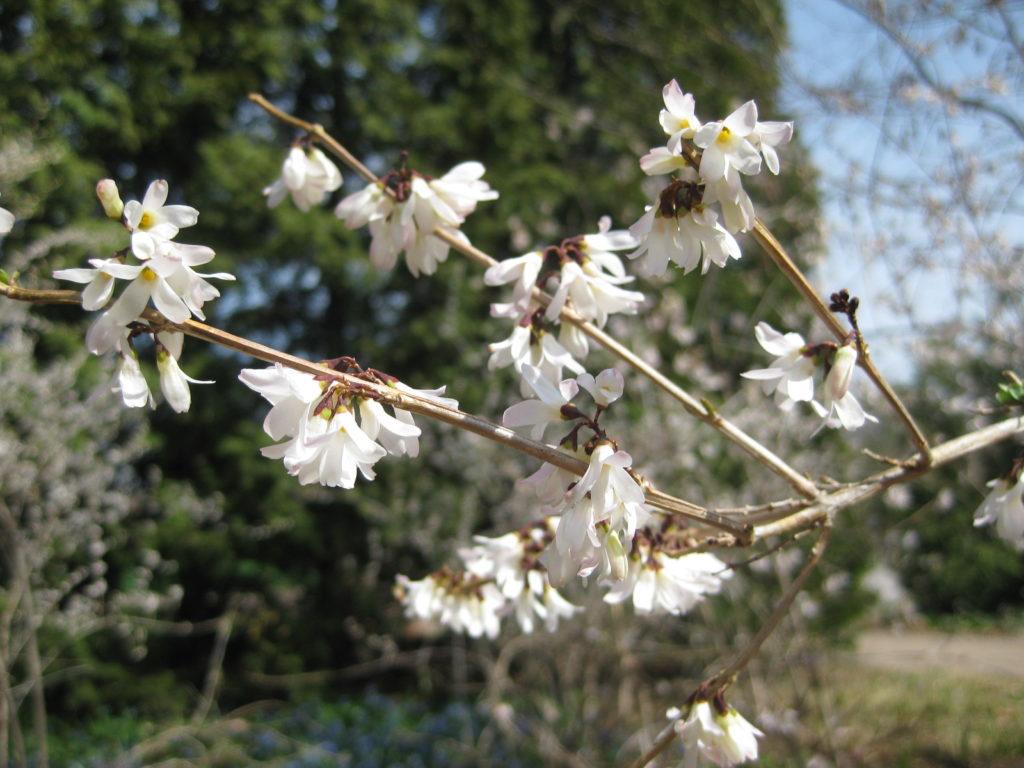
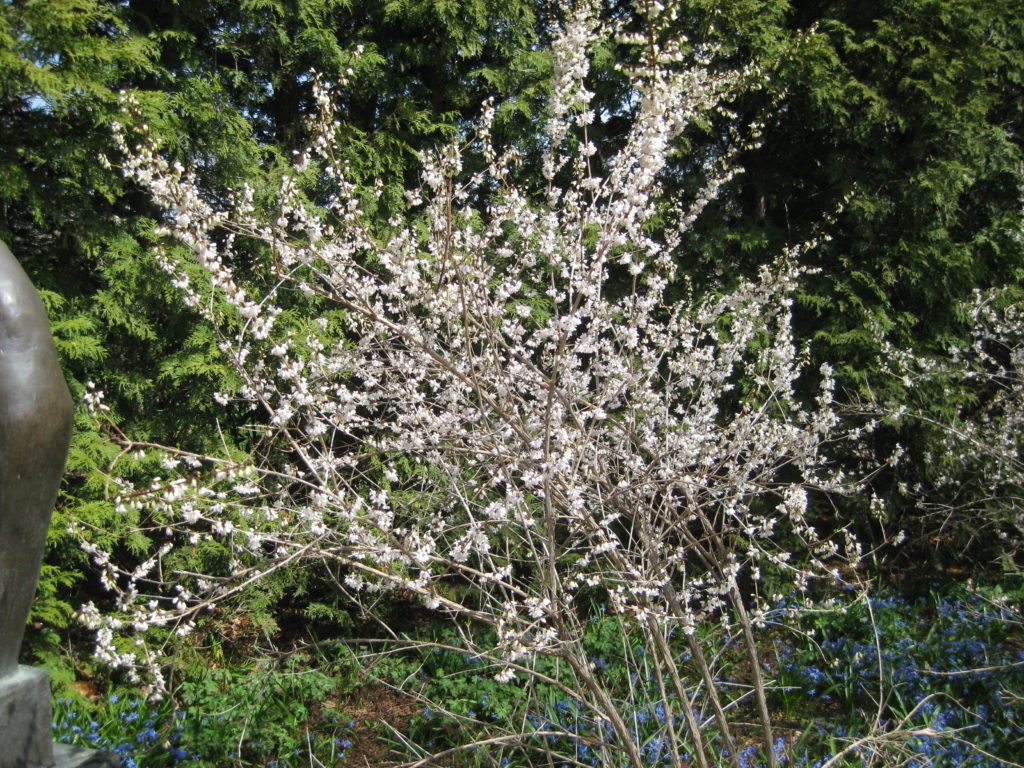
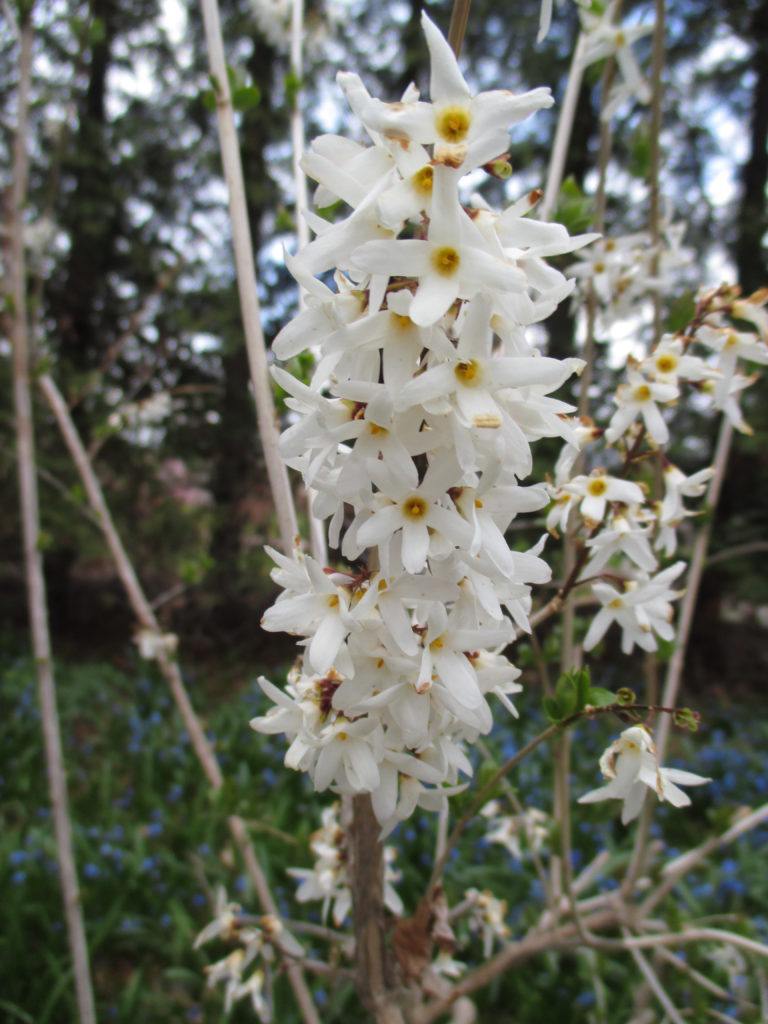
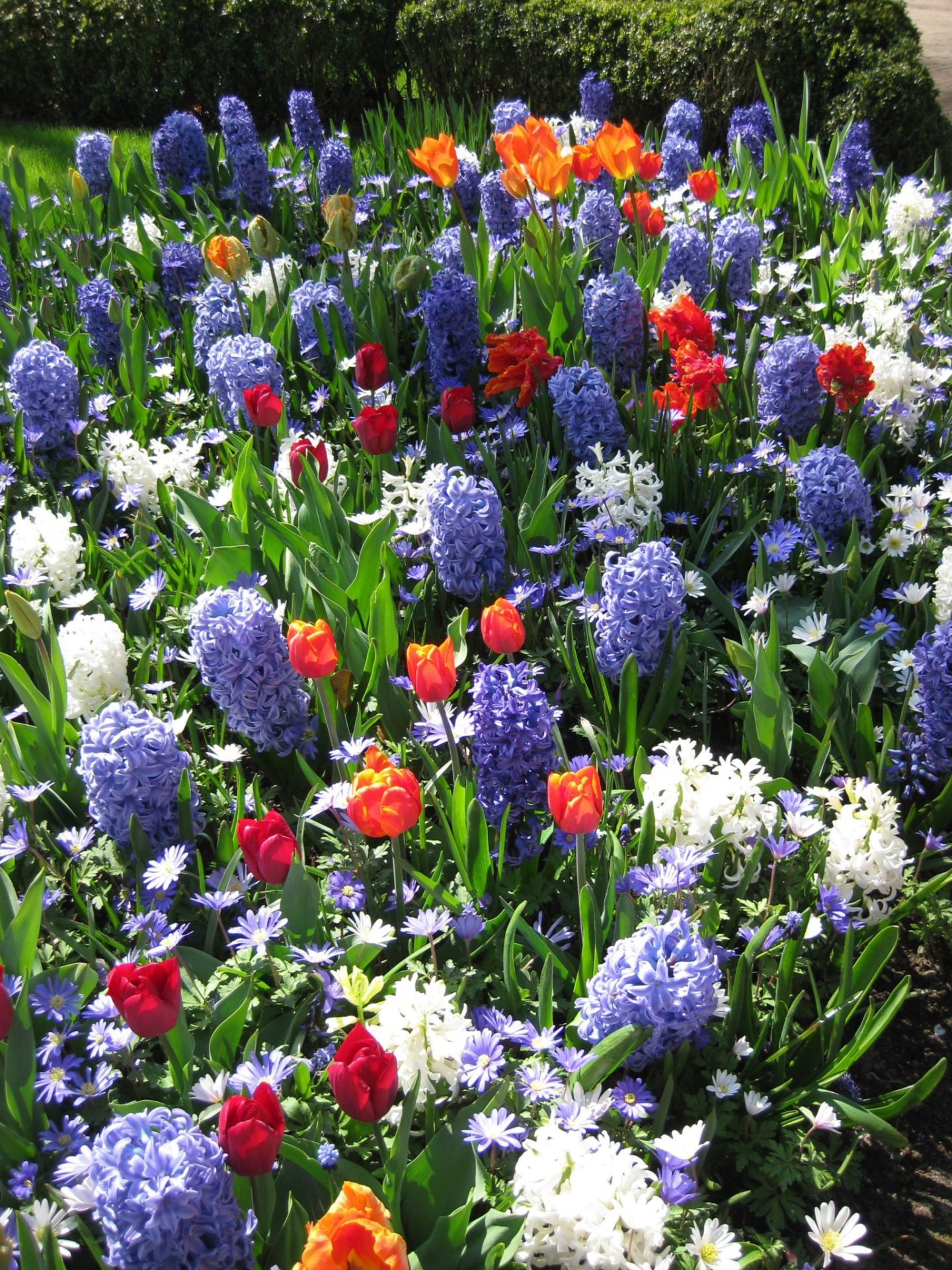
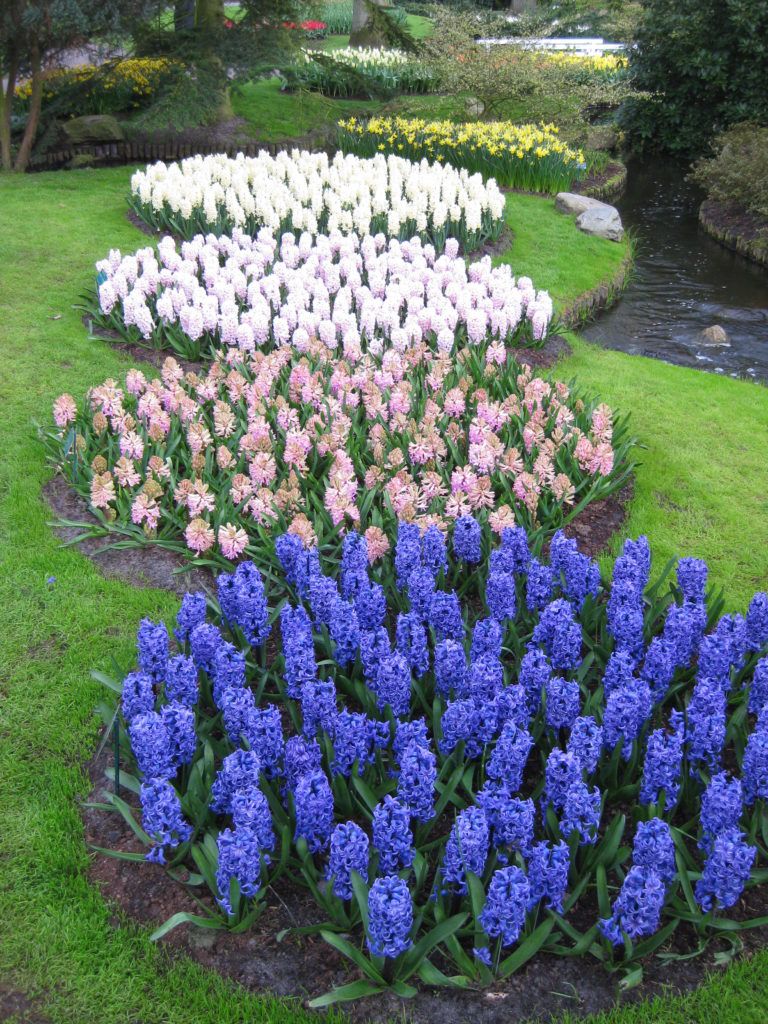
I think I’ll let the photos in this blog speak for themselves. I took all of these photos at Keukenhof (Netherlands) a couple of years ago and thought we could all use a little spring color and can hopefully imagine the scent of this popular bulb. Garden hyacinths (Hyacinthus) have a long history of use in the garden (fall planted) and the scent is not to be missed. Keukenhof is an 80 acre park (open to the public in 1950) that showcases 7 million bulbs every spring among many other wonderful plantings. I was one of the first visitors in the gate that day and took over 3,000 photos very quickly. I caught the absolute best overlap of hyacinths, later daffodils (Narcissus) and early tulips (Tulipa). Some might call Keukenhof “touristy”….well, of course it is and the 1 million + visitors every year get to enjoy unbelievable spring color. I’ve checked this destination off the “bucket list” but would return annually if my time/budget allowed! Hyacinths will start blooming at our garden in the next couple of weeks but our collection is quite as comprehensive or impressive! Enjoy!
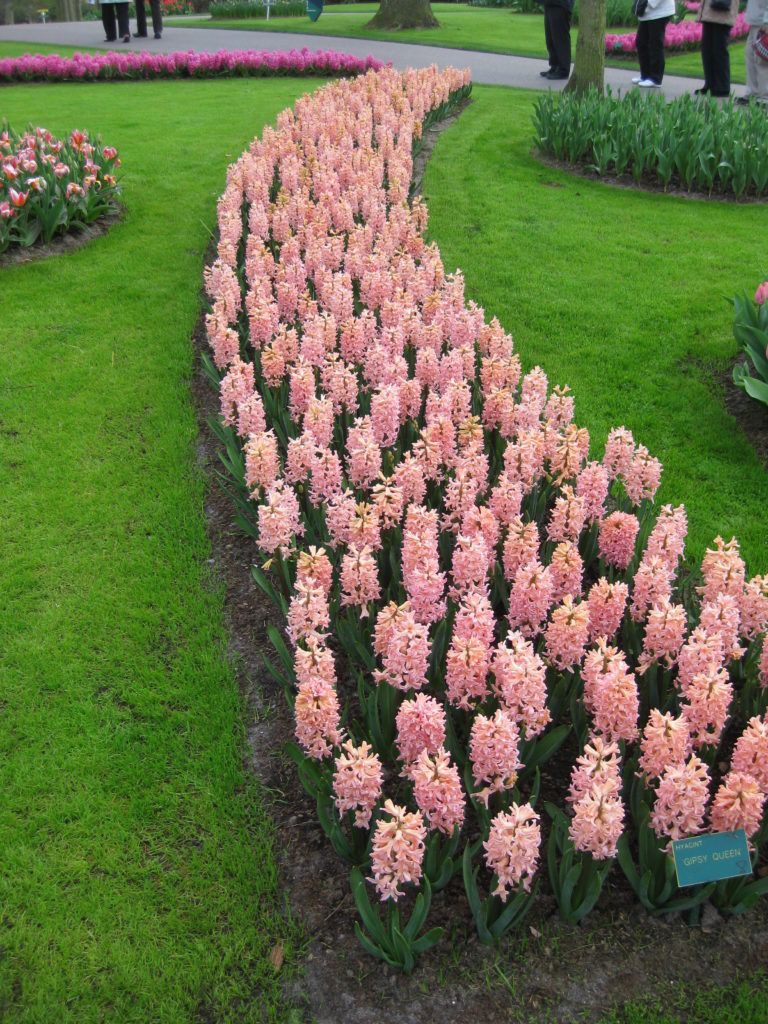
Hyacinthus ‘Gipsy Queen’ (‘Gypsy Queen’) – above and below
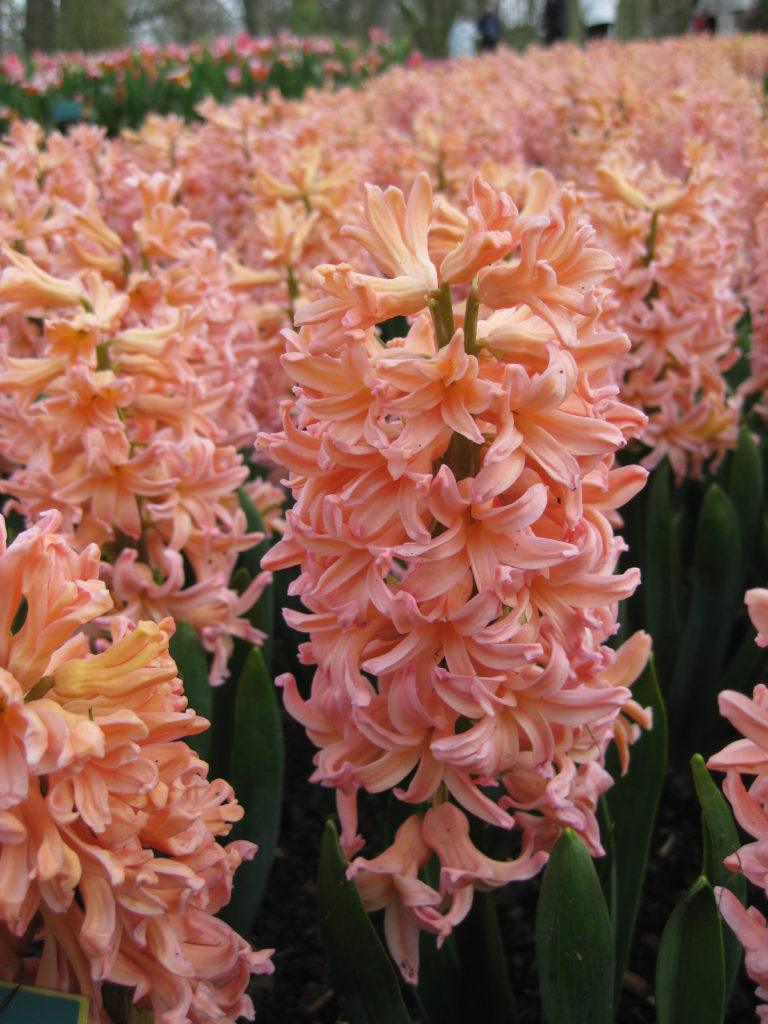
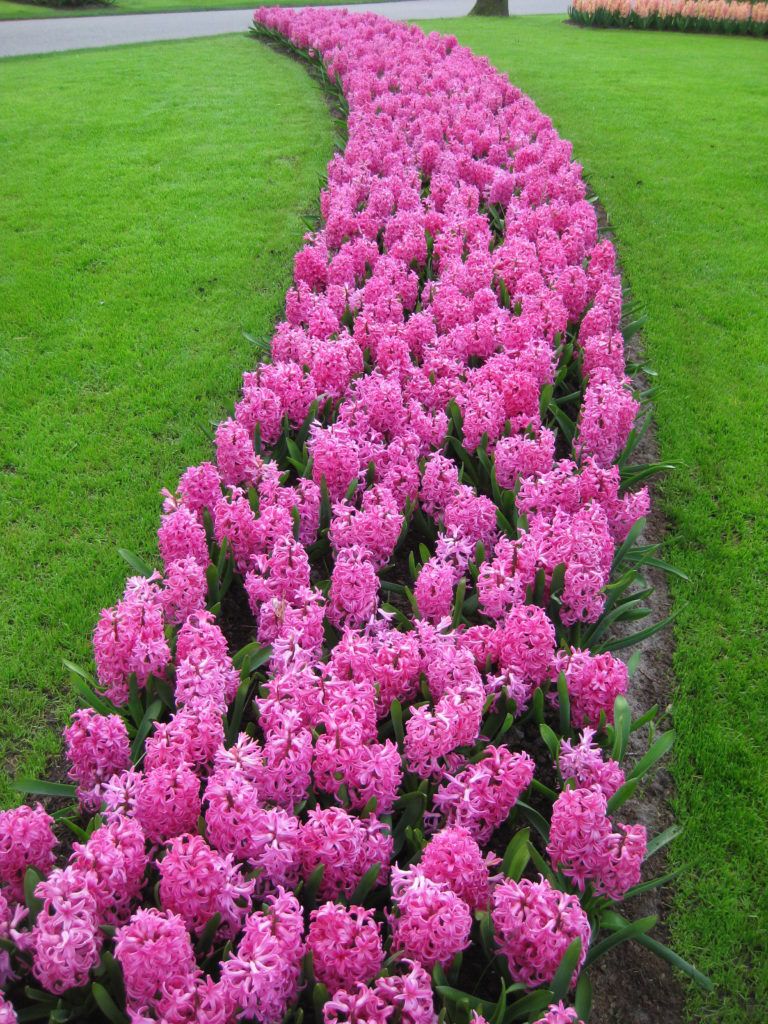
Hyacinthus ‘Pink Pearl’ – above and below
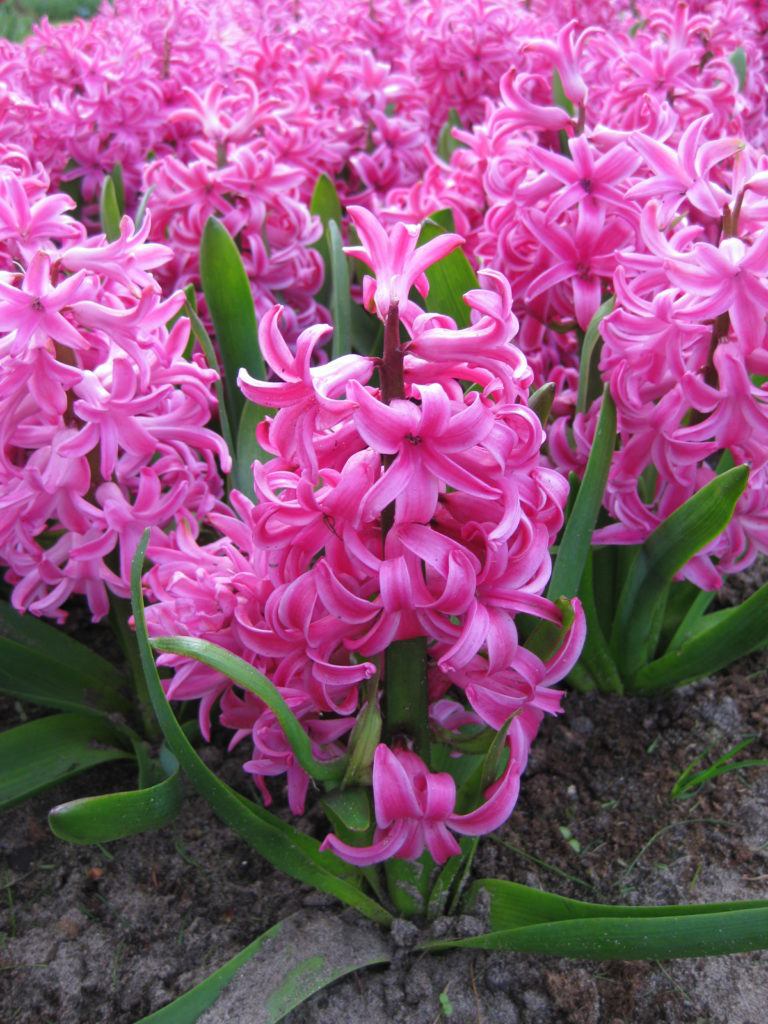
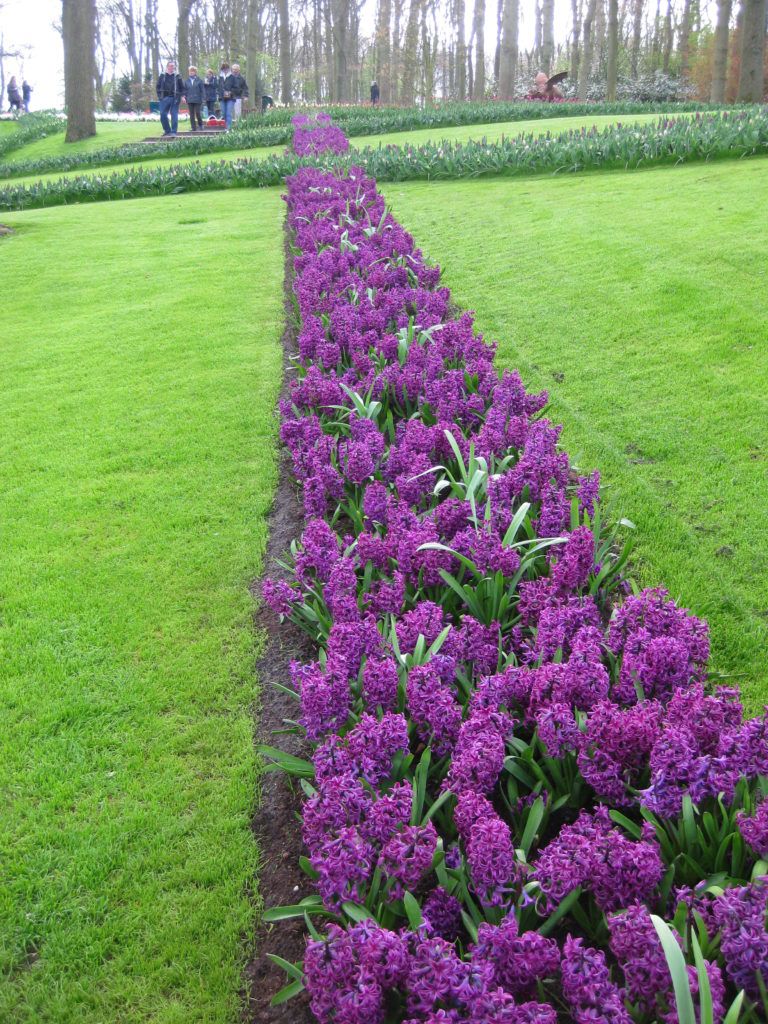
Hyacinthus ‘Purple Sensation’ – above and below
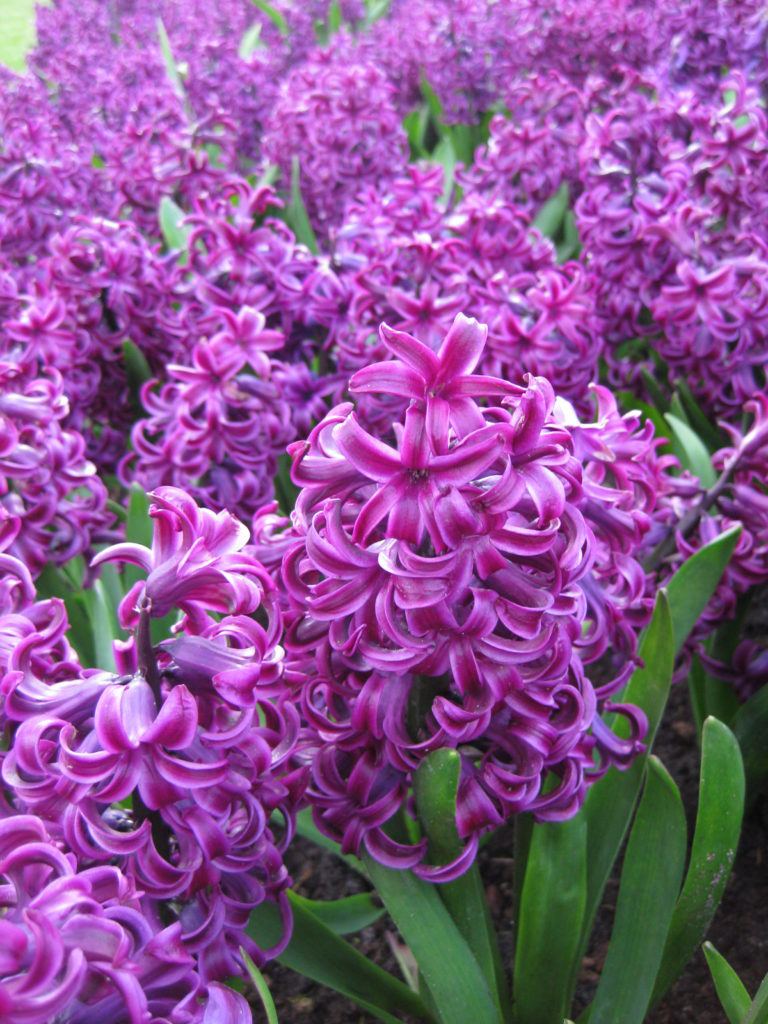
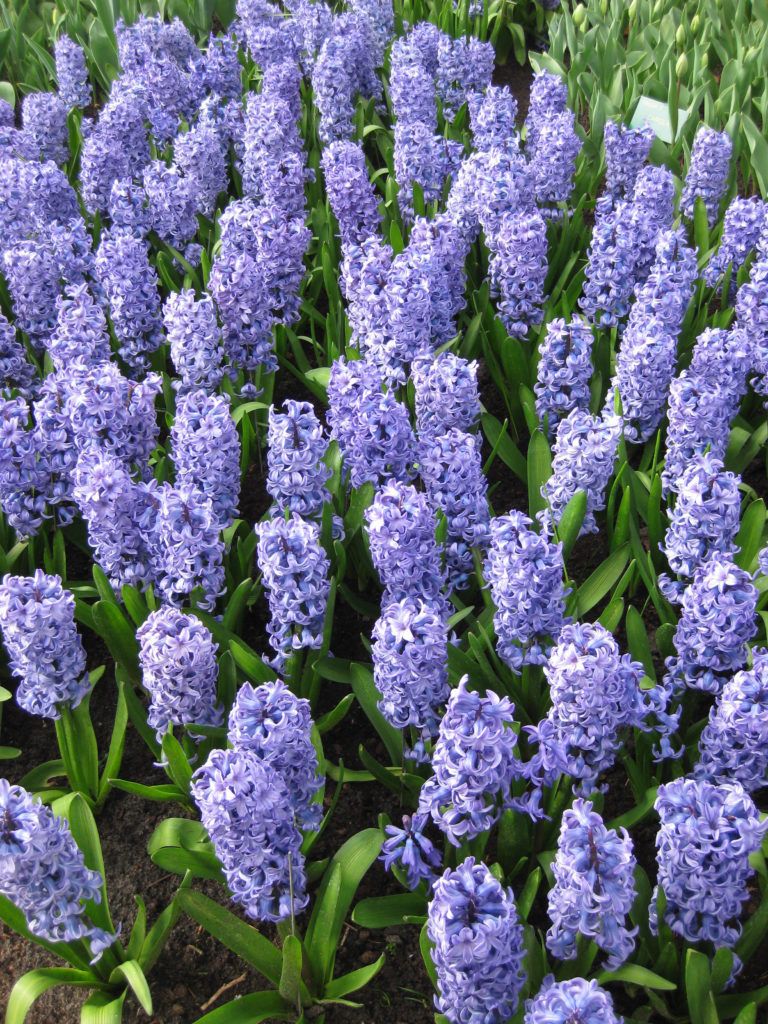
Hyacinthus ‘Delft Blue’ – above
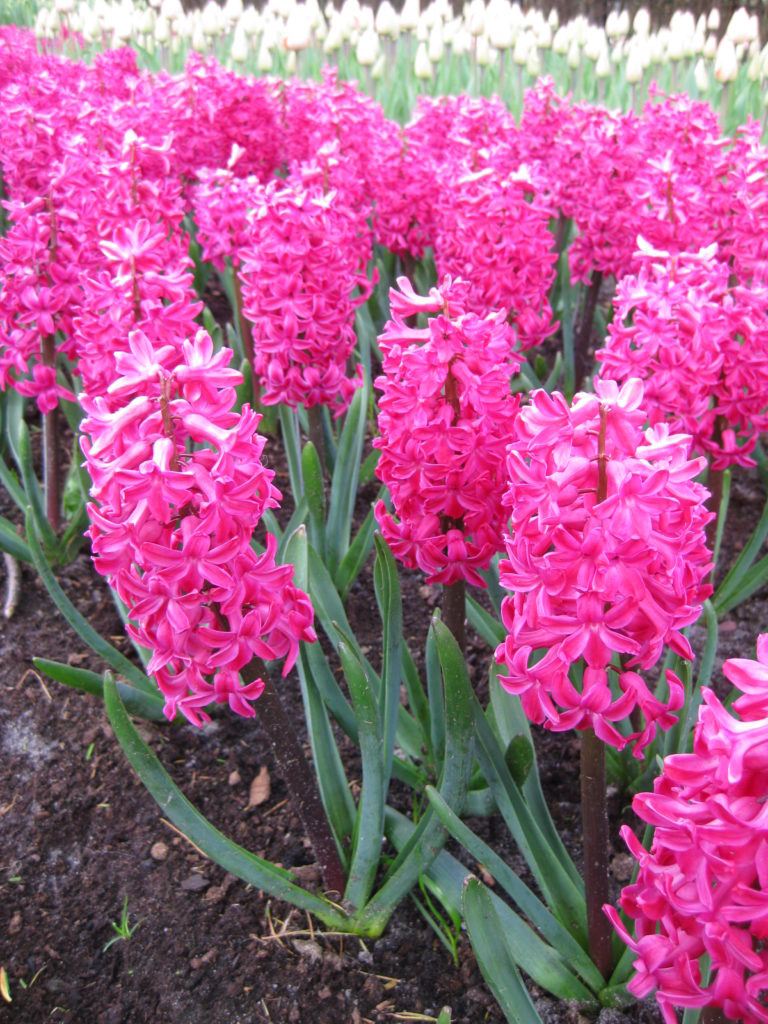
Hyacinthus ‘Jan Bos’ – above
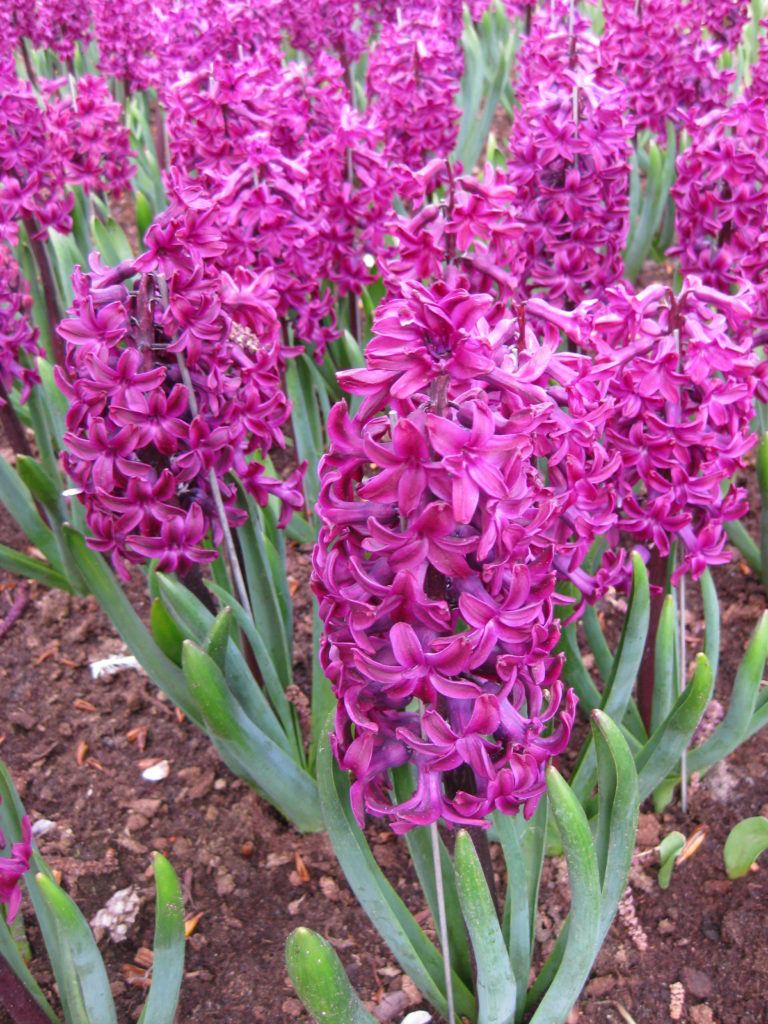
Hyacinthus ‘Woodstock’ – above and below with Scilla siberica
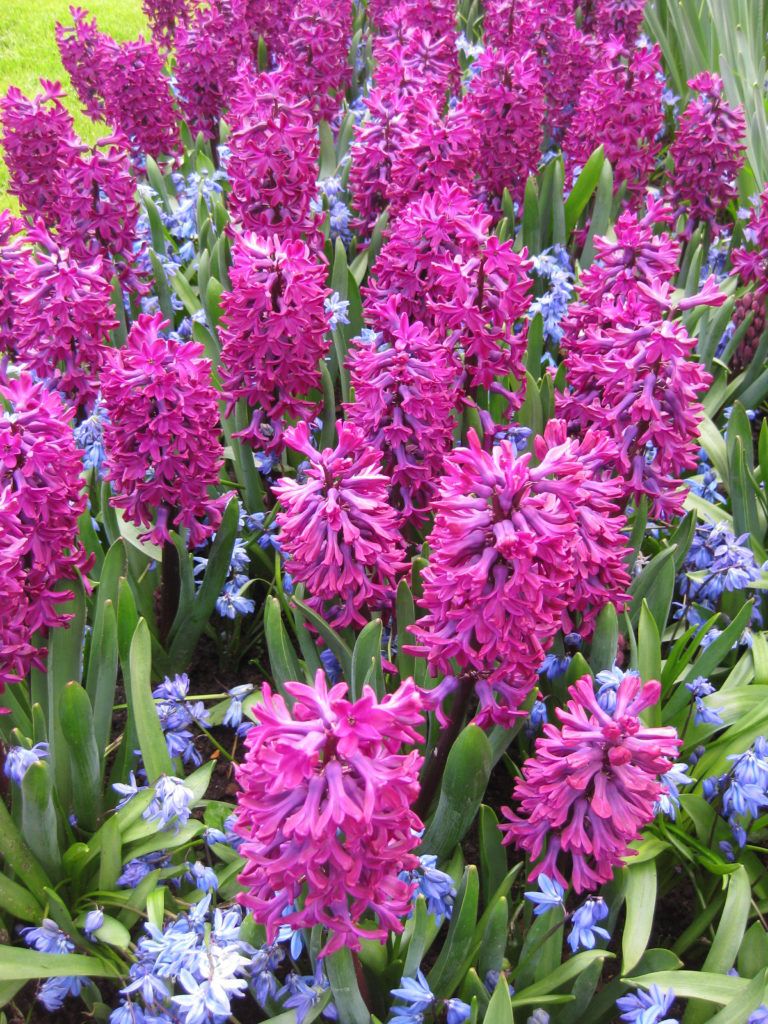
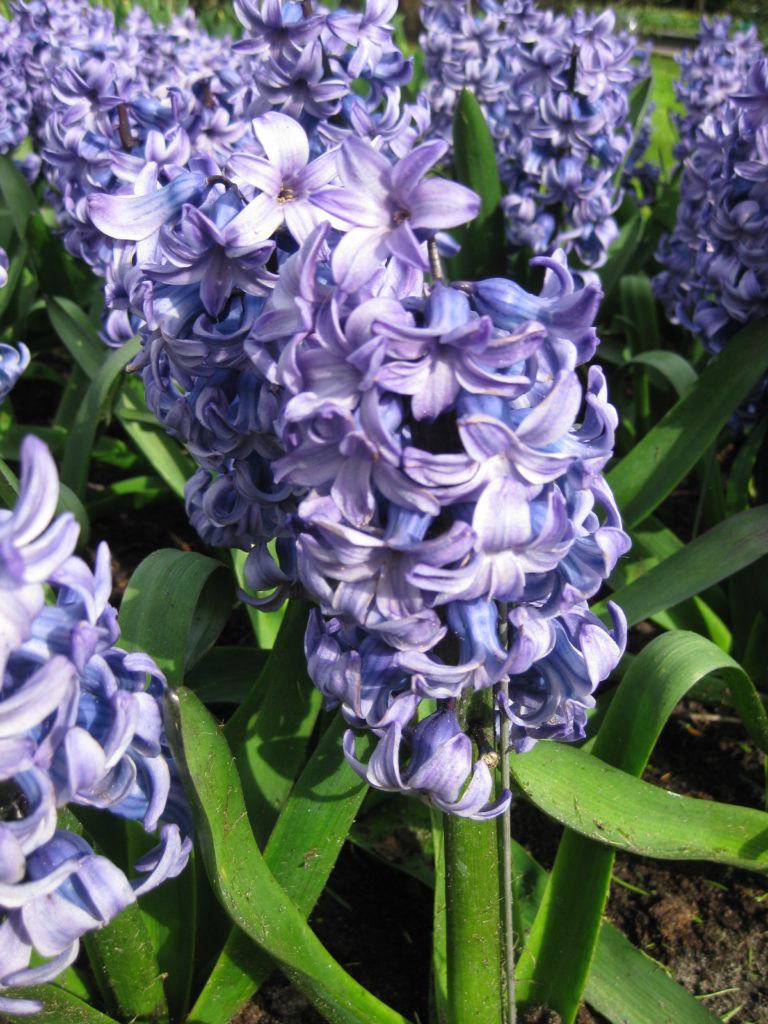
Hyacinthus ‘Blue Star’ – above
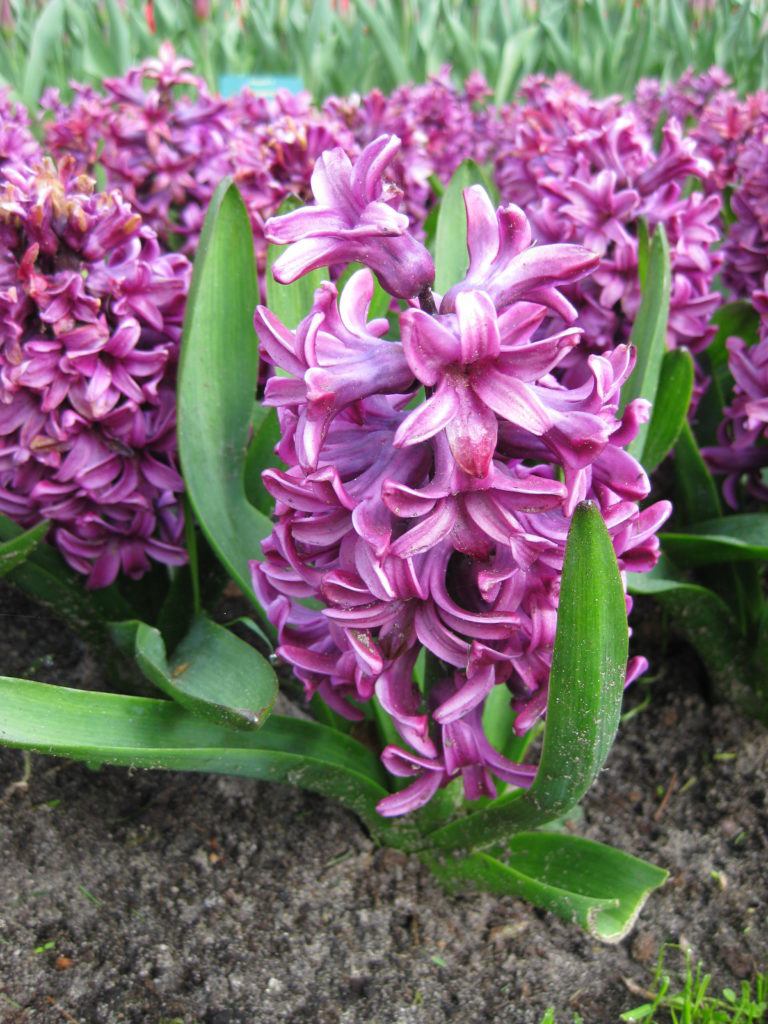
Hyacinthus ‘Miss Saigon’ – above

Hyacinthus ‘China Pink’ – above and below
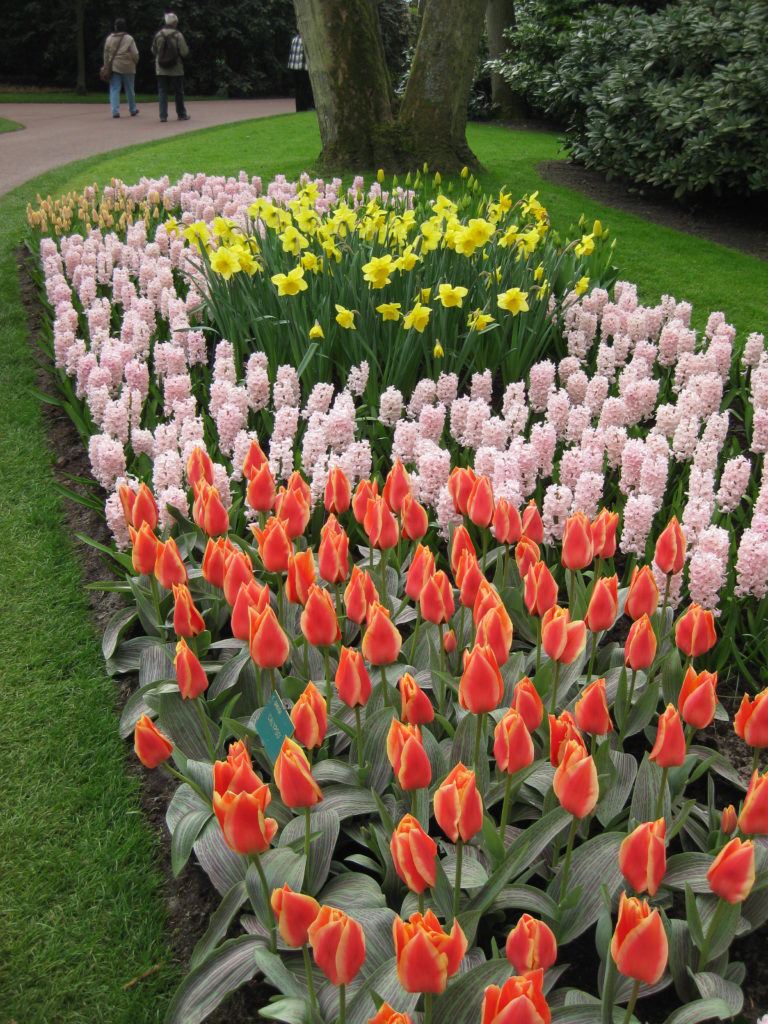
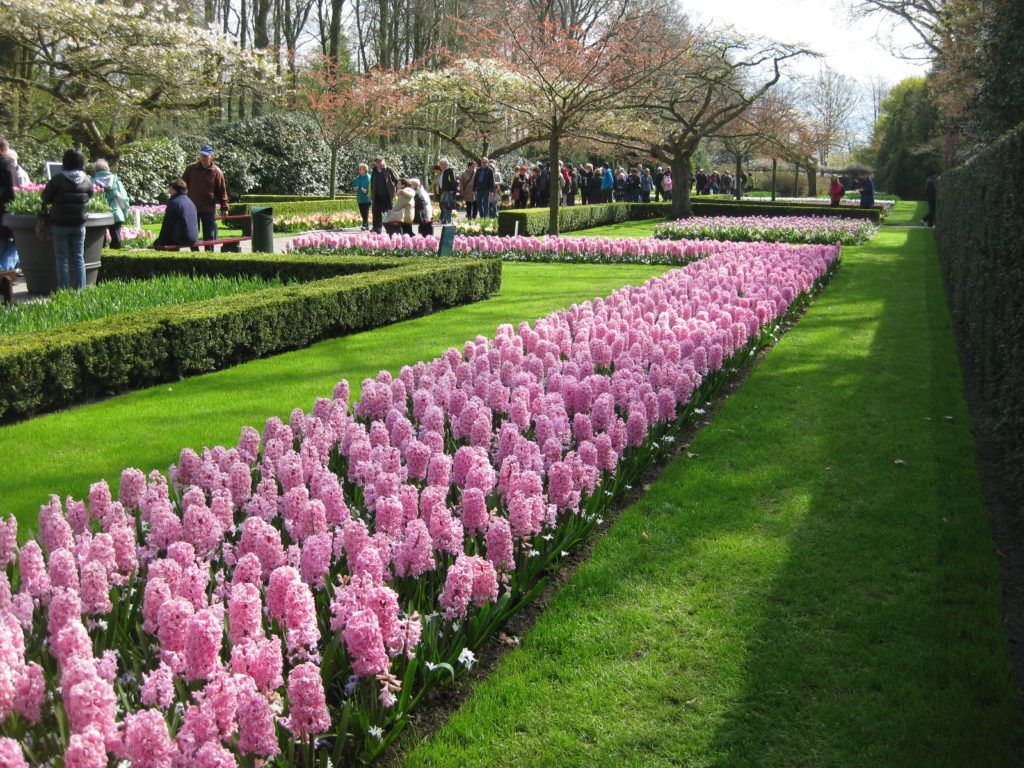
Hyacinthus ‘Fondant’ – above and below
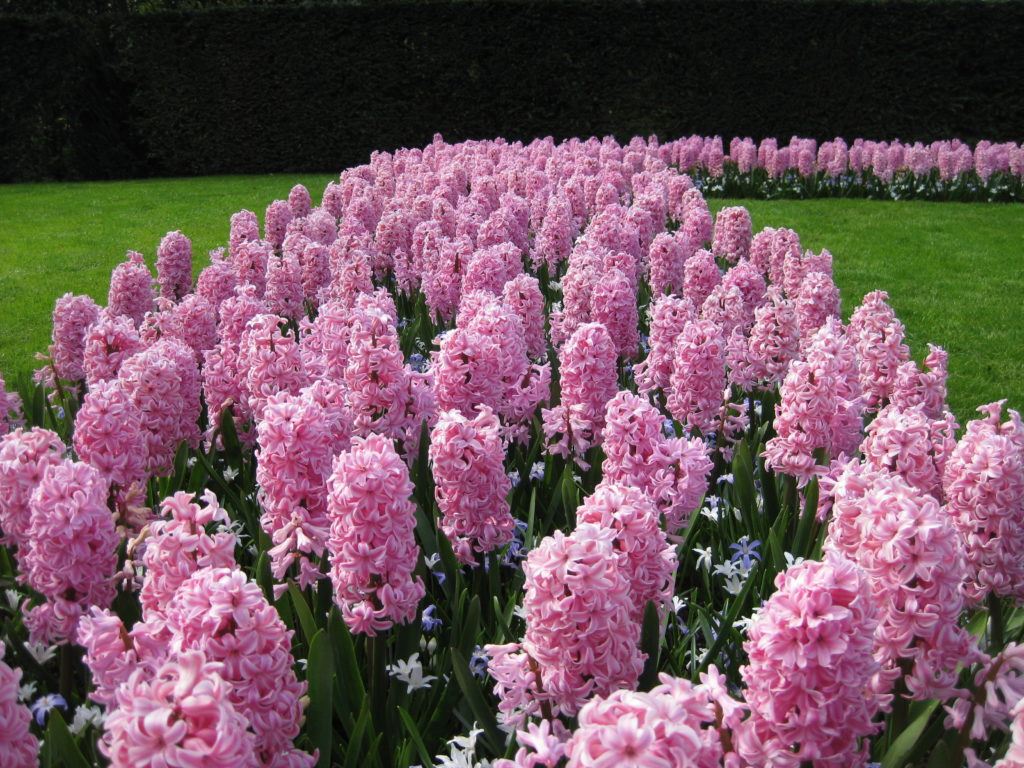
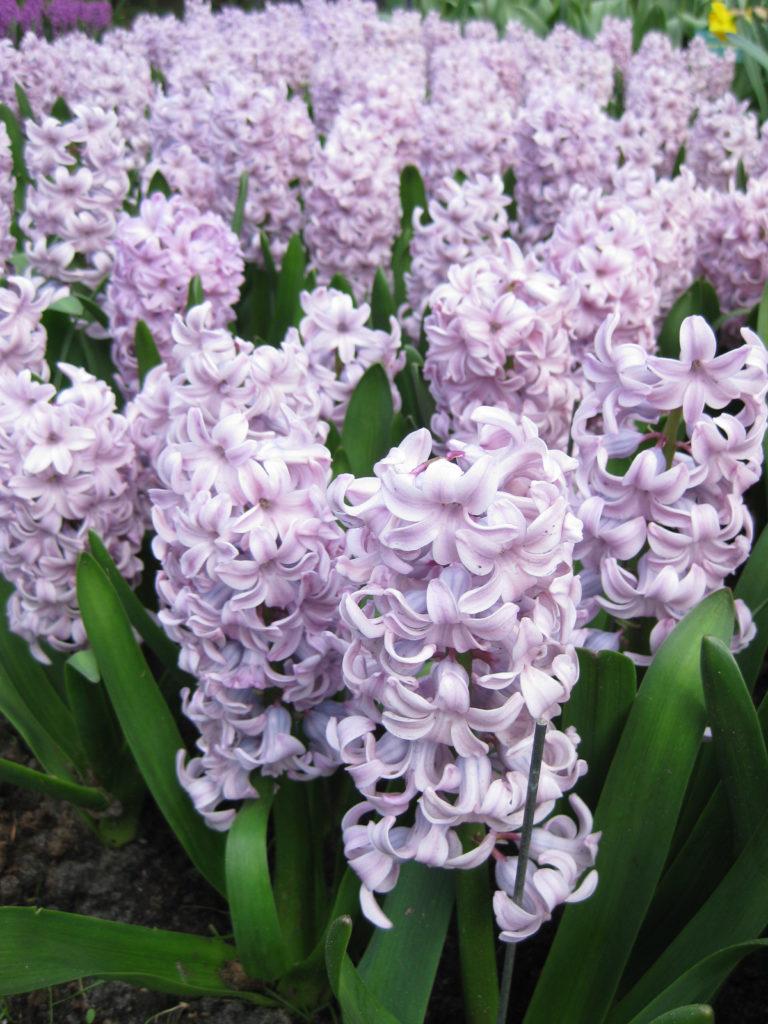
Hyacinthus ‘Top Hit’ – above
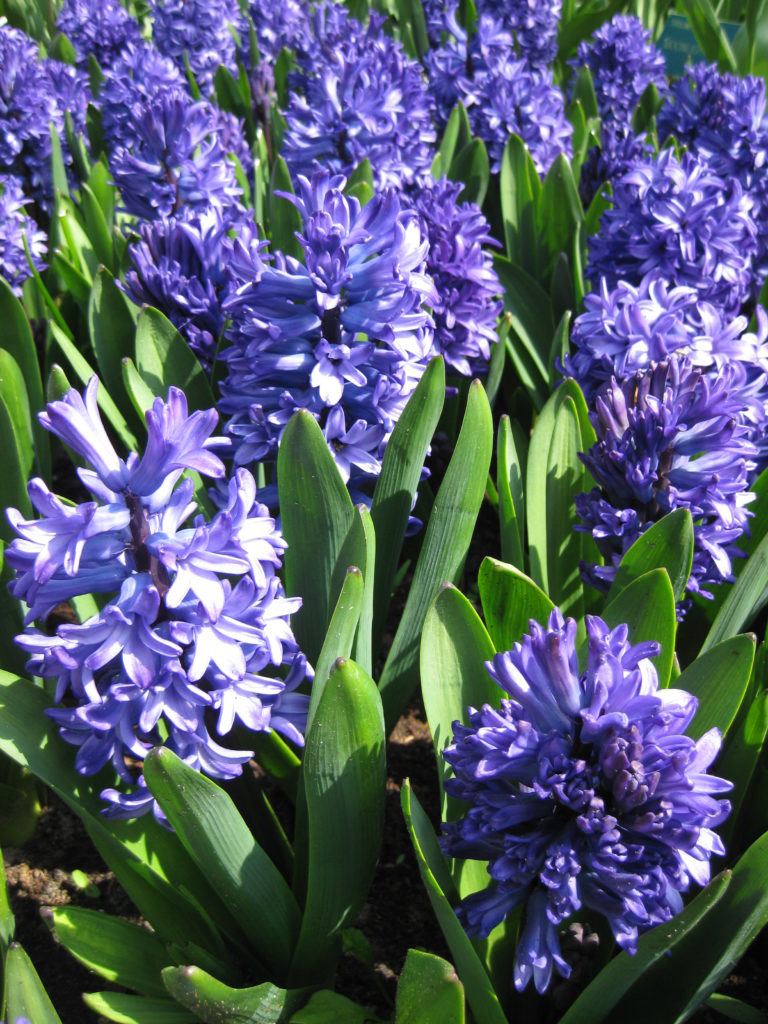
Hyacinthus ‘Atlantic’ – above
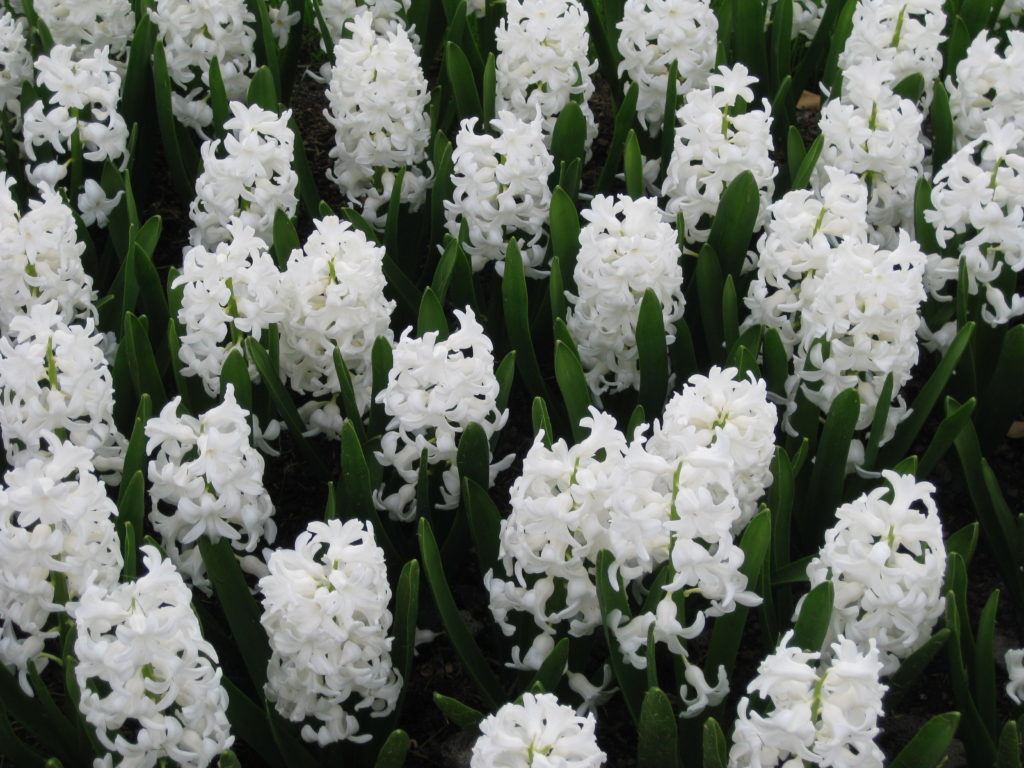
Hyacinthus ‘Carnegie’ – above and below
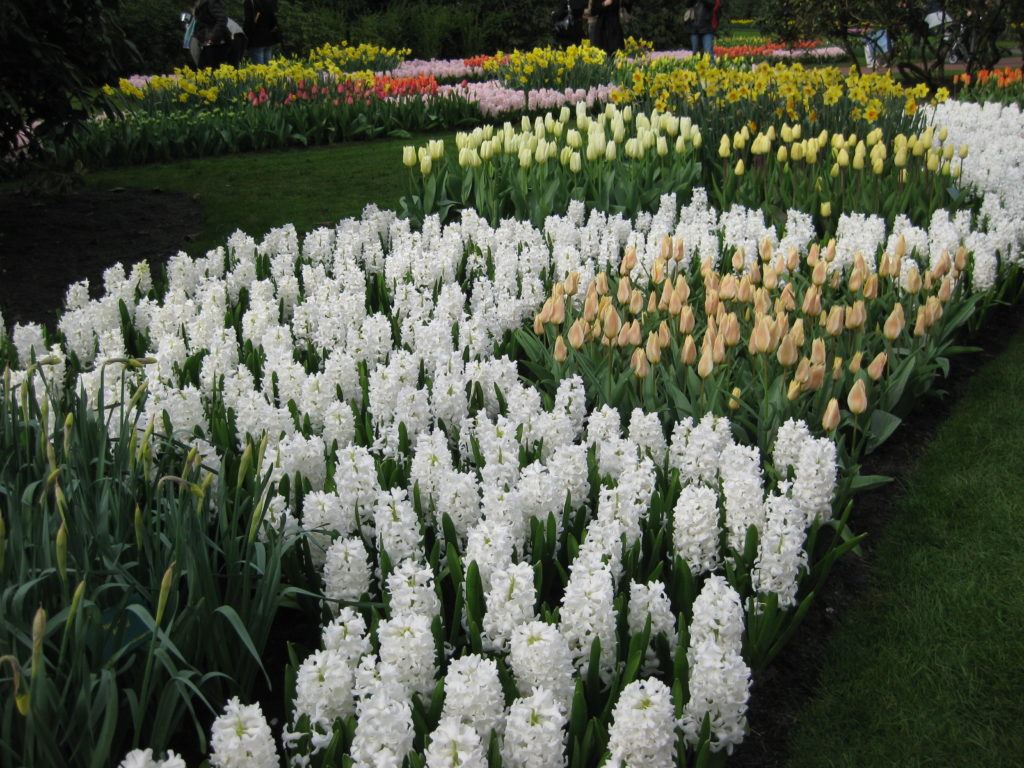
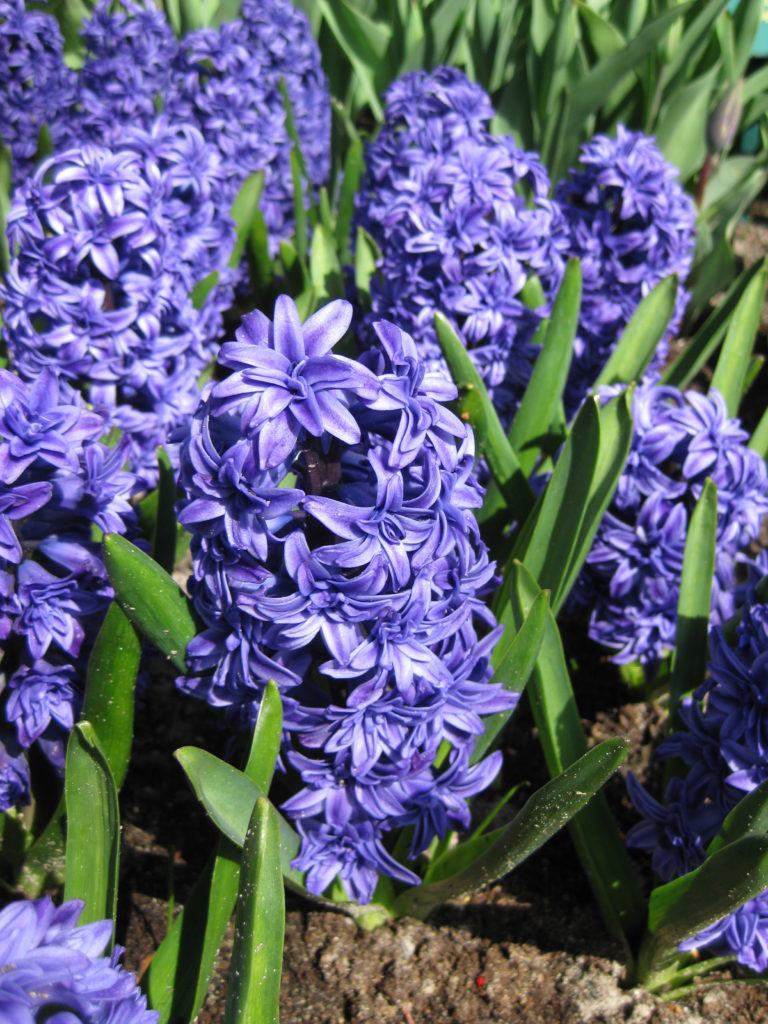
Hyacinthus ‘Crystal Palace’ – above
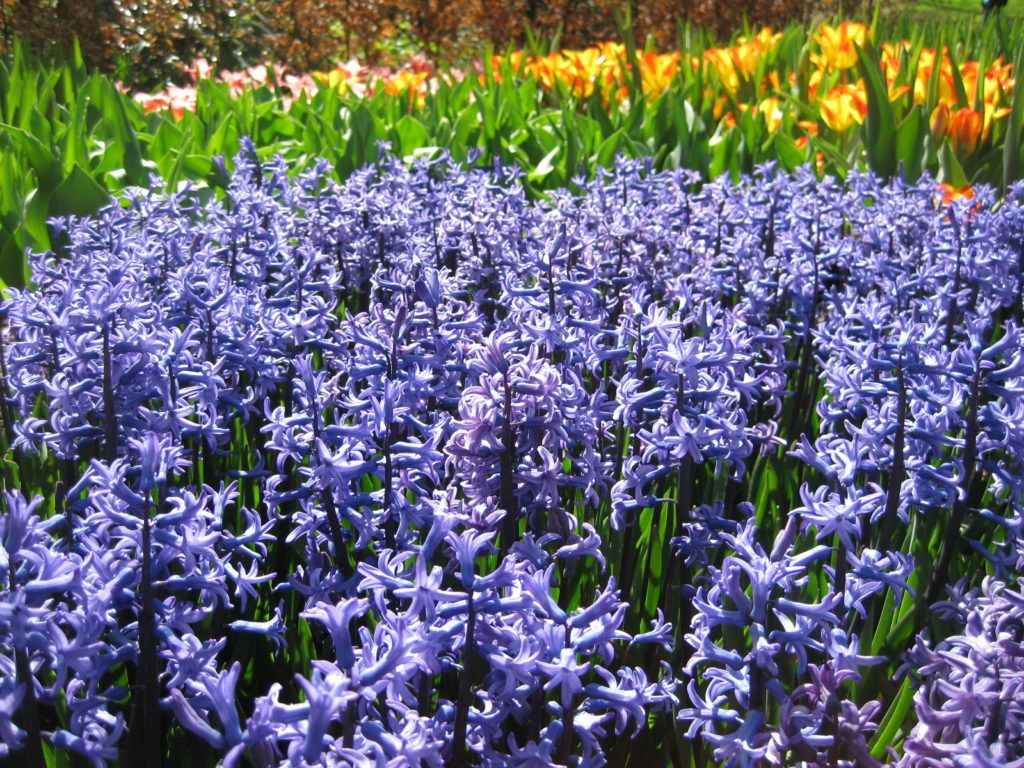
Hyacinthus ‘Anastasia’ – above
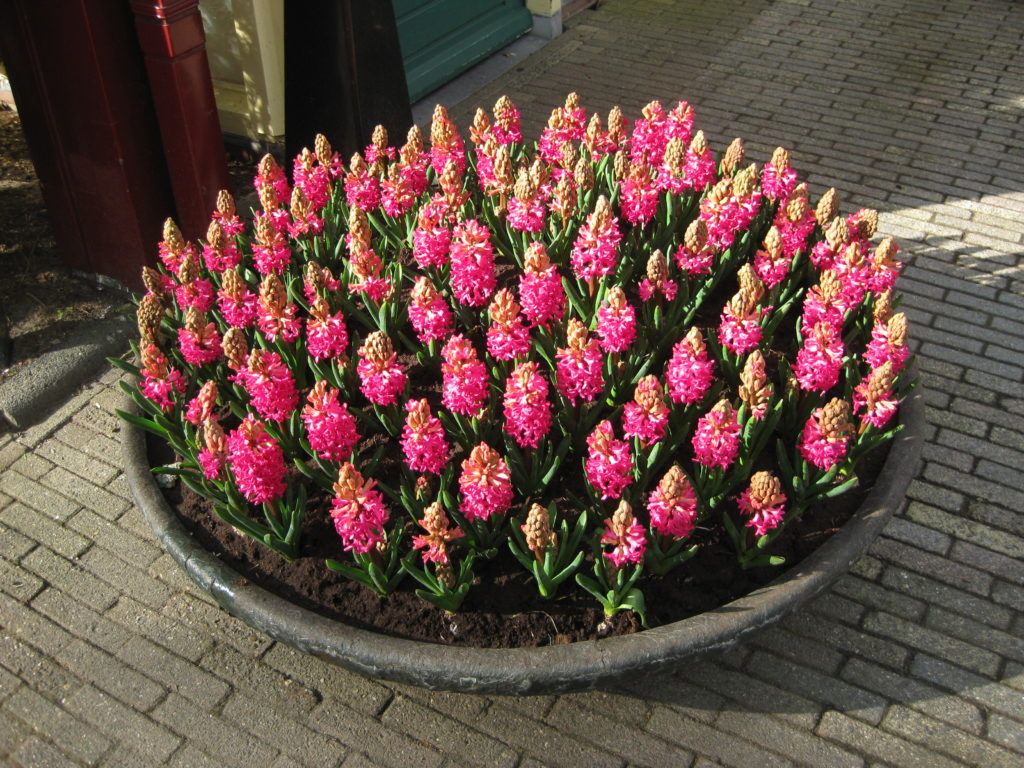
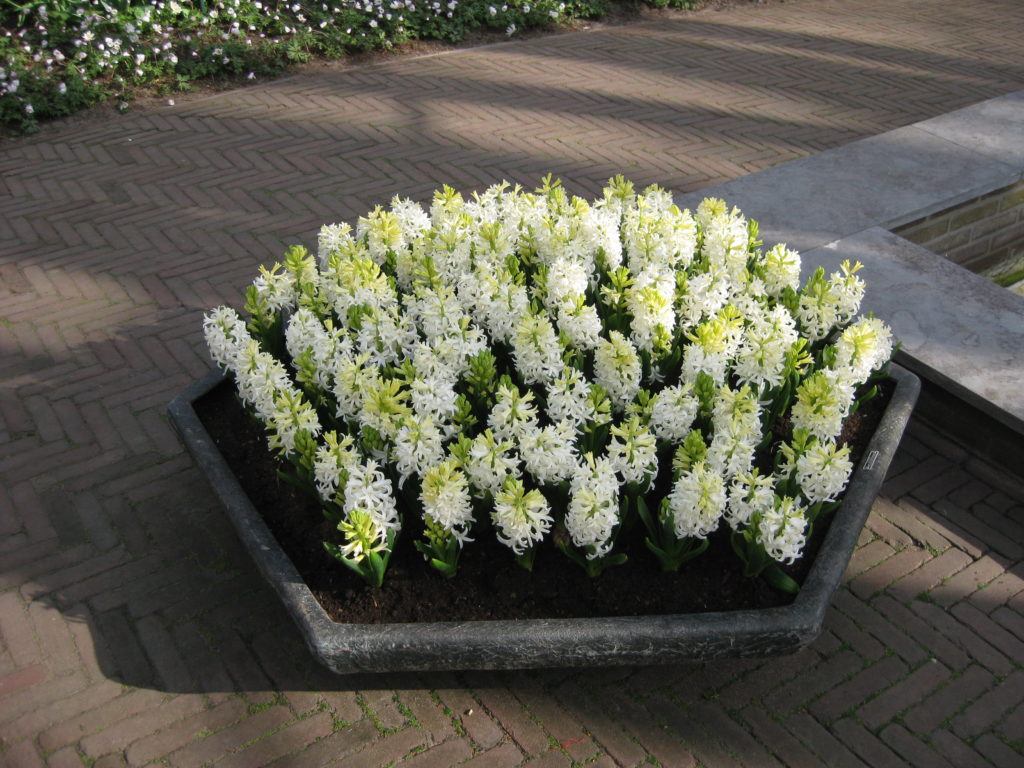
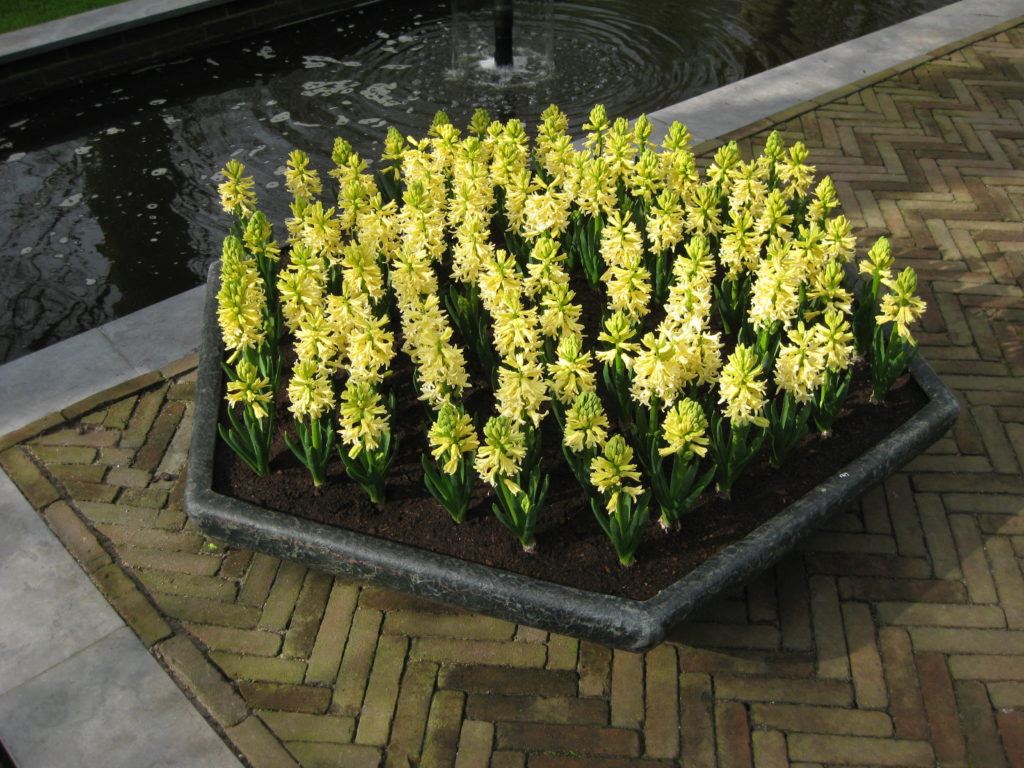
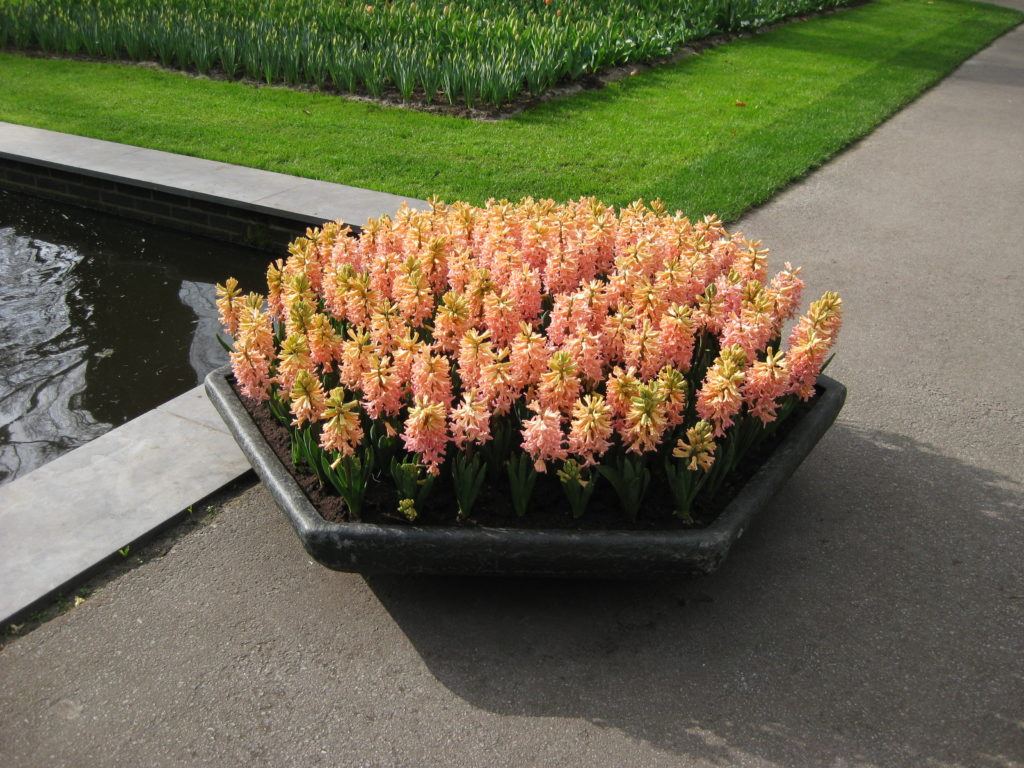
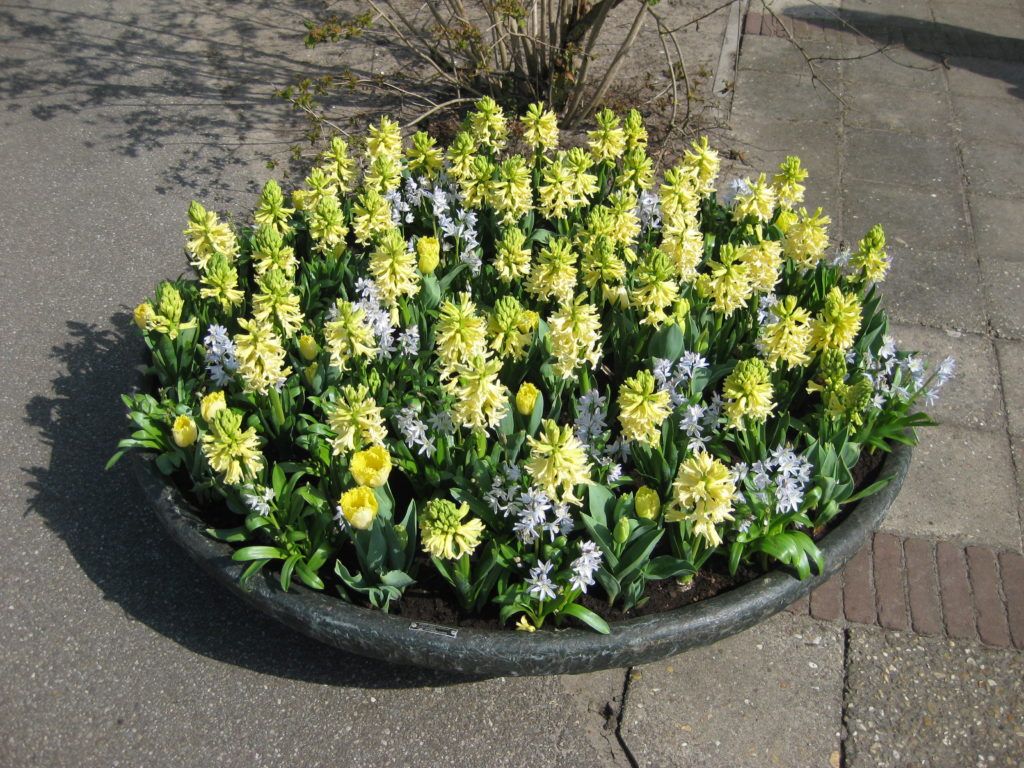
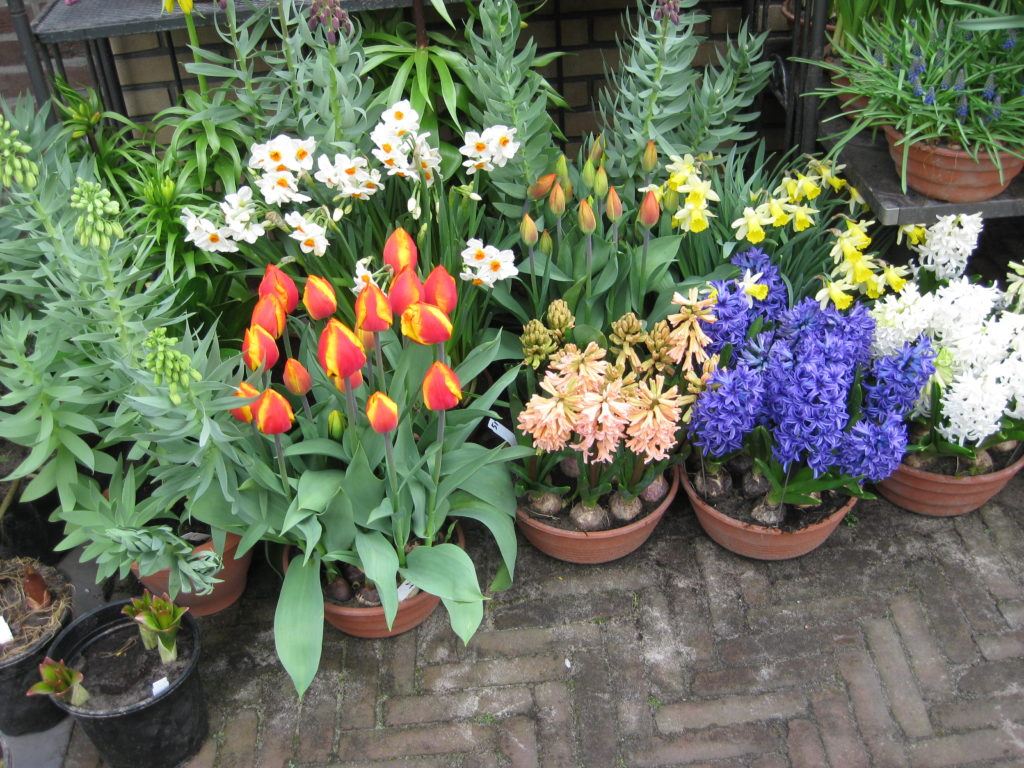
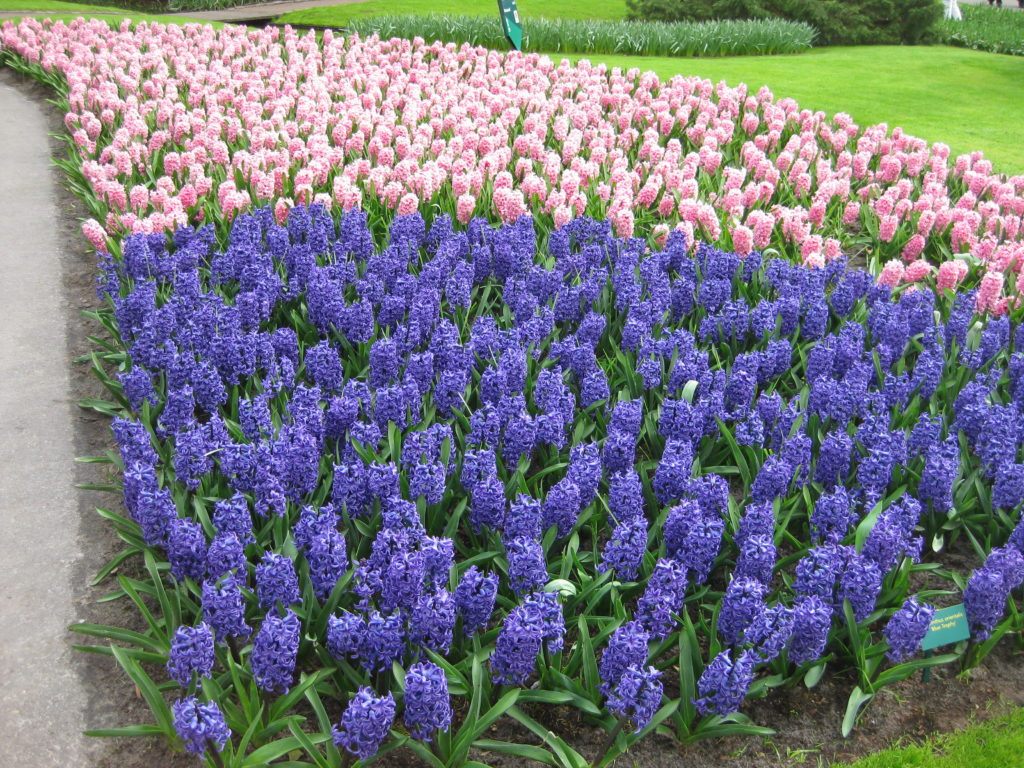
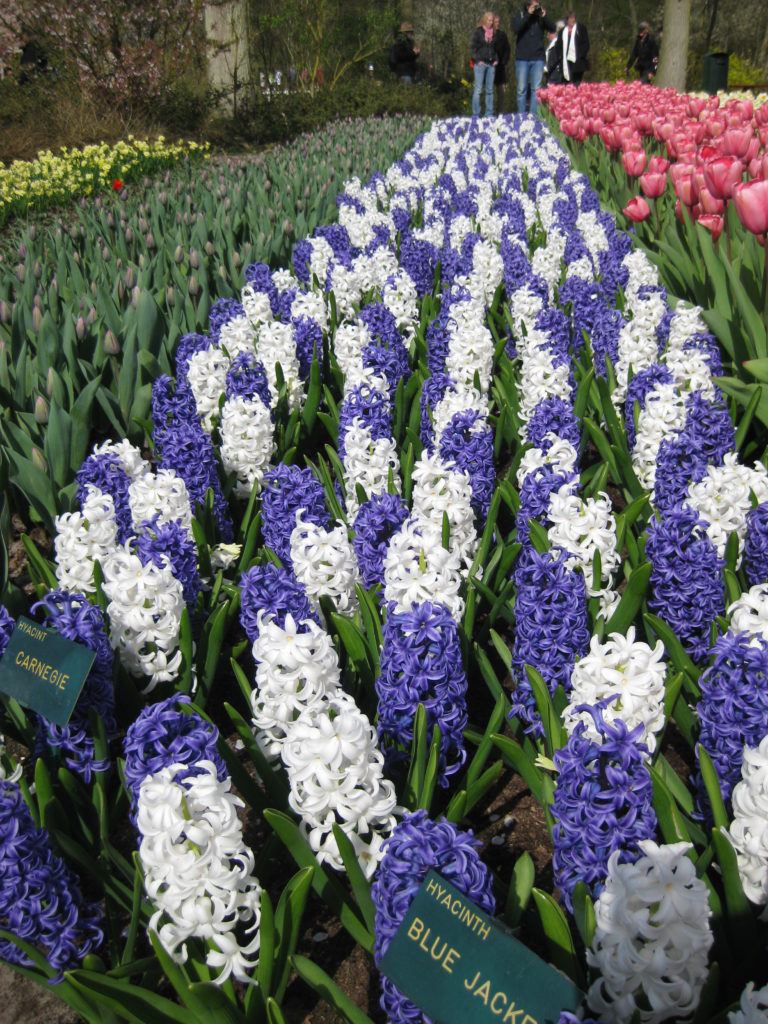
Hyacinthus ‘Carnegie’ (white) and ‘Blue Jacket’
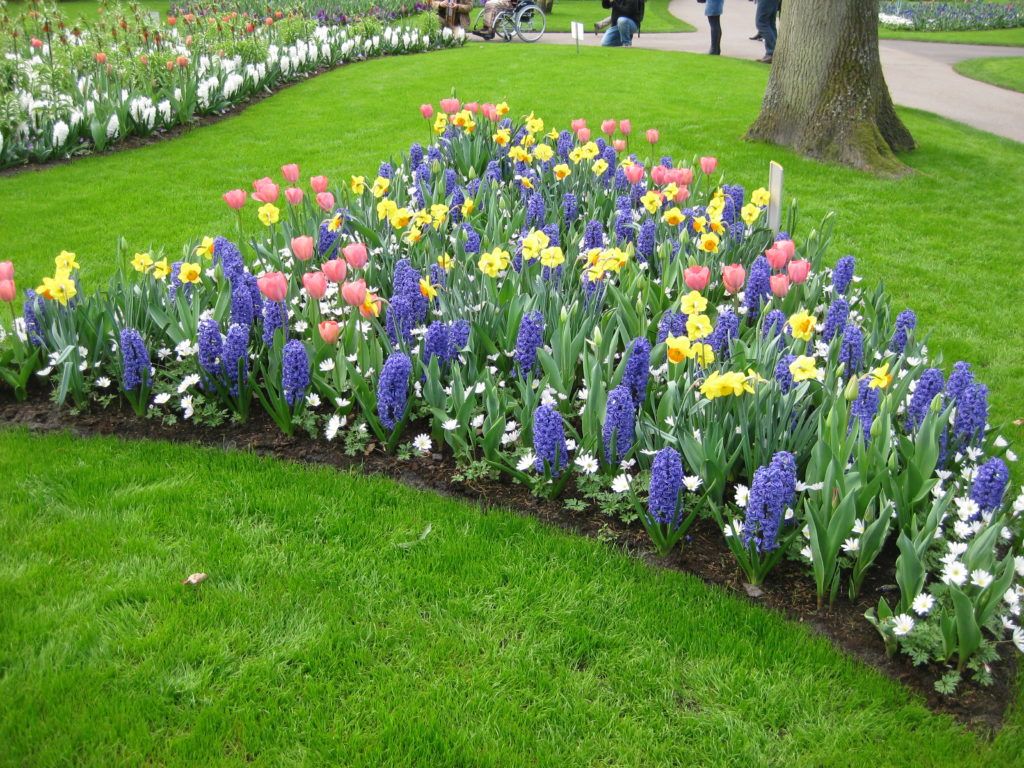
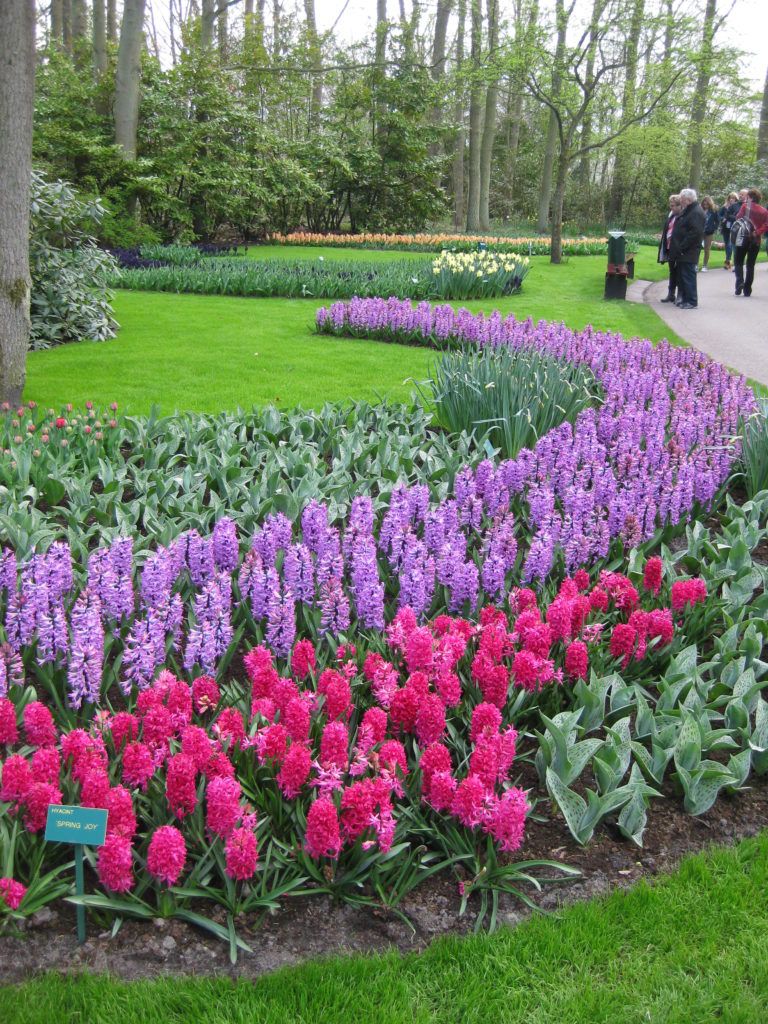
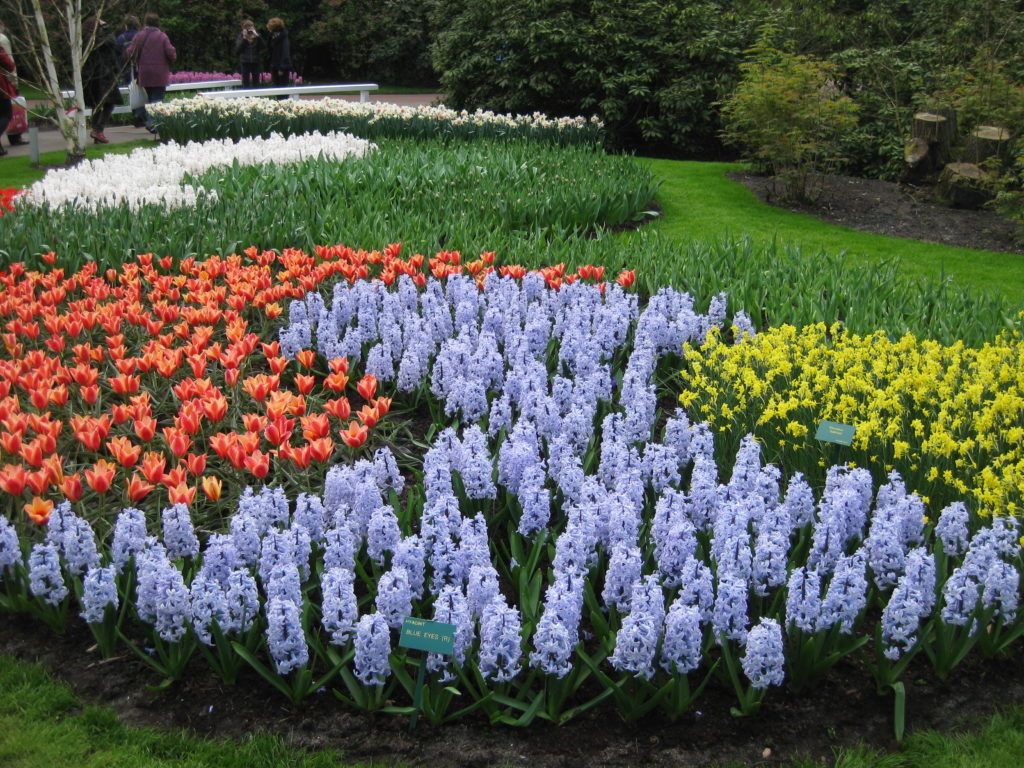
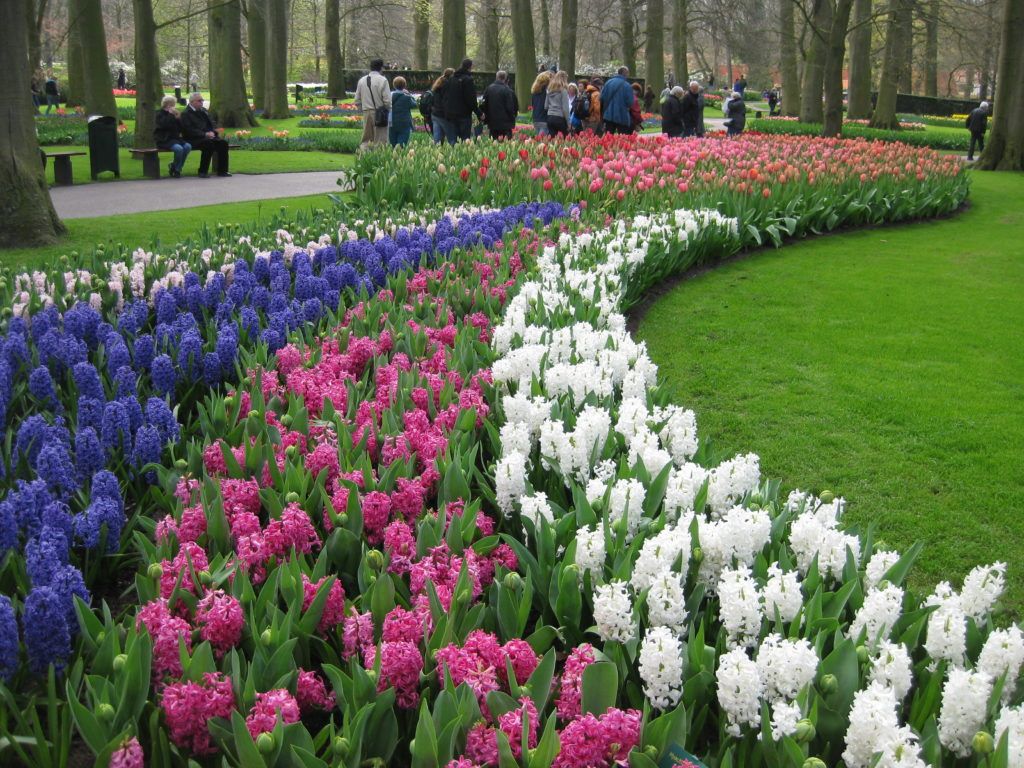
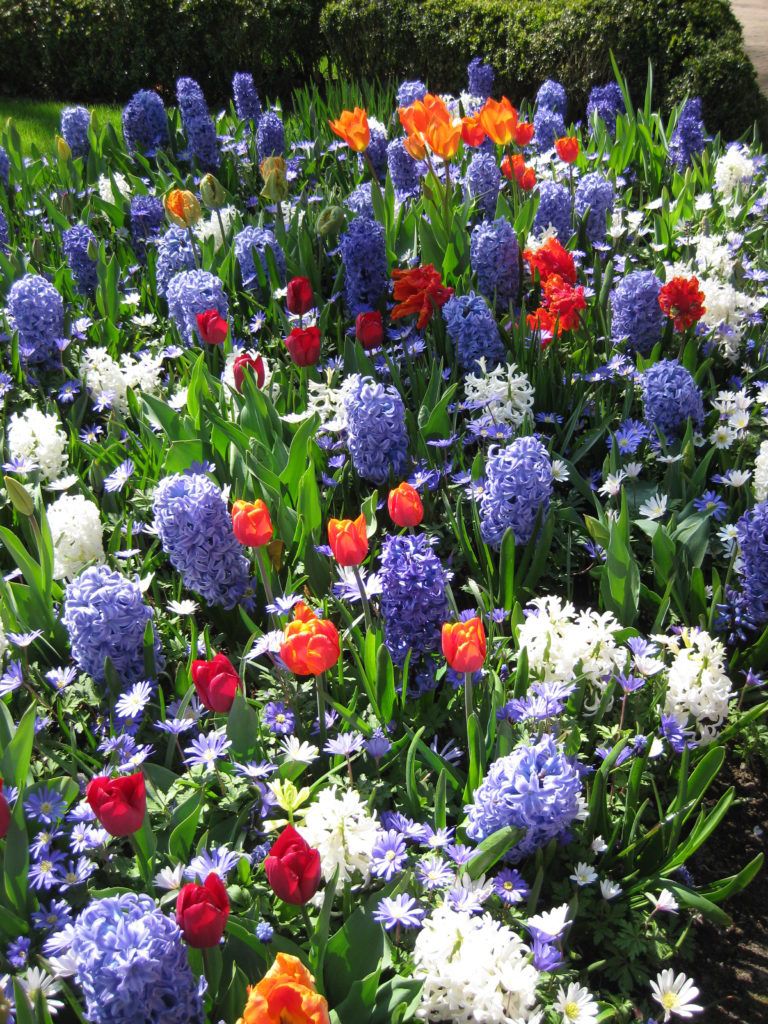
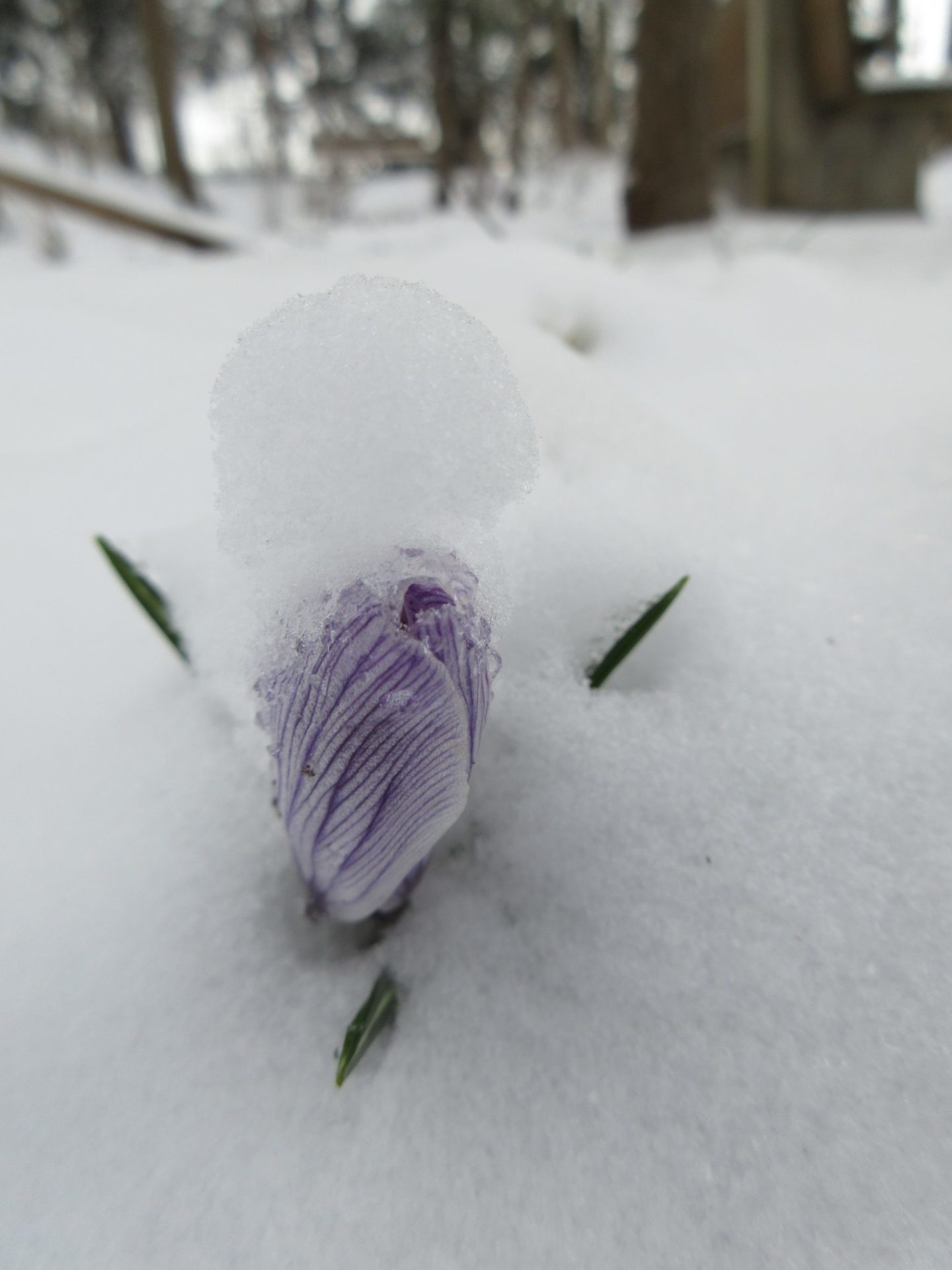
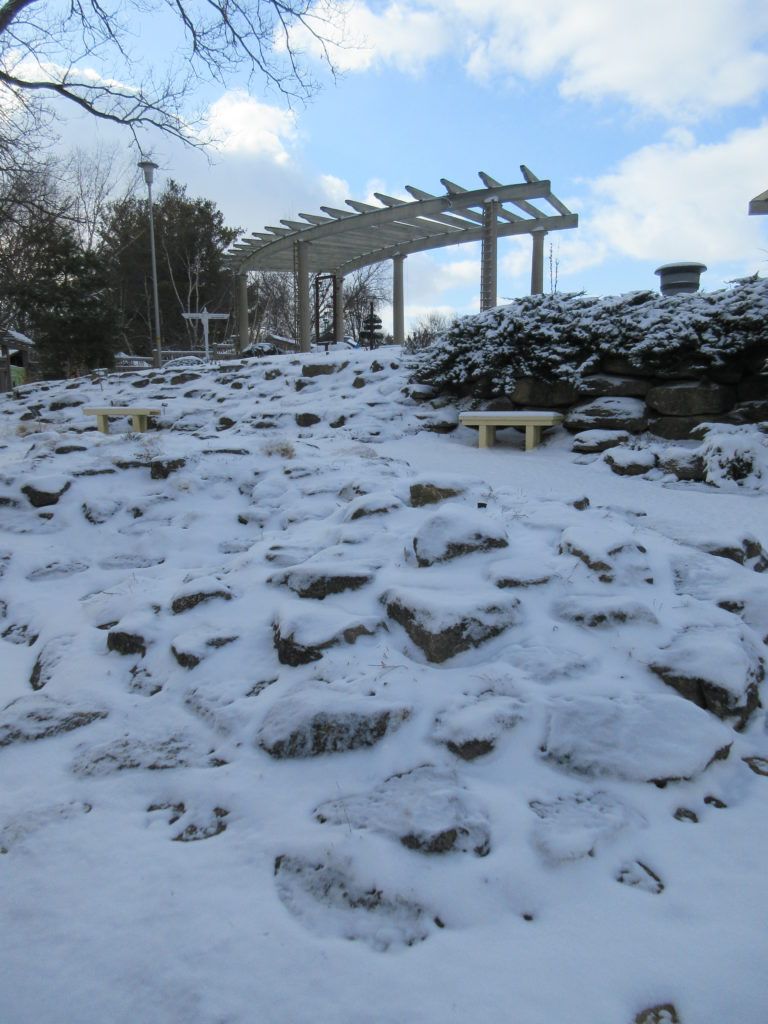
While it’s not unusual to have some late March snow showers, we don’t see it so often in April. This spring I’ve seen late snow showers across a wide range of the Northern and Eastern USA. We had a 1″ snowfall last night which looked beautiful out in the gardens (alpine garden above) but made for some challenging road conditions this morning. The snow didn’t keep us from having a productive day. Grounds staff included Larry H., Larry O., Bobby K. and me. Larry H. went out for pruning and other garden work after some indoor projects. Larry O. went on a major supply run and is getting our equipment ready for this spring. Bobby K. was organizing the carpentry shop for maximum efficiency. I’m trying to finish the last of our spring plant orders and am trying to keep up with special events preparations (particularly our Spring Plant Sale in May). Our volunteers included Steve E. and Urban out in the gardens; mulching and pruning respectively. Maury was in to run errands and we also saw a couple of others today.
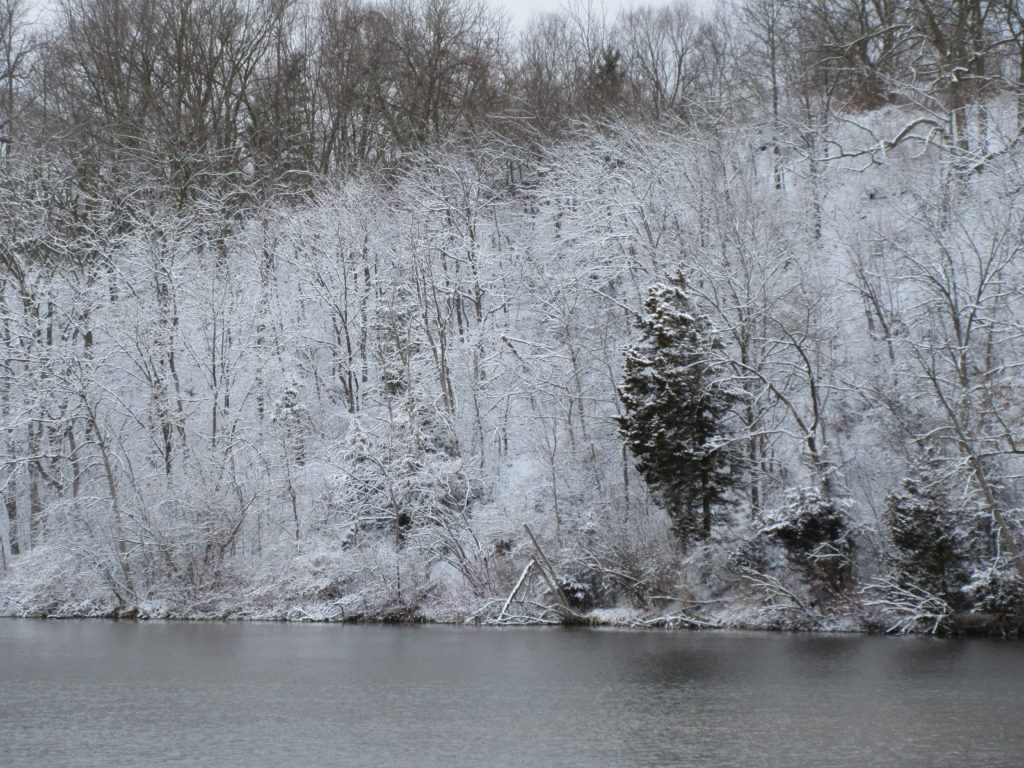
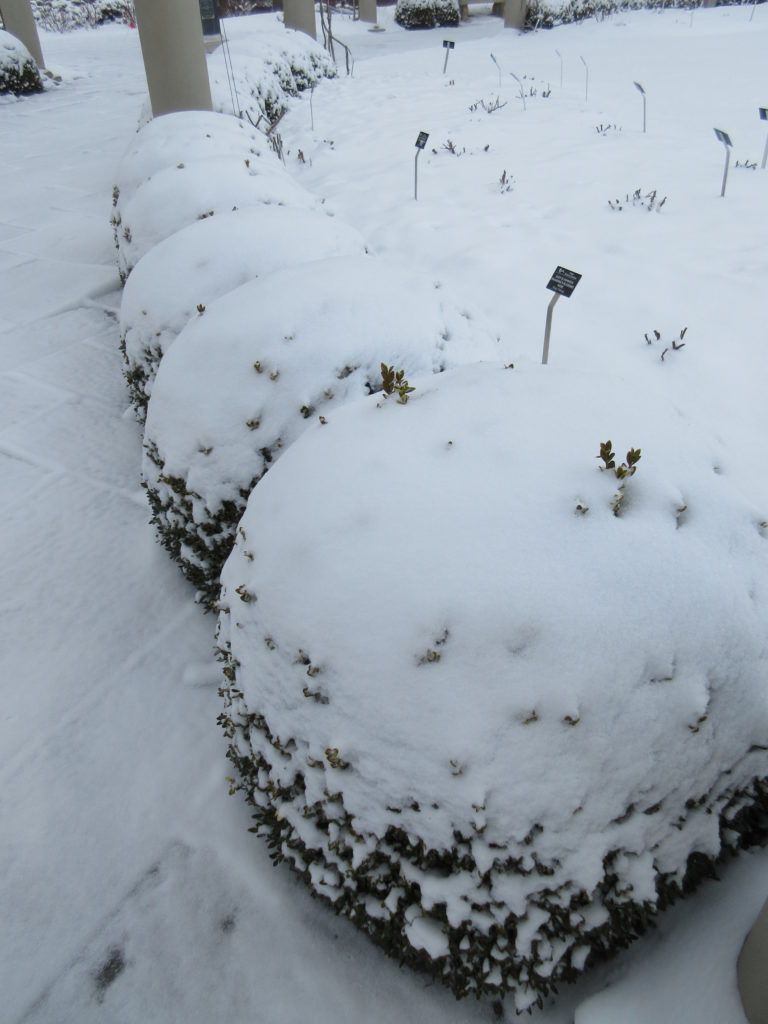
boxwoods (Buxus ‘Green Velvet’) in the formal gardens
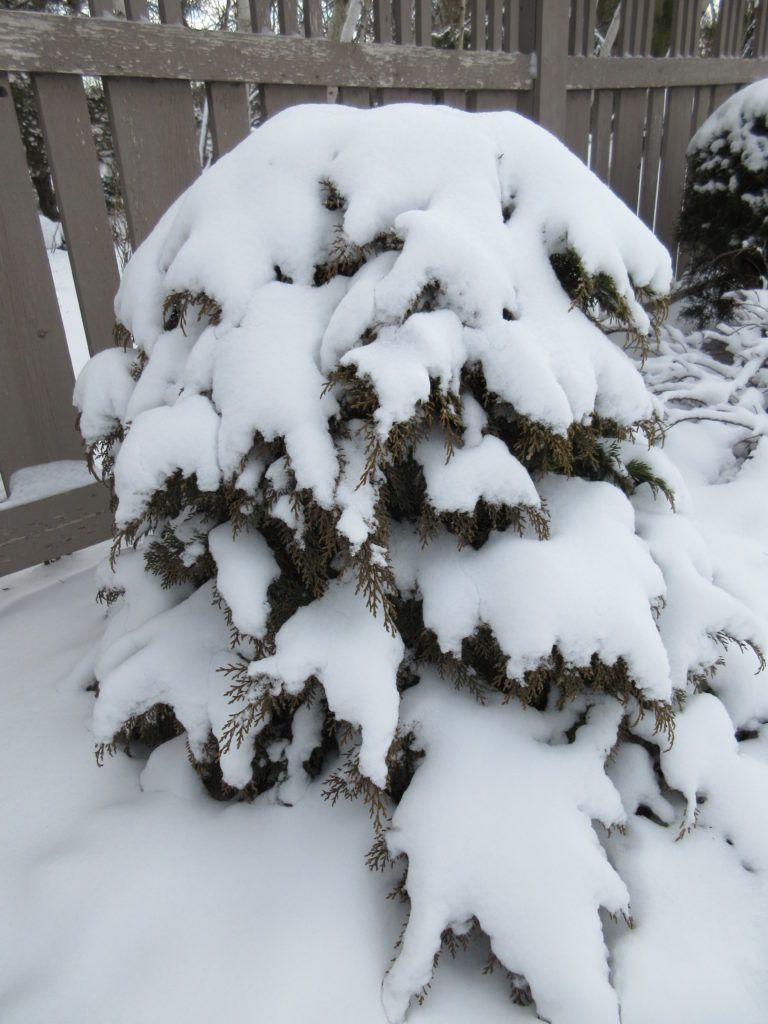
Siberian cypress (Microbiota decussata) – woody shrub
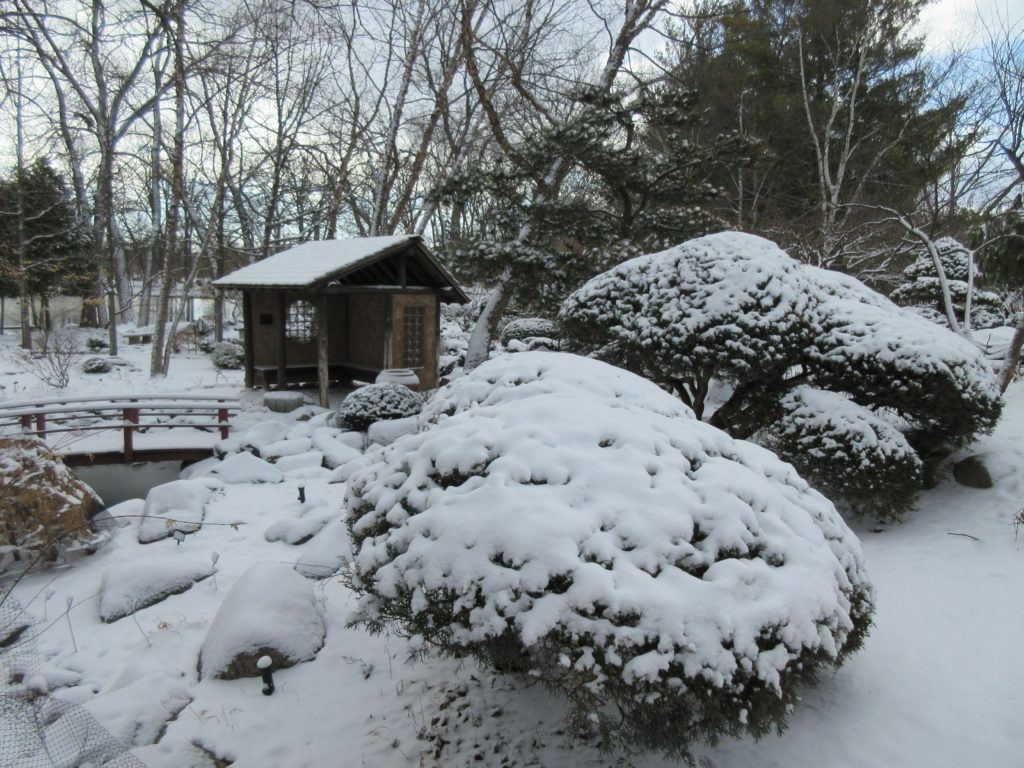
fern & moss garden
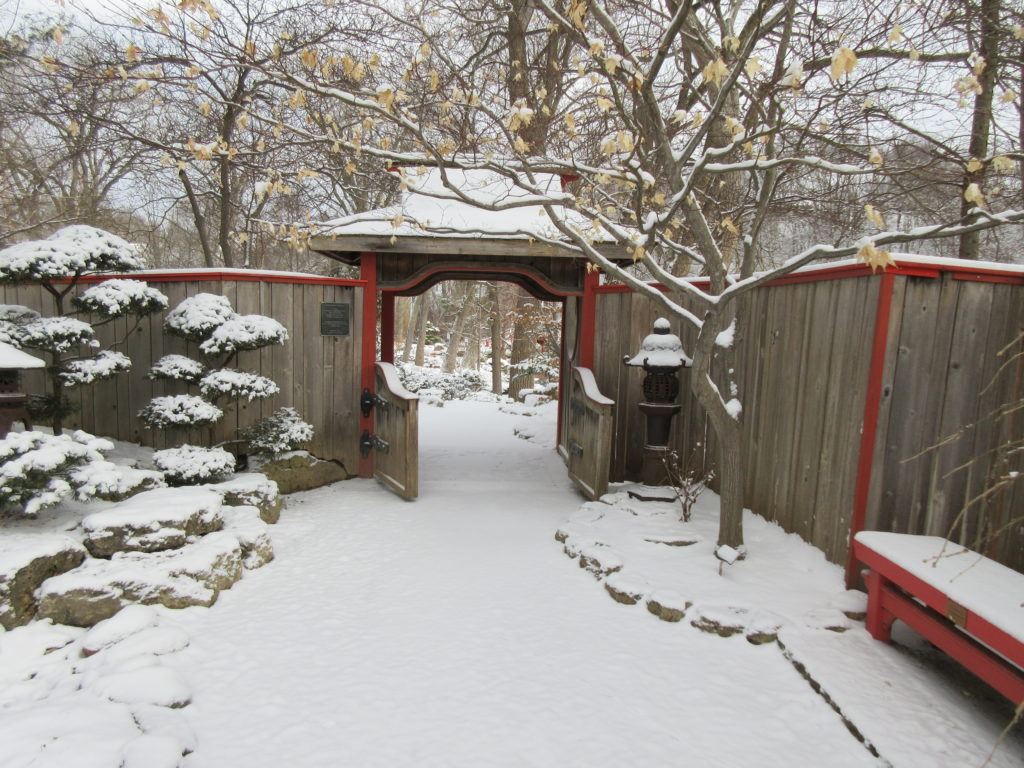
south entrance to the Japanese garden
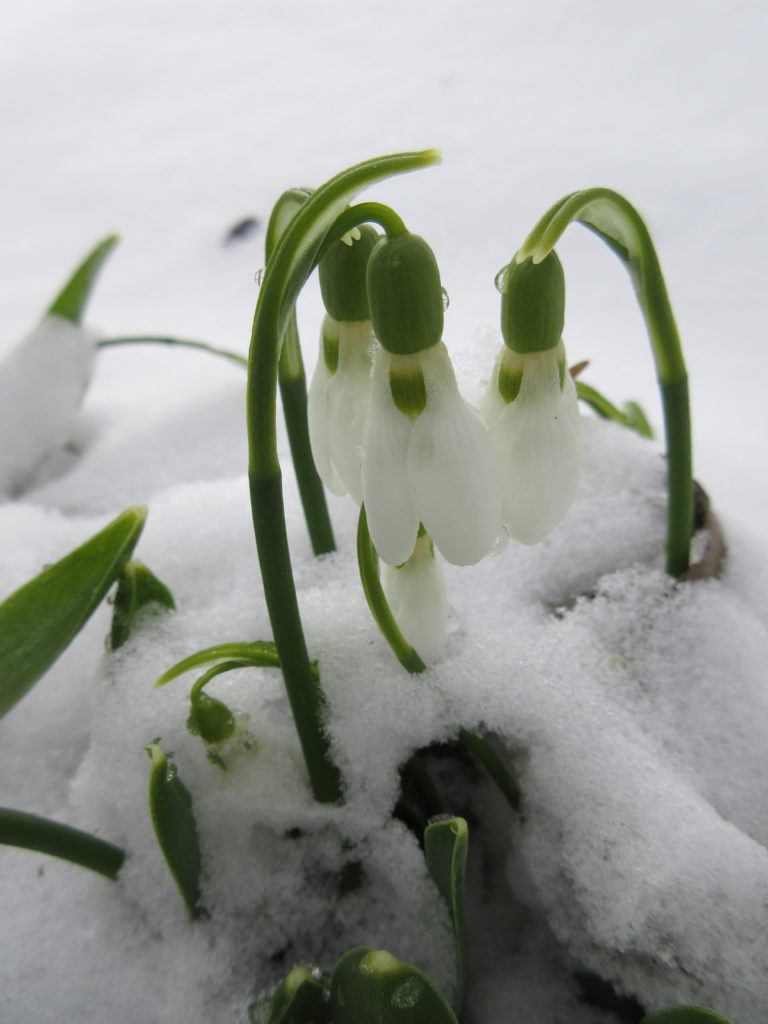
snowdrops (Galanthus sp.)
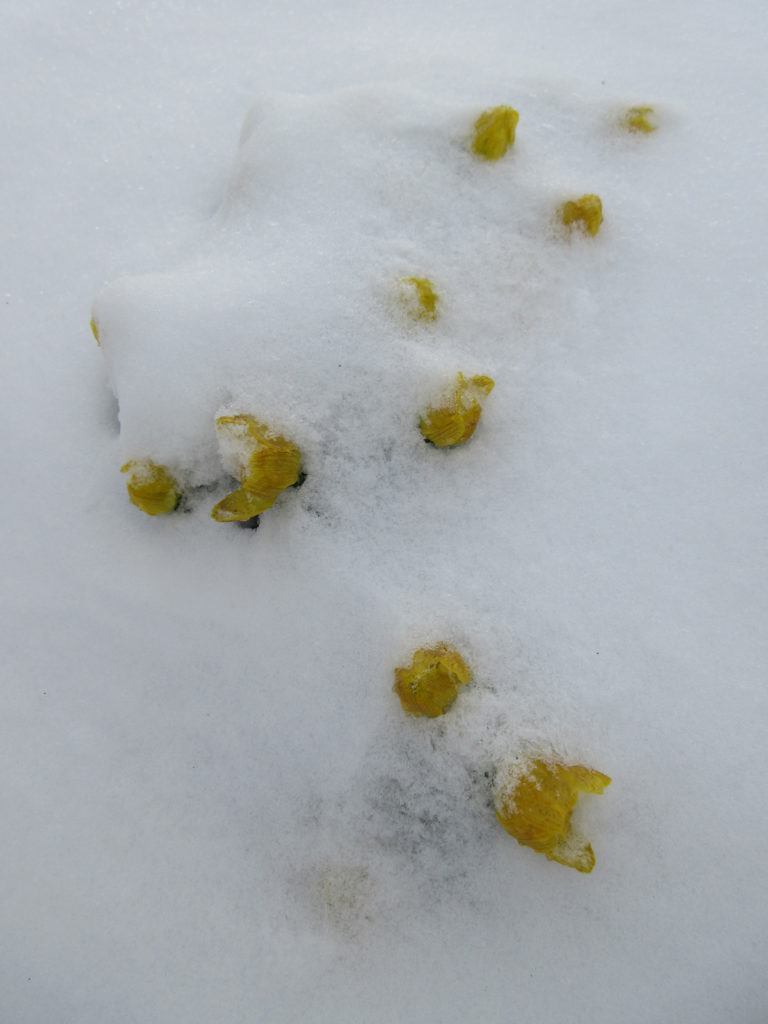
winter aconite (Eranthis hyemalis)
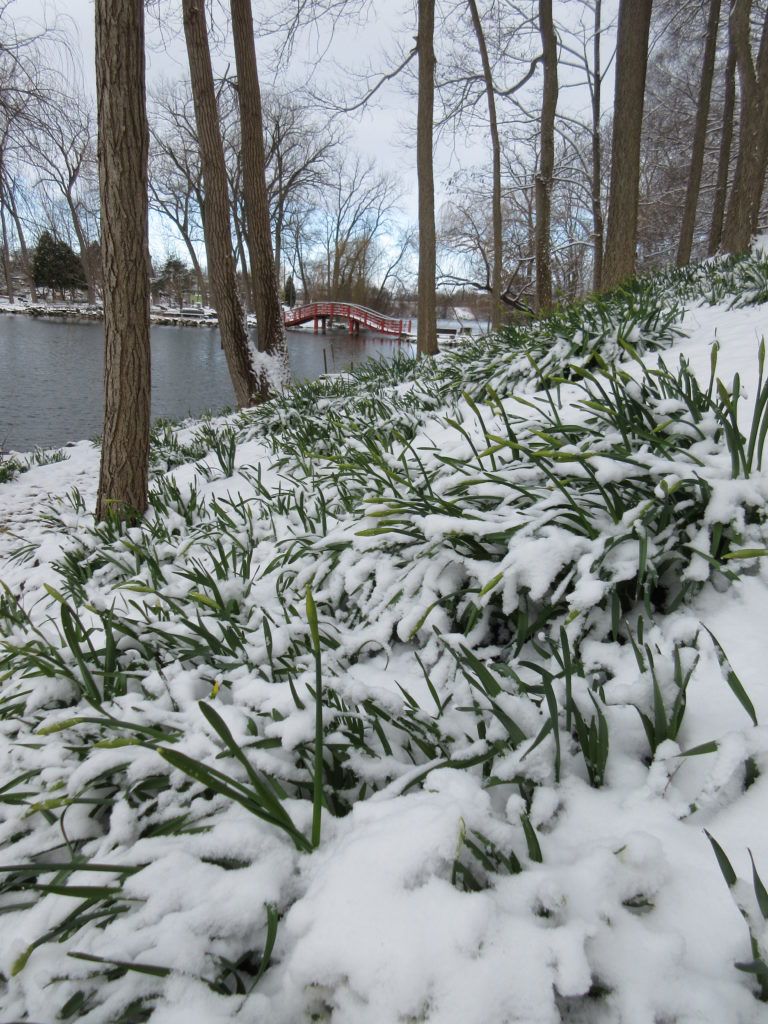
daffodils (Narcissus) above
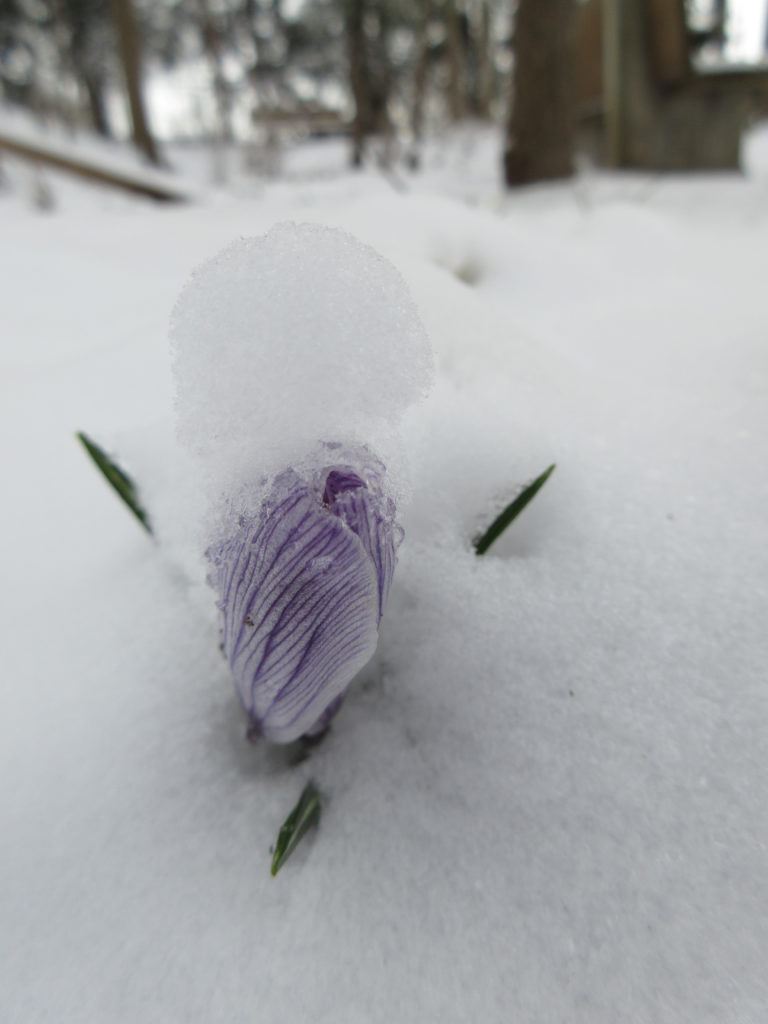
crocus (Crocus sp.)
